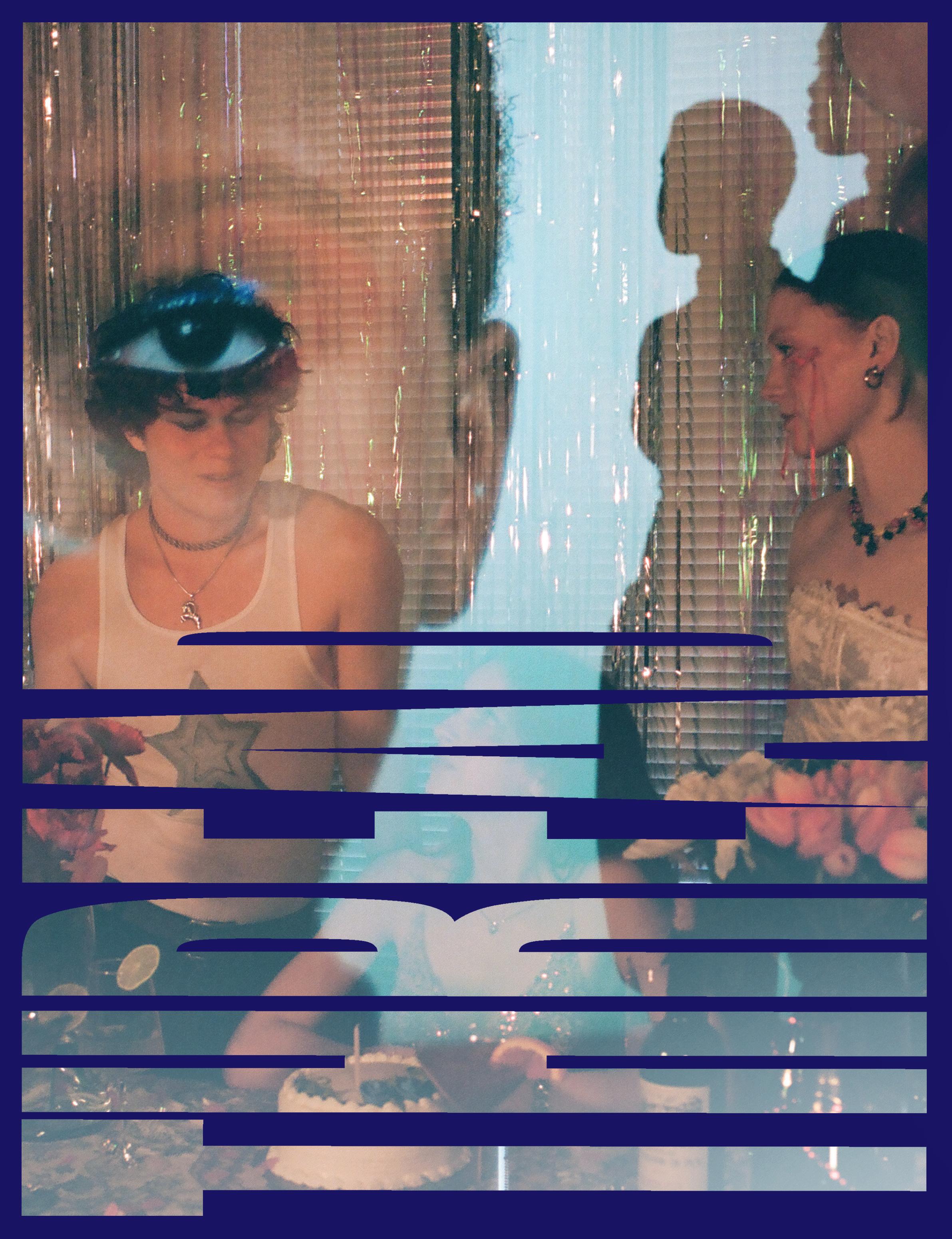
TESTIMONY OF LIVING ISSUE NO. 23 SS24


Cornell University is located on the traditional homelands of the Gayogohó:no (the Cayuga Nation). The Gayogohó:no are members of the Haudenosaunee Confederacy, an alliance of six sovereign Nations with a historic and contemporary presence on this land. The Confederacy precedes the establishment of Cornell University, New York State, and the United States of America. We acknowledge the painful history of Gayogohó:no dispossession, and the honor of ongoing connection of Gayogohó:no people, past and present, to these lands and waters.



As Cornell’s premier student-run fashion, art, and culture magazine, Thread aims to create a collaborative environment where Cornellians can learn to express themselves with different forms of mixed media. Thread cultivates and celebrates individuality among its members and models as well as through our partner campus groups and external organizations. We draw inspiration from students of all interests and disciplines to create a bi-annual publication, each showcasing a unique aspect of the human experience. Embedded within are a diverse array of perspectives and content creation we hope will continue to captivate our readers in years to come.
Web https://threadmag.org
Email thethreadmagazine@gmail.com
Instagram @threadmag
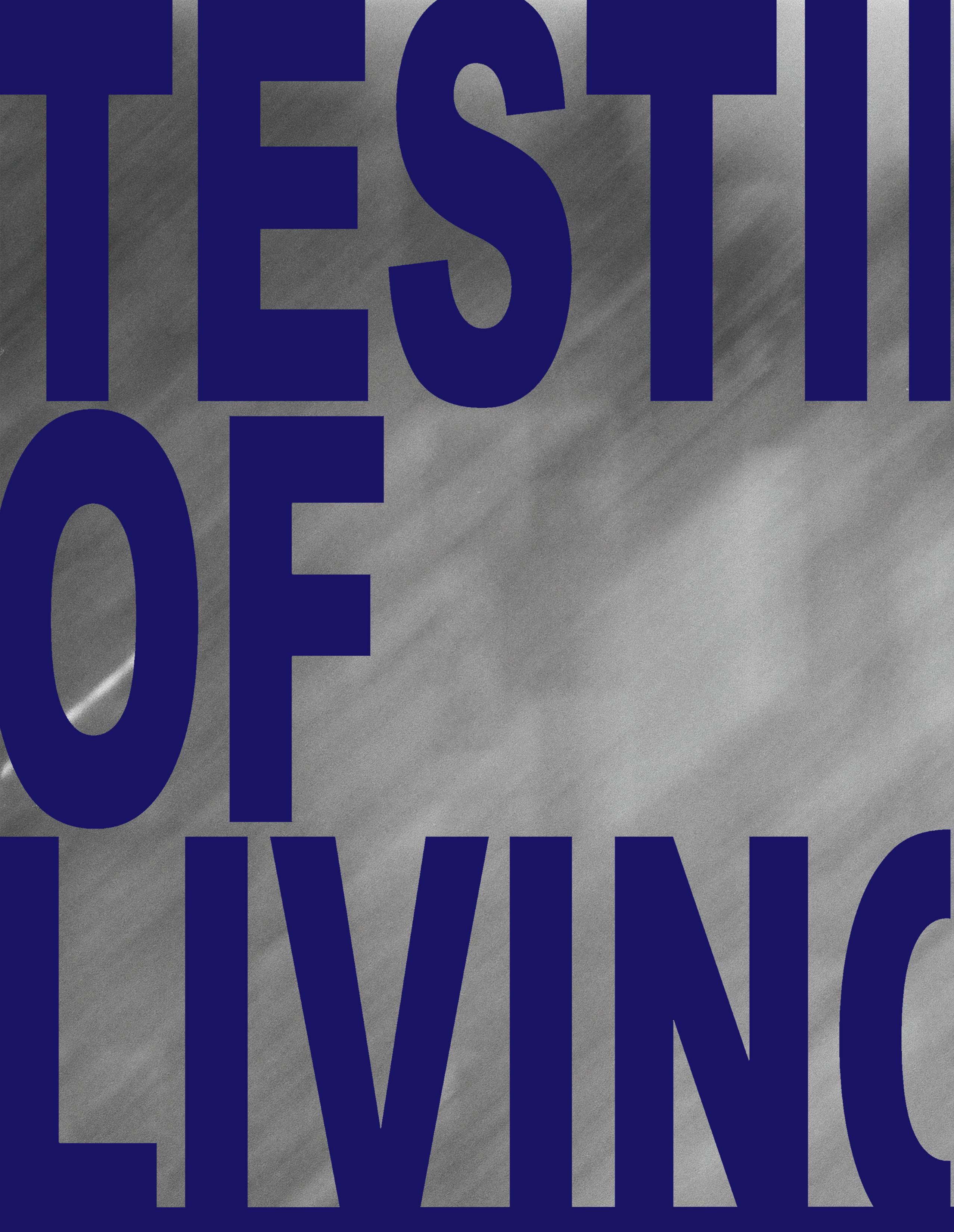
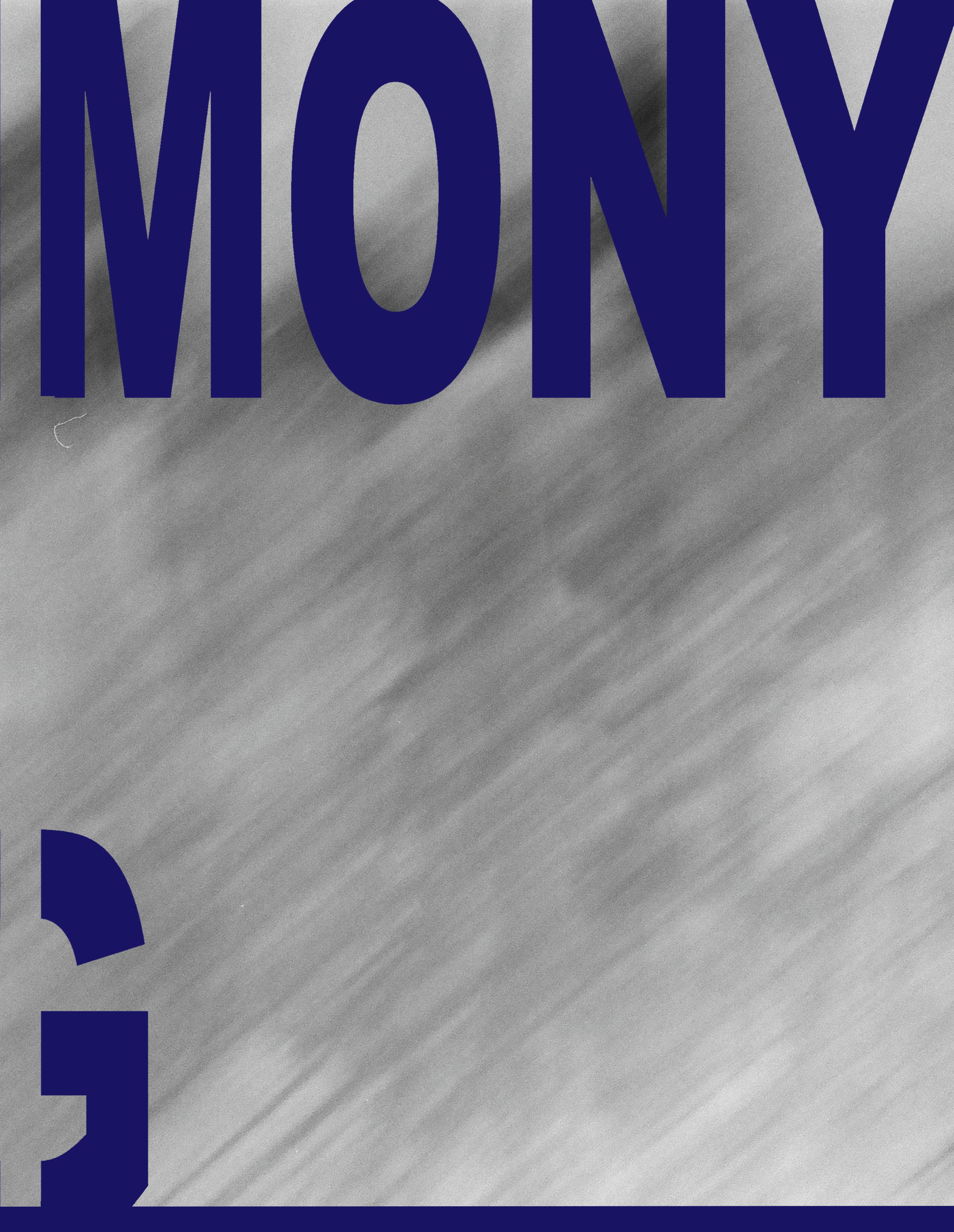
FOREWORD
“Whatever idea was never perceived by the mind was never in the mind. Whatever idea is in the mind, is, either an actual perception, or else, having been an actual perception, is so in the mind that, by the memory, it can be made an actual perception again.”
As John Locke wrote, inherent within humans is a longing to make an imprint on the world and leave a lasting memory. Together, our collective aspiration is to construct a legacy that celebrates our existence.
When I joined Thread during my first semester at Cornell University, I was immediately drawn to the community of creatives, each with distinct visions and voices. With the help and guidance of my supportive friends and family, I was able to grow not only as an individual but also as a team player, living through the journey of continuing to search for new ideas and find sources of inspiration in my environment.
Through my experiences as Assistant Art Director, Art Director, and now as Creative Director, the leadership and guidance of past eboard members and staff have become big sources of inspiration and motivation to further challenge and push forth the creative direction of the magazine.
Along with the joy of my youth, I often find myself experiencing fear, anxiety, and worry of what is to come in the future. In the midst of the rigorous fast-paced lifestyle of information overload and confusion, there is nothing more valuable and genuine than finding community and connection, which empowers us to come back to the fundamentals: learn to try new things, accept failure, and to let go.
Drawing inspiration from contemporary media, the influence of media on society, youth culture, and dystopian style influences, the common grounds of our experiences fascinated me and became a point of question: how do we move forward?
We must look back to the past, expanding upon our memories and experiences. With the goal of bridging the psychological and emotional sentiments of our generation and forging the connection between the creator and the reader, Thread’s 23rd issue “Testimony of Living” explores the emotional anecdotes and psychological narratives of our generation. Through our seven shoots, Digitalism, Introspection, Nostalgia, Amorism, Escapism, Pragmatism and Counterculture, we offer our honest, witty, and joyful response to the complex tapestry of modern life. I sincerely hope that this issue evokes a sense of comfort, solace, and of course, entertainment to anyone and everyone it reaches.
With love, Asuka Kurebayashi Creative Director


LETTER FROM THE EDITOR
All forms are transitory.
When Raquel Coren, former Editor-in-Chief and current Senior Creative Advisor, handed me her metaphorical baton, I have to admit I had no idea what I was in for. I accepted the position on behalf of my 16-yearold self, who had just discovered InDesign and wanted to become the Editor-in-Chief of Vogue.
As I’ve grown over this past semester, I’ve come to realize that this job entails so much more than a good outfit and an ability to make to-do lists. I handled a few crises, I was presented with choices that I could not have prepared for, and I considered the ways in which I contribute to, and deeply affect, my community.
This issue has taught me how to cope with change, and most importantly, how to lean on friends throughout it. I meant what I said: on the surface, everything is transitory. Money, aesthetics, trends, styles—they all inevitably flow because we, as humans, are restless. This perpetual movement is neither good nor bad. It is something we can only face by accepting it as it is.
Asuka, the Creative Director of this issue, conceptualized a theme that can anchor us as we undergo change. An avenue of expression for our generation, this issue is testimony to all that we’ve witnessed and endured, from surviving our first situationships to grappling with the death of punk. The art of creating magazines is the art of recording the cultural discourse, conveying a narrative that reflects its time. Within this art form, Asuka allowed us to place our experiences on display and immortalize them. In creating this issue, we acknowledge that nothing will ever be the same, but our experiences will always exist.
I would like to acknowledge the following members of Thread: Raquel, Ryan, Krisha, Val, Taylor, Misha, Iggy, Seth, Carolyn, Eliot, Eve, Millie, and Jesse. Thank you for providing me with your support, time, hard work, and friendship.
In the past few letters, former venerated Editors-inChiefs have mentioned that they partook in what was once a rite of passage: writing the editor’s letter at 2 a.m. the night before we go to press. While tomorrow I have to send the magazine to print, I am proud to say that it is actually 10 p.m. as I write this. Change is natural. We can cope together.
Sincerely,
Alexandria Fennell Editor-in-Chief

P.S. I’ve always wanted to write a Letter from the Editor. Guys, we made it!!
While this magazine is a physical representation of our persistence as we brave change, the members of and contributors to this magazine have created a community of creatives who remain steadfast in their commitment to not only this magazine, but to one another. To the staff, eboard, models, and all those who helped us, this issue would not exist without your dedication.
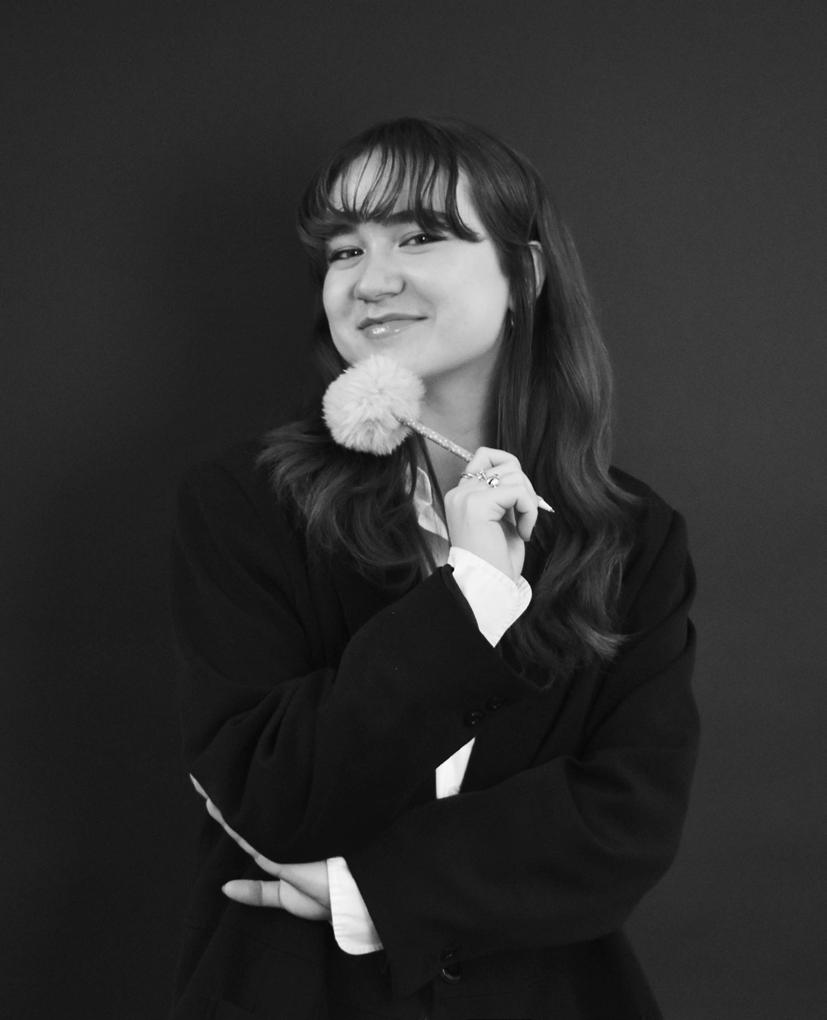
Editor-in-Chief
Alexandria Fennell
Managing Editor
Ryan O’Donnell
Print Director
Valerie Chang
Communications Director
Krisha Desai
Creative Director
Asuka Kurebayashi
Senior Creative Advisor
Raquel Coren
Art Directors
Isabel Mina
Lillian Casazza
Ella Grimm
Beauty Directors
Taylor Brown
Alina Chisti
Editorial Directors
Jillian Walker
Kaelyn Sandifer
Fashion Directors
Misha Caternor
Kayla Hsu
Photography Directors
Sophie Shadid
Jade Nguyen
Casting Director
Susanna Burr
Collaborations Director Erin Yoon
Community Director Rahanna Bisseret Martinez
Events Director
Eliot Lee
Film Director
Carolyn Dunn
Finance Director Emma Dow
Sales Director Ruth Kim
Social Media Graphics Director Seth Stephenson
Social Media Strategy Director Iggy Estrada Cavero
Web Director Tasnimul Taher
EBOARD
Samika Agarwal
Ianna Banfield
Olivia Bell
Lorenzo Blanco
Derek Block
Paige Burch
Oscar Callamari-Abrams
Lilian Cao
Grace Chan
Nina Chehab
Alexandra Chou
Matthew Correa
Ceci Corsello
Stella Crawford
Marge Dalseth
Athena Deng
Tricia Derecho
Jasper Drake
Renee Du
Ayon Dutta
Ziko Elkobaitry
Tanya Fan
Miradyn Feist
Sophie Feldman
Dorothy France-Miller
Dia Ganjegunte
Jules Gembs
Kylie Gillen
Saskia Gonzalez
Lily Greenberg
Shrayes Gunna
Mila Haffar
Bella Hanson
Kate Harris
Roan Harvey
Augustine Haquet
Macarena Hesse
Emma Hogan
Louisa Howe
Shannon Hu
STAFF
Zoey Huang
Halsey Hulse
Keira Huffman
Sofia Iantosca
Simone Jacobs
Joonah Jang
Ashley Kim
Lauren Kim
Jas Khan
Rachael Kong
Anabelle Lau
Chap-Lum Lau
Brandon Lee
Brandon Leung
Maggie Levine
Jack Li
Jessica Li
Jolin Li
Myna Lim
Rosey Limmer
Jack Long
Hannah Luna
Luciana Nicole Luque
Sadie Mank
David Martinez Lopez
Lindsay McCormack
Devon Meenaghan
Madeline Milam
Kate Minn
Pranav Nair
Liriana Nezaj
Ivy Ng
Katie Noh
Shira Oelsner
Yoona Oh
Catherine Pak
Ria Panchal
Roma Patel
Ava Perez
Peter Radzio
Angelina Rappa
Ada Rauber
Beau Reid
Irenys Reyes
Yoolae Rho
Eve Riskind
Millie Roper
Kaia Ross
Savanna Rostad
Sasha Ryder
Brian Sa
Lucia Savoia
Hana Schultz
Rania Shah
Tej Shah
Aditi Shankar
Savannah Shaub
Imran Shitta-Bey
Grace Song
Kate Stiens
Sophie van Straten
Linda Sun
Jesse Szewczyk-Buff
Jamie Tang
Katherine Teitelbaum
Asfi Tias
Jolene Tsang
Cynthia Tseng
Laura Twizere
Nadirah Vander Linden
Chloe Wang
Alex Watson
Asya Wise
Gabriel Wolf-Velarde
Sinny Ye
Reya Yeddula
Fiona Yin
Sally Zhang
TABLE OF CONTENTS
DIGITALISM INTROSPECTION NOSTALGIA AMORISM ESCAPISM PRAGMATISM COUNTERCULTURE 12 20 28 36 44 54 62

DIGITALISM
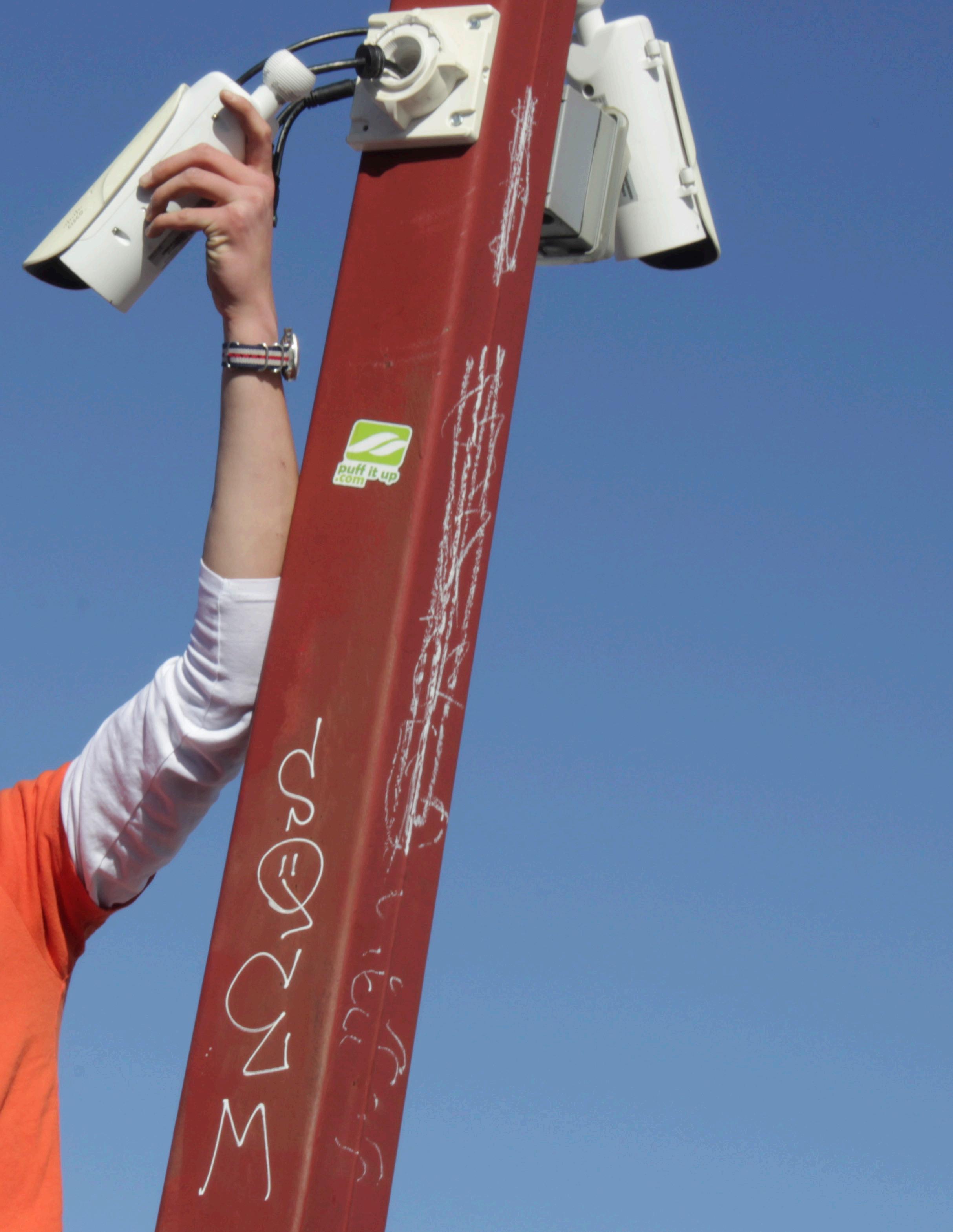
Directors: Seth Stephenson, Erin Yoon
Models: Eliane Ferrer, Jeffrey Iyamah, Meryem Legesse, Elise Nishii-Kim, Luke Szathmary
Art: Samika Agarwal, Sasha Ryder, Chloe Wang
Beauty: Grace Chan, Macarena Hesse
Creative: Roan Harvey, Lindsay McCormack, Ava Perez, Ada Rauber, Savanna Rostad, Brian Sa
Editorial: Olivia Bell
Fashion: Dia Gantegunte, Louisa Howe
Photography: Brandon Lee, David Martinez Lopez, Angelina Rappa, Cynthia Tseng
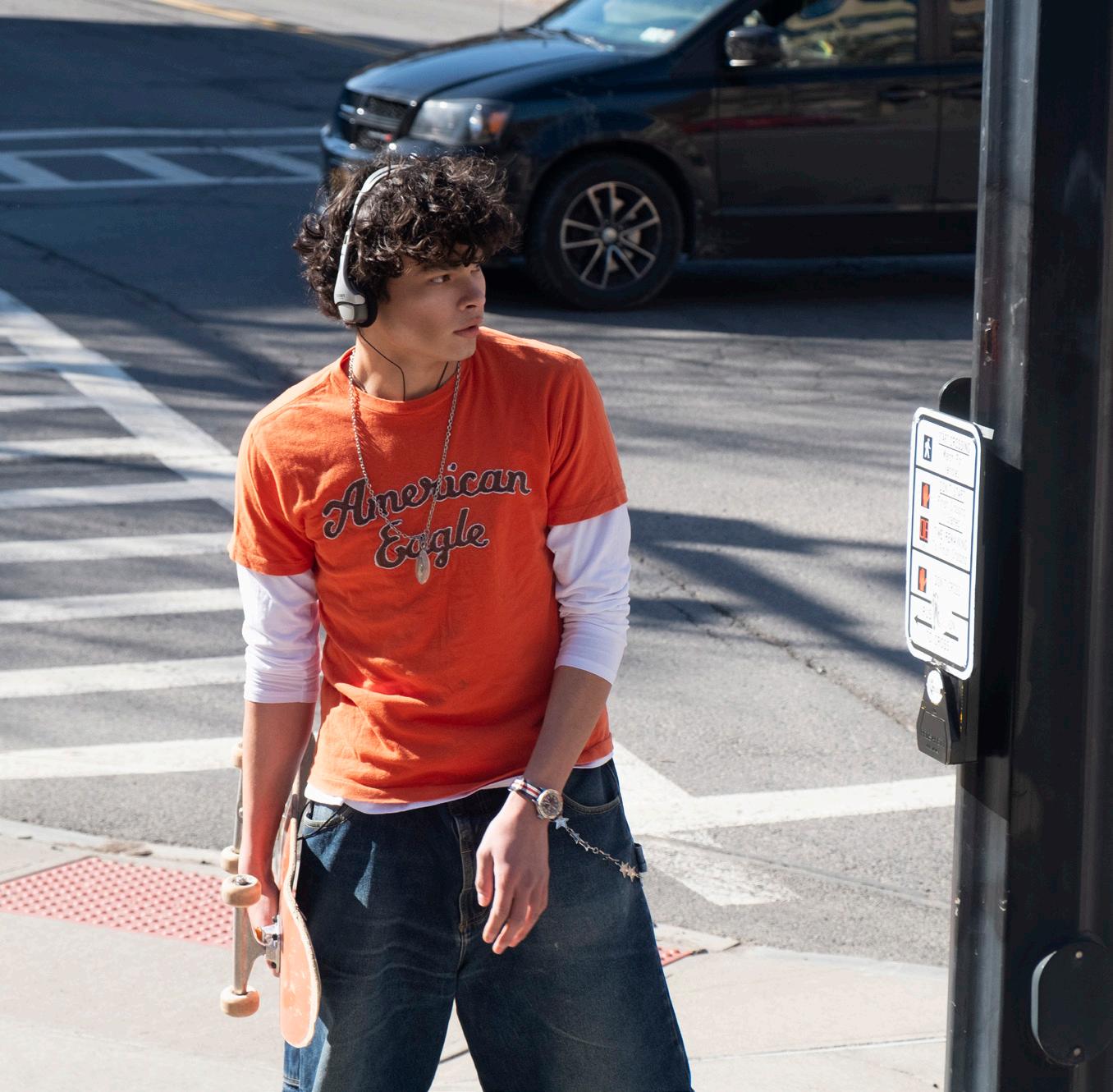


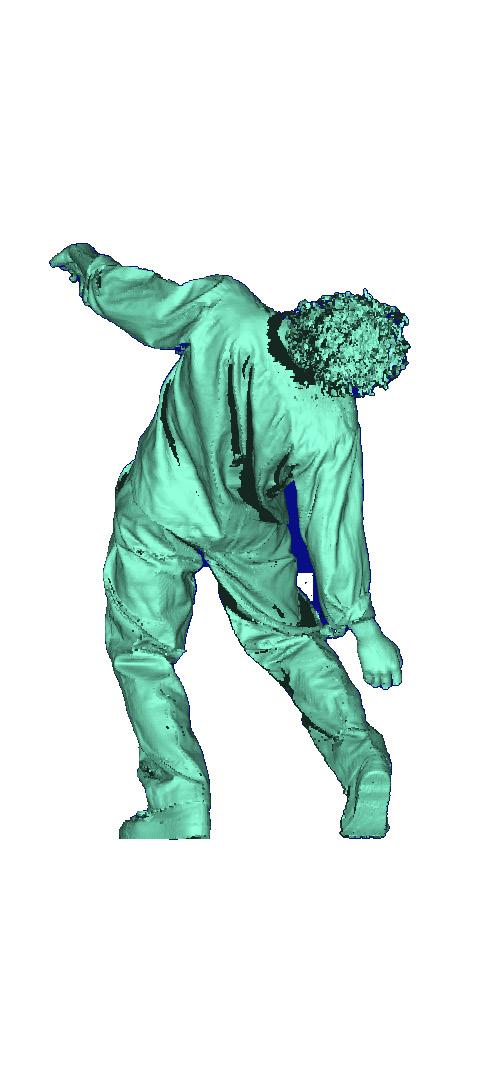




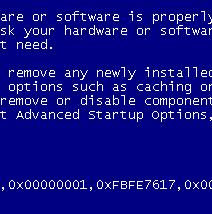

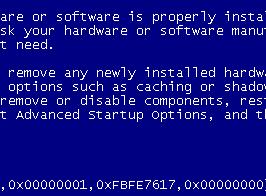


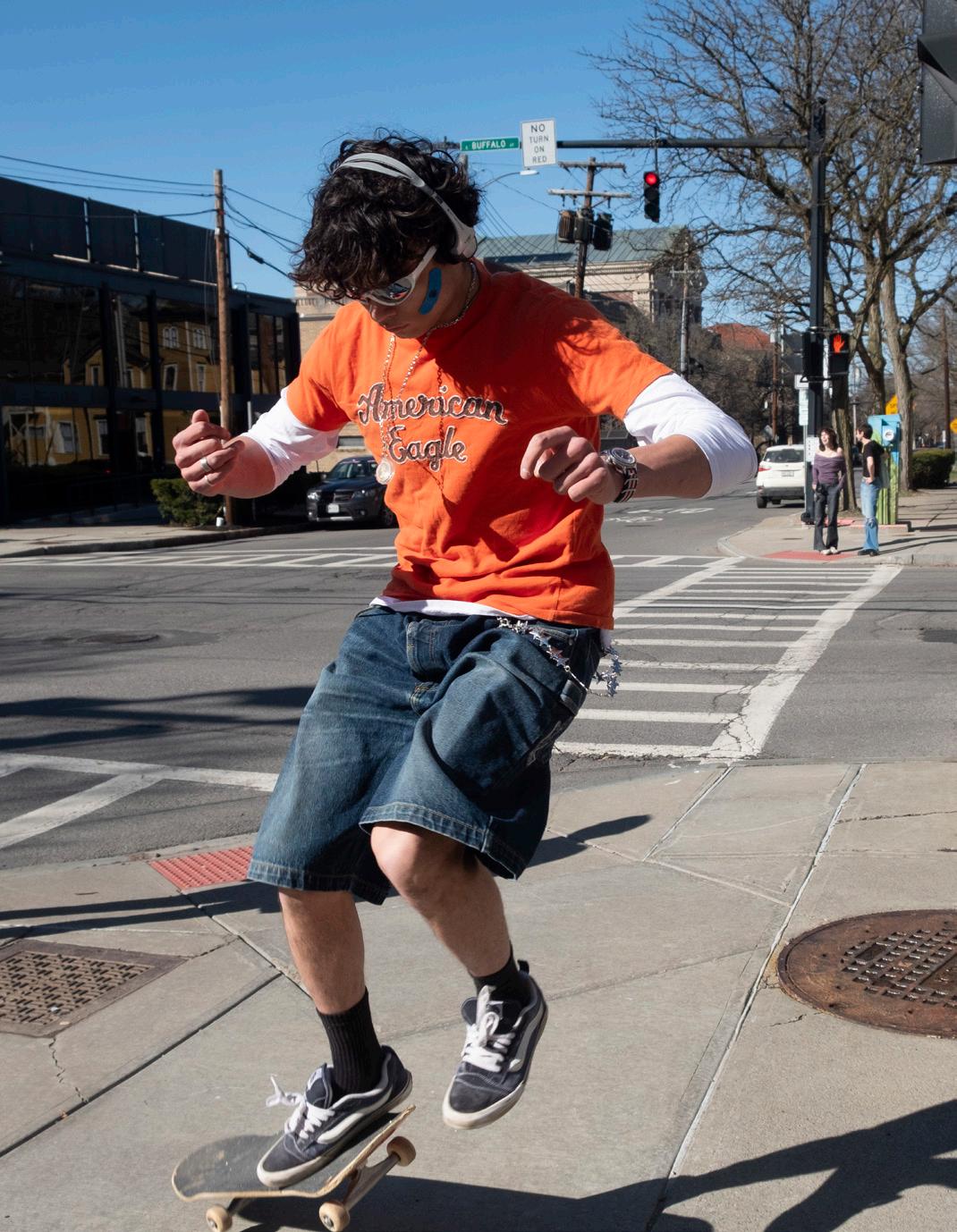
14



15

16

DIGITAL INFESTATION
We live in a mediated world where media and reality intersect, and our self-images and online presence become intrinsically connected. But today, it becomes increasingly difficult to express a confident, individual sense of self. Our personalities, vices, and virtues have become so tied to media that we no longer coexist alongside it. Instead, we must exist within it.
Growing up, I, like many others in my generation, idolized certain TV characters. Young girls copied Lorelai Gilmore’s spunk and laugh, while boys attempted to emanate the masculinity and appeal of Clark Kent and Indiana Jones. I found myself at first copying fashion and makeup and later jokes and imitations of my favorites. I built my personality around the flat, 2D characters on my screen in hopes of being palatable or likable to other people.
Now, as we mature, media encroaches on our lives in less frivolous ways. We no longer feel pressure to replicate the media we consume but to become the content itself. After puberty, I began to see myself as a marketable being. I no longer wanted my personality to reflect an ideal but rather for my appearance on social media to do the same.
Today, we carefully construct story posts, Instagram feeds, and even Spotify playlists so other people will watch. Through our online presence, friends, and language, we strive to become digestible forms of entertainment. This creates an issue when constructing a self-image. Am I the person I project to the world? What has shaped the person I am today? No longer does my close-knit geographical community define me, but the expansive digital world around me does.
Now that we have access to the world through social media, our self-images are informed by global trends and perceptions. We are meant to identify less with our local friends and hobbies and more with universal likeabilities. When the rest of the world sees me, it’s not for who I am in reality but what my Instagram feed looks like. This is when we confuse ourselves. We create the idea that we are what we publish.
Living in a digitally infested world creates tension between the digital ideals we strive for and the “mortal,” tangible versions of ourselves. Eventually, we create marketable selfimages, leading to the inevitable triumph of the media over individualism.
Olivia Bell
17
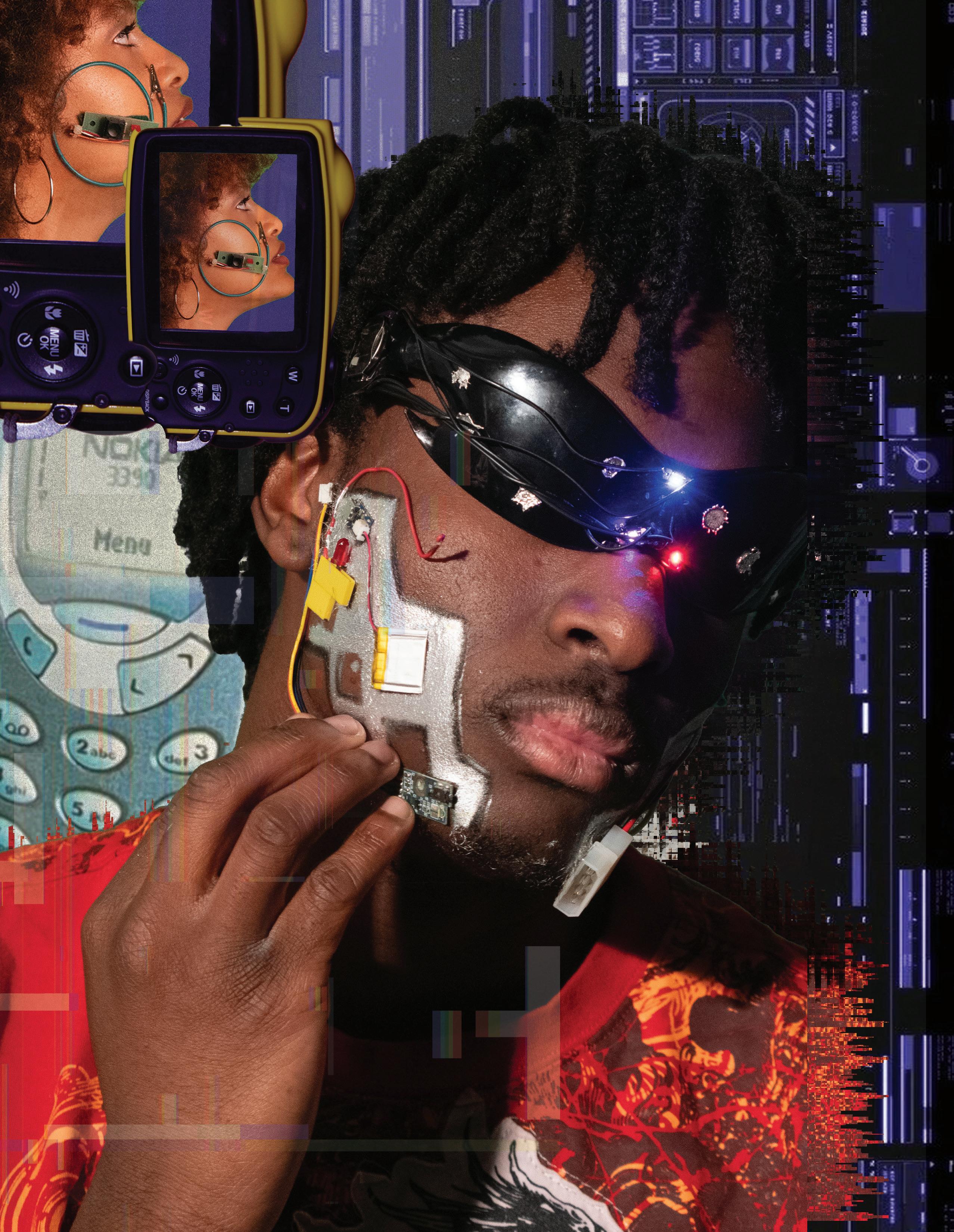
18
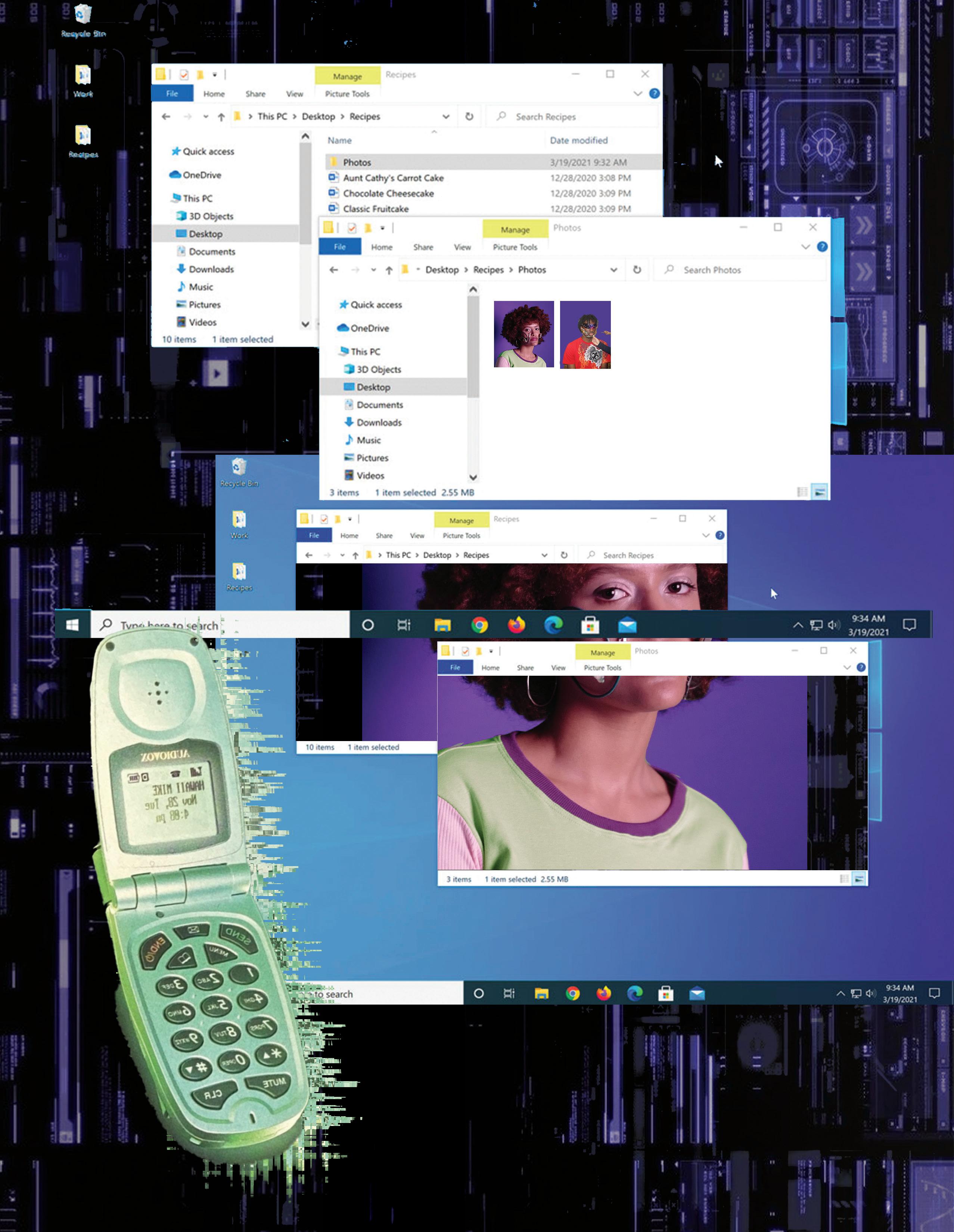
19
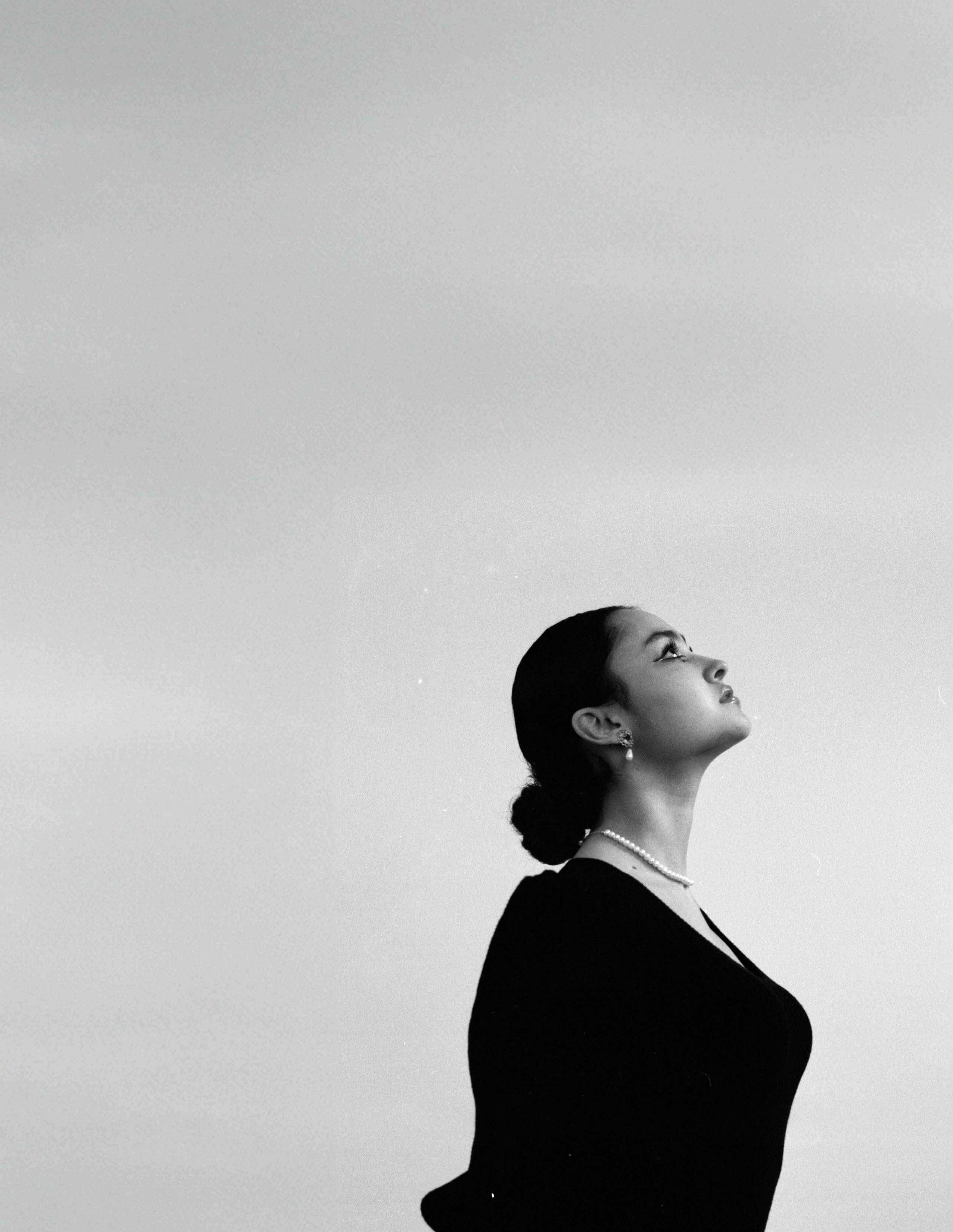
Directors: Susanna Burr, Lillian Casazza
Models: Claire Hwang, Samuel Indermaur, Leo Mann, Sabina Schrynemakers, Krystal Vernon
Art: Kate Minn
Beauty: Nina Chehab, Grace Song
Creative: Ianna Banfield, Jessica Li, Madeline Milam
Editorial: Lauren Kim, Laura Twizere
Fashion: Ayon Dutta, Kylie Gillen
Photography: Marge Dalseth, Peter Radzio

INTROSPECTION

So, How Have You Really Been? A love
letter to the deep thinker and feeler
It is a common custom to greet someone and ask them how they are doing. But is it equally as important to ask that question to yourself? Exploring one’s inner emotions is such a powerful and beautiful thing. It is truly a travesty that it has been deemed as weak or snowflake behavior. I feel our generation especially has been on the receiving end of such comments. This usually is preceded by a “back in my day” that no one asked for, like frankly sir I do not care about “your day.” I feel like this stemmed a lot from the turmoil and unrest of the 20th century. It started from WWI, WWII, and onwards, during which people were experiencing so much stress and trauma but did not know how to process it or did not have the time to process it. So they resorted to hiding, concealing and pushing their stress down. Which manifested itself in other ways as we can so clearly see in our society. This is all to say, it is a wonderful thing that our generation is full of soft, emotional snowflakes. I am proud to be part of it, because we are able to feel all of our emotions so strongly and openly. If we disagree with something or someone, there will be a whole comment section full of clever insults and comebacks. And when we agree or love something, there will always be comment sections full of the most over-the-top compliments you have ever seen…one of my favs i’ve seen on tiktok was “she shredded some MOTHERella on some SLAY-izza,” and if that’s not poetic I don’t know what to tell you.
I think there is also this social pressure of expressing your emotions and thoughts in an acceptable manner. Like the whole time and places stuff we learned growing up. But that’s why introspection is so beautiful. You get to ask yourself questions and explore your thoughts and feelings on your own terms. You don’t have to wrap it up in a pretty little bow, or package it behind a polite smile or language. You can just feel it. Fully, rawly, authentically. This is truly amazing because as a generation, we have given each other safe spaces outside of ourselves to do this. Maybe too safe at times—to be honest, some of the stuff I have seen online should have stayed inside thoughts.
Having these safe spaces for each other and also giving ourselves room to introspect alone has led our generation to form really meaningful connections online and in real life. Because we are able to present the most authentic versions of ourselves to the world which in turn are reflected back to us. We can move past polite common courtesy nonsense and delve deeper into our thoughts and emotions. Allowing ourselves and each other to recognize them and understand them. Instead of allowing this to be shameful, we should encourage and celebrate it.
So, how have you really been?
Ask yourself and ask others.
Laura Twizere

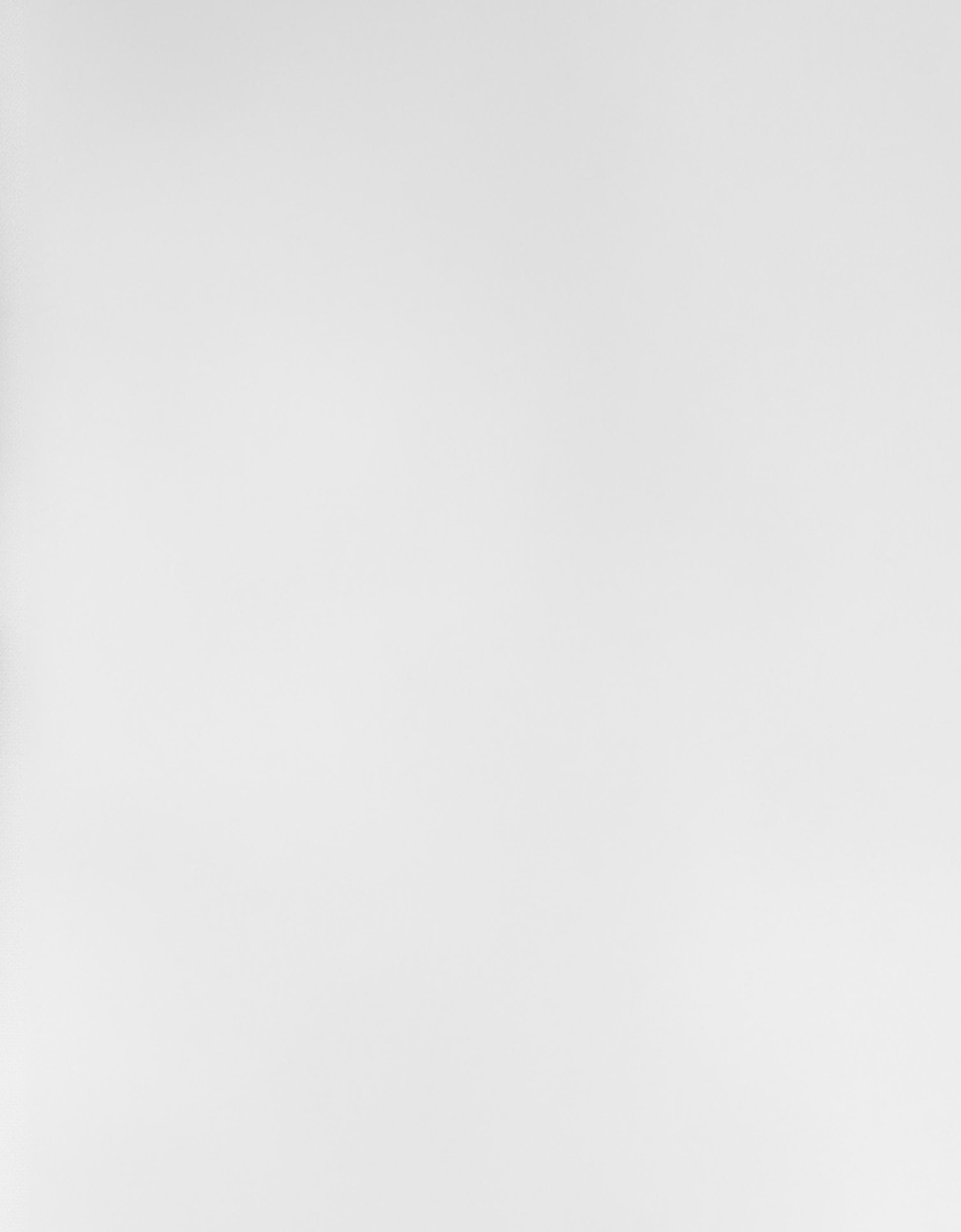





Books with no words line my shelves. Each bare journal is an almost, a blank slate waiting to become something. I don’t know why I find it so difficult to journal, or why I keep buying new ones, as if the weight of its spine, or the span of its pages is the problem. But time and time again, blank books are retired and moved from desk to shelf. It can be hard to look inwards. An empty journal requires more than just a recap of your day or a laundry list of emotions recently felt. These takes may skim the surface, but they aren’t what make looking inwards hard.
There’s something difficult about true introspection. (Something hard to describe, for how do we describe our most indescribable selves?). To introspect, and to document that introspection, forces us to establish ourselves—to identify some part of who we are and put it out into the world. It’s far easier to go through the world seeing and establishing those around us, and brushing over the fact that their eyes can do the same to us in return. But when we turn inwards and establish our personhood—maybe by taking the self to the physical page—then, problems arise. This nebulous, frightening idea of looking inwards, introspecting, reflecting, can all be identified by another, familiar name: vulnerability.
Journaling requires vulnerability. Confronting ourselves and others requires vulnerability. Questioning ourselves requires vulnerability. Reflecting on our thoughts and feelings requires vulnerability. To do these actions is to feel these actions; feel, and feel everything. And by doing so, we are susceptible to harm. This is the greatest risk of all: to open yourself up to the world and accept whatever may come, whether it be positive or negative.
It sounds like a frightening endeavor, and one some people may not understand. Why work to experience life in its rawest form when that encompasses not just the best of life, but the worst as well? Why leave yourself so unguarded?
To which there would be no single, grand reply. Because vulnerability doesn’t need to be some brave, almighty journey. It is just a way to move through the world, and is different for all. For some, perhaps journaling is the way. Others may have different methods. A willingness to go up on a stage and perform. An eagerness to take chances. An open, honest conversation with a friend.
To be vulnerable in life is to accept life, come what may. Through this acceptance, we agree to know ourselves and our emotions, thoughts, feelings. We agree to experience them wholeheartedly.
Herein lies a new form of introspection. One that, if we dare to embrace, can turn life technicolor.
Lauren Kim
26

27
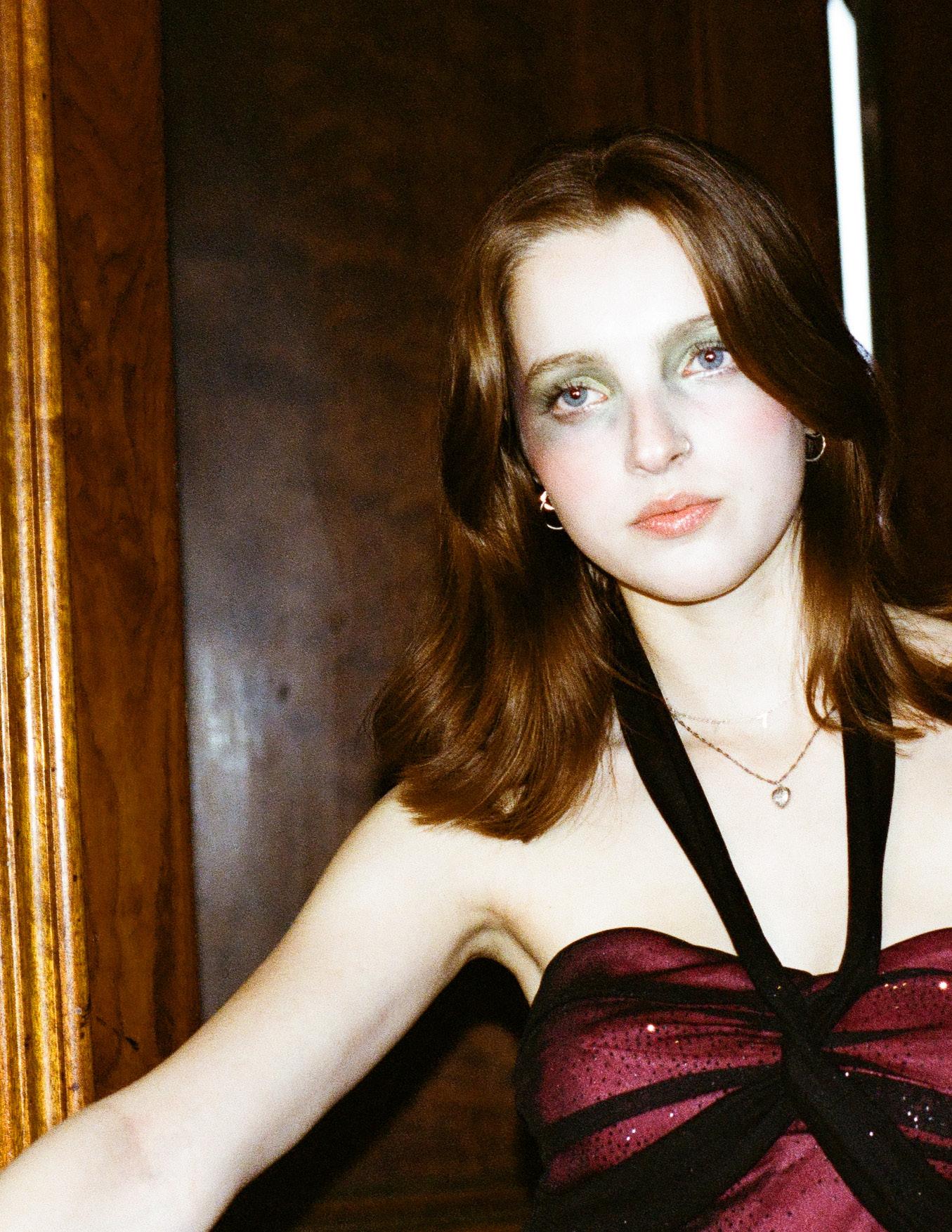
Nostalgia
Directors: Jade Nguyen, Sophie Shadid
Models: Lydia Brawley-Magee, Jada Brown, Claudine Miller, Daniel Newman, Peter Wenger
Art: Jules Gembs, Katie Noh
Beauty: Simone Jacobs, Hana Schultz
Creative: Maggie Levine, Beau Reid, Jolene Tsang, Nadirah Vander Linden, Fiona Yin
Editorial: Dorothy France-Miller, Sadie Mank
Fashion: Ceci Corsello, Augustine Haquet, Liriana Nezaj, Alex Watson
Photography: Lorenzo Blanco, Lillian Casazza, Shannon Hu, Zoey Huang, Chap-Lum Lau, Luciana Nicole Luque
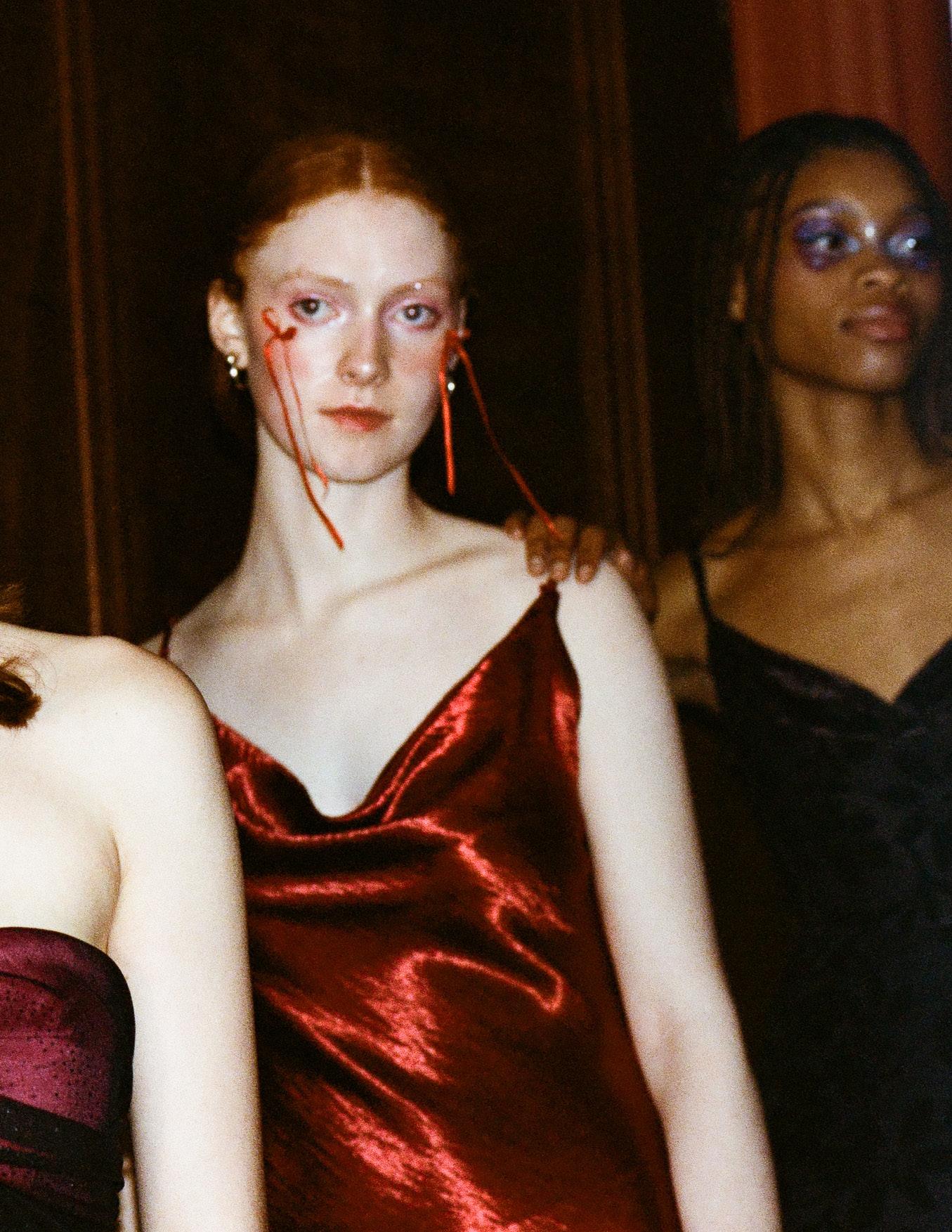
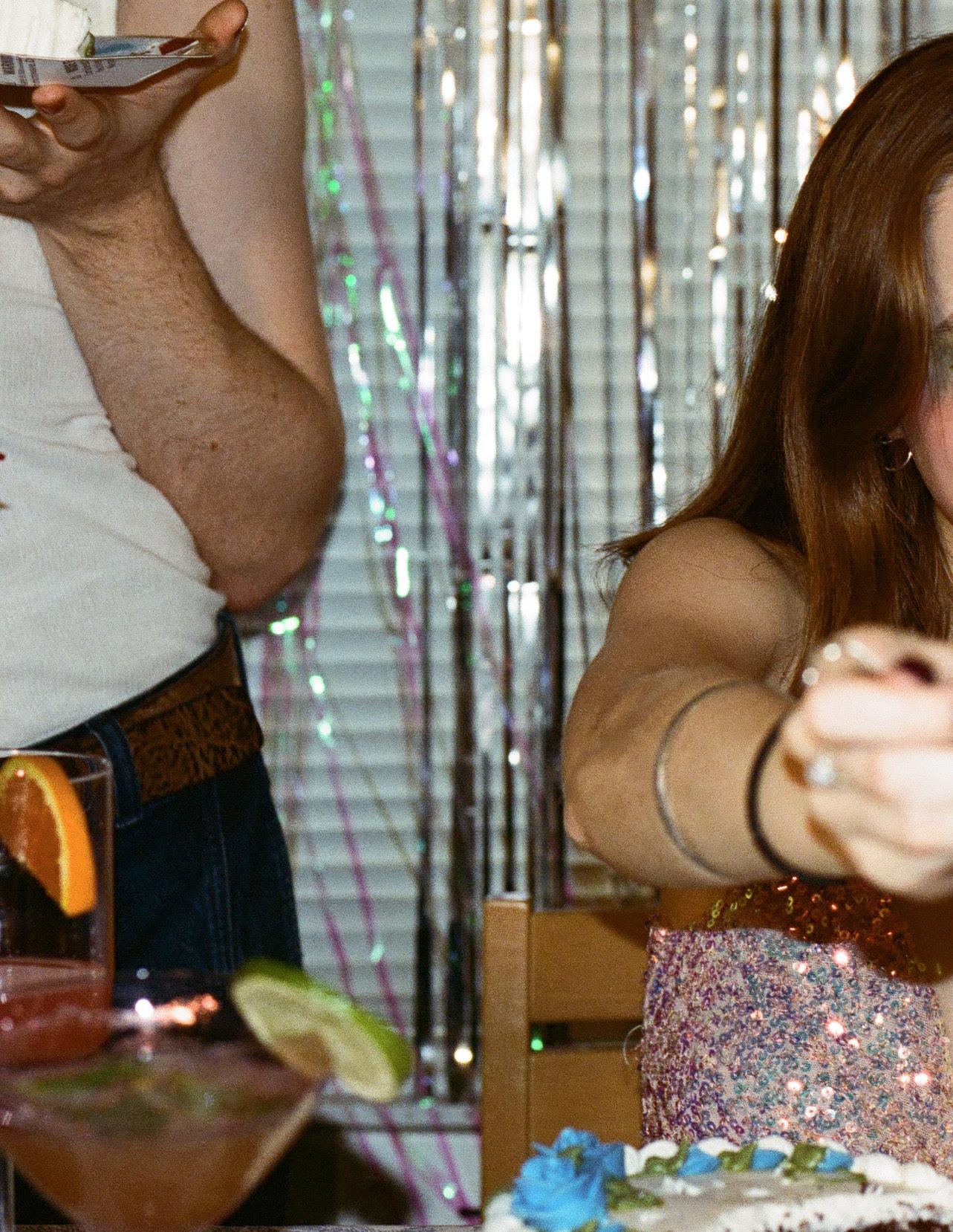
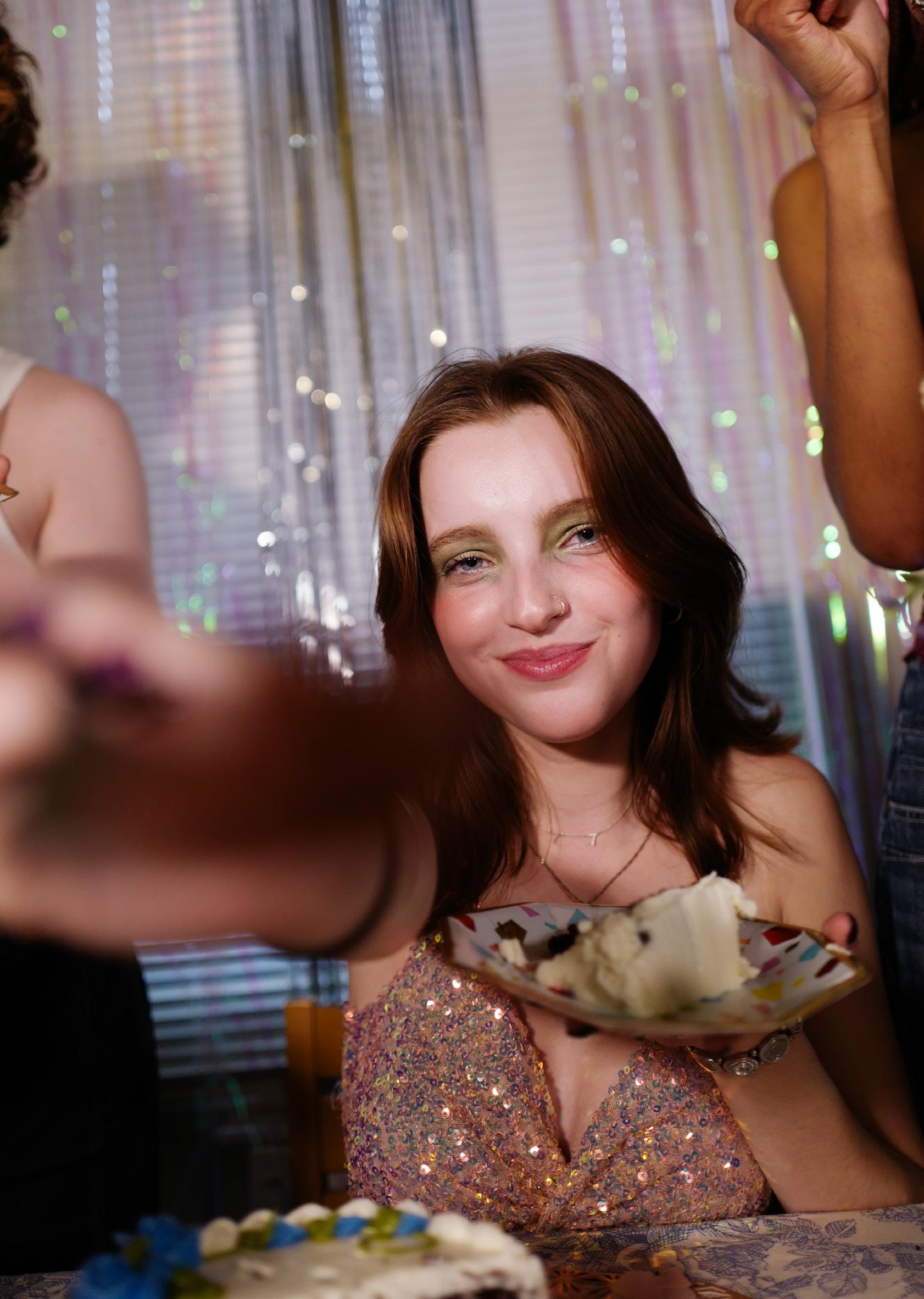
30
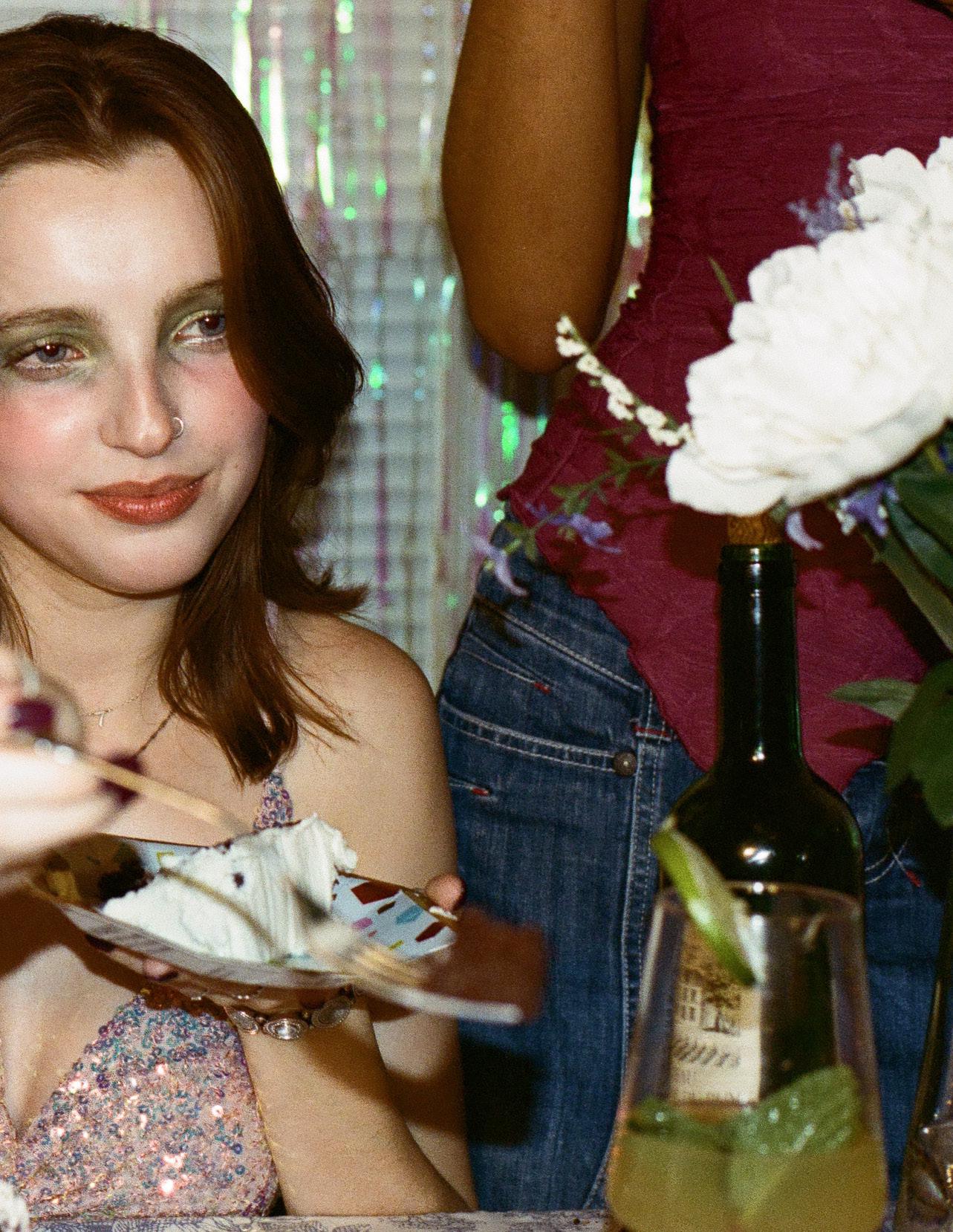
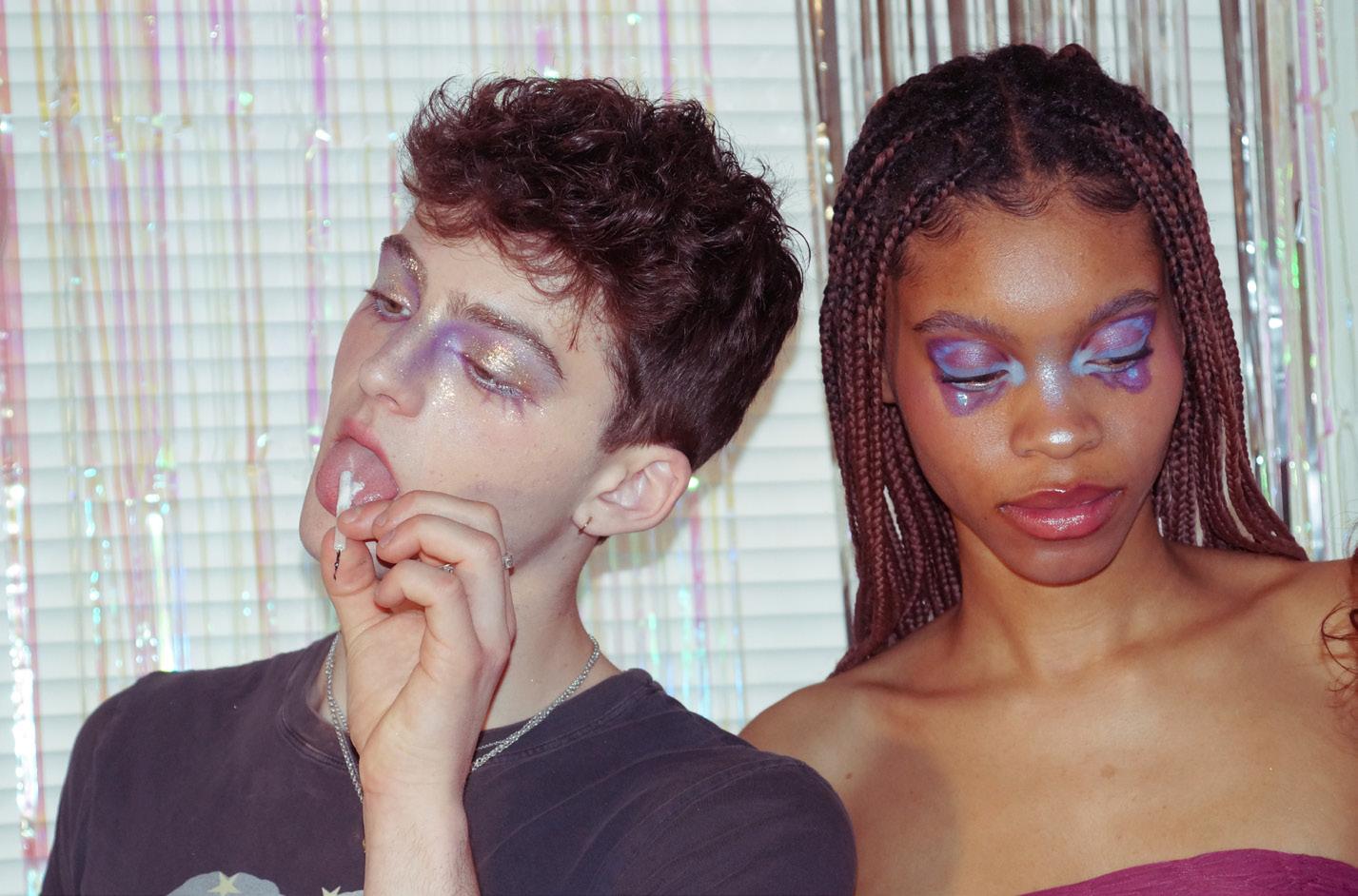
31
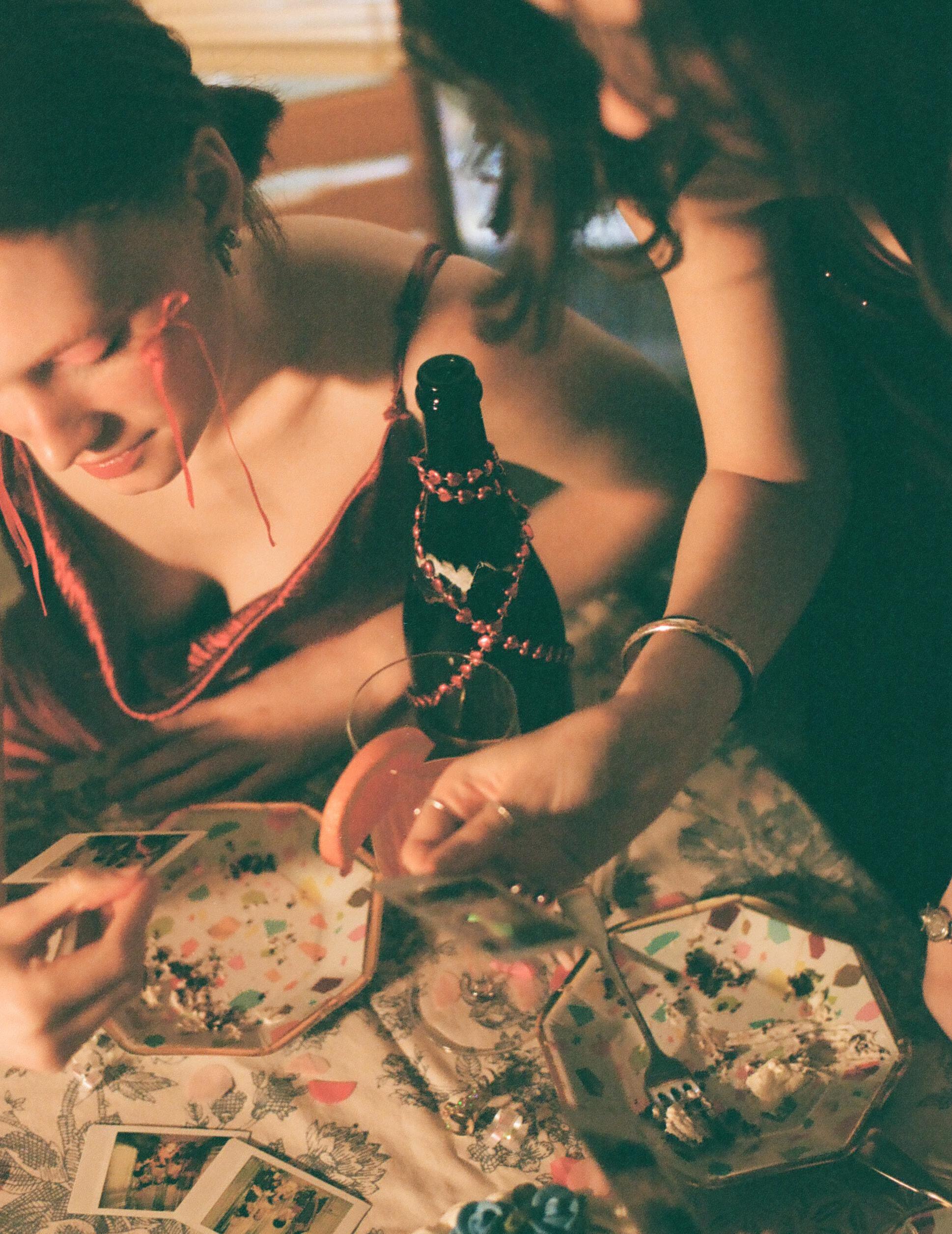
32
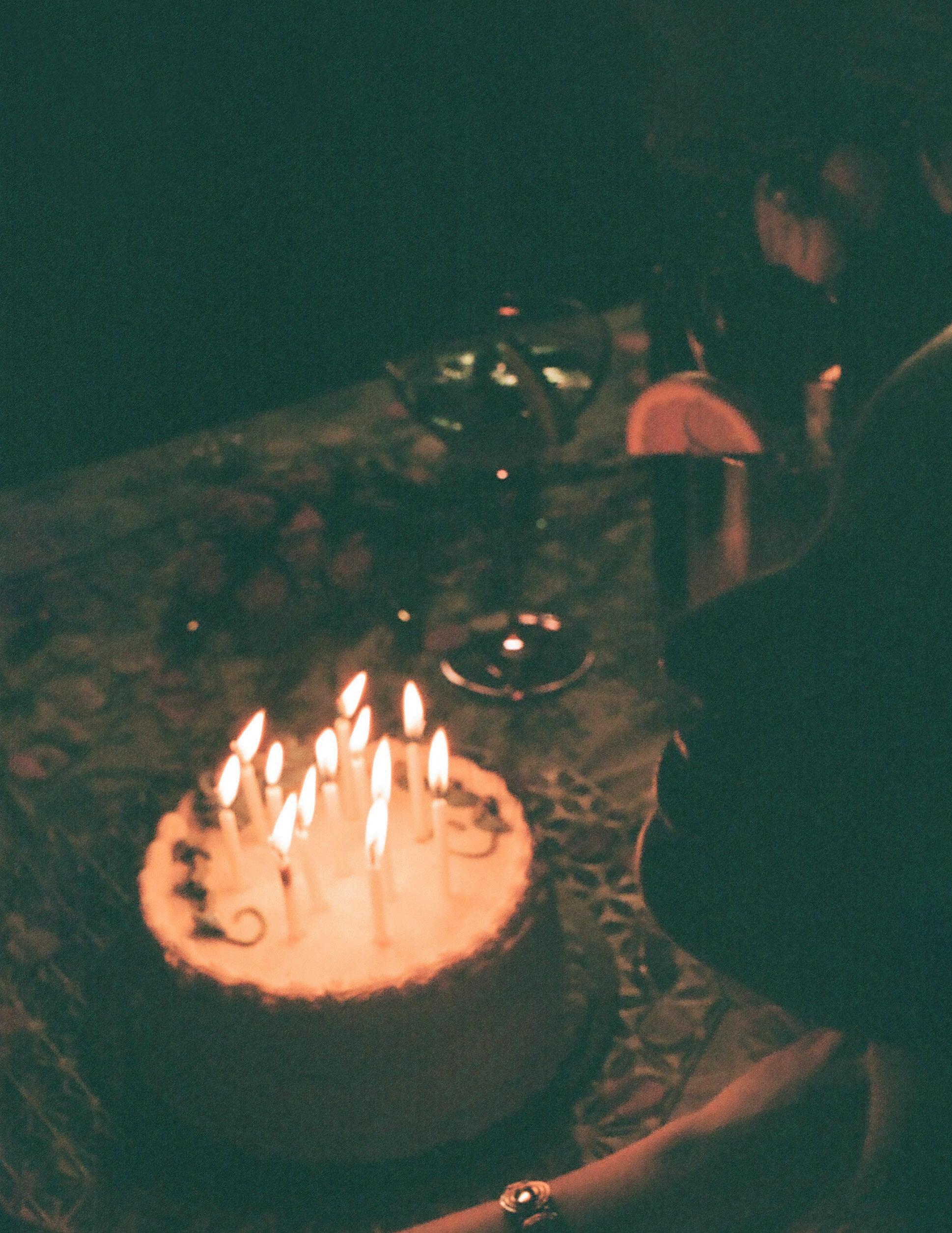
For those of us coming of age during the pandemic, nostalgia was in the air. Across generations, and almost to the point of cliché, there felt to be some sort of real time awareness about the shared nostalgia we were all turning to for comfort. When collective life stopped, when the social took pause, we found solace in recycling connective comforts of the past. I remember listening to an episode of the NPR podcast, Throughline, in October of 2021, called ‘The Nostalgia Bone,’ which declared Nostalgia “the defining emotion of our time.” I remember that resonating with me deeply at the time. Though we were all apart, we filled the socio-cultural vacuum with that which brought us back to the comfort of the ‘better days’ together.
Zoom school was depersonalizing and atomizing, and definitely set (at least my own) social development back a few years. Perhaps we indeed needed the solace found in idealizing the past to survive. But as I sit here going through the cycles of days, weeks, semesters at college—reading, writing, thinking, socializing, partying, working—live and in person, as exciting as it is, I find myself romanticizing this period of isolation, as though they were simpler times. I find myself, dare I say… longing for those days?
Back in those days, expectations were lower. In that state of universal existential crisis, there was no efficiency to be optimized, excellence to be achieved, or grand outcome to be produced. All that felt to be expected was mere existence and to be achieved was small day-to-day joys. In an era of universal fight or flight, within the confines of my family’s small NYC apartment and our neighboring Riverside park, I was lucky enough to be given the space to get to know my family in a new way. I unlocked a new side of my parents, having meaningful conversations about their careers, worldviews, and values in a more explicit way than ever before. I got to think out loud to them, on a routine basis. In turn, a bleak and despairing era quickly became a reflective one for me. New access to parents also meant new access to what they care most about, and a new world opened up to me: a world of 9x0s arthouse movies and books that would come to shape my worldview. I became particularly enamored with the works of Milan Kundera after reading his most celebrated novel, The Unbearable Lightness of Being. Thus, I came to think about that era in a new way—perhaps our atomized and achievement-obsessed society realized that lightness of being, and it was, for a moment, in the unity of catastrophe, just a little less unbearable.
Nostalgia is incessant and leads to the romanticization of the most absurd things, especially when they represent home. This very human tendency can seem so foolish, yet it is sometimes necessary to even envision a future at all.
33
Sadie Mank


34
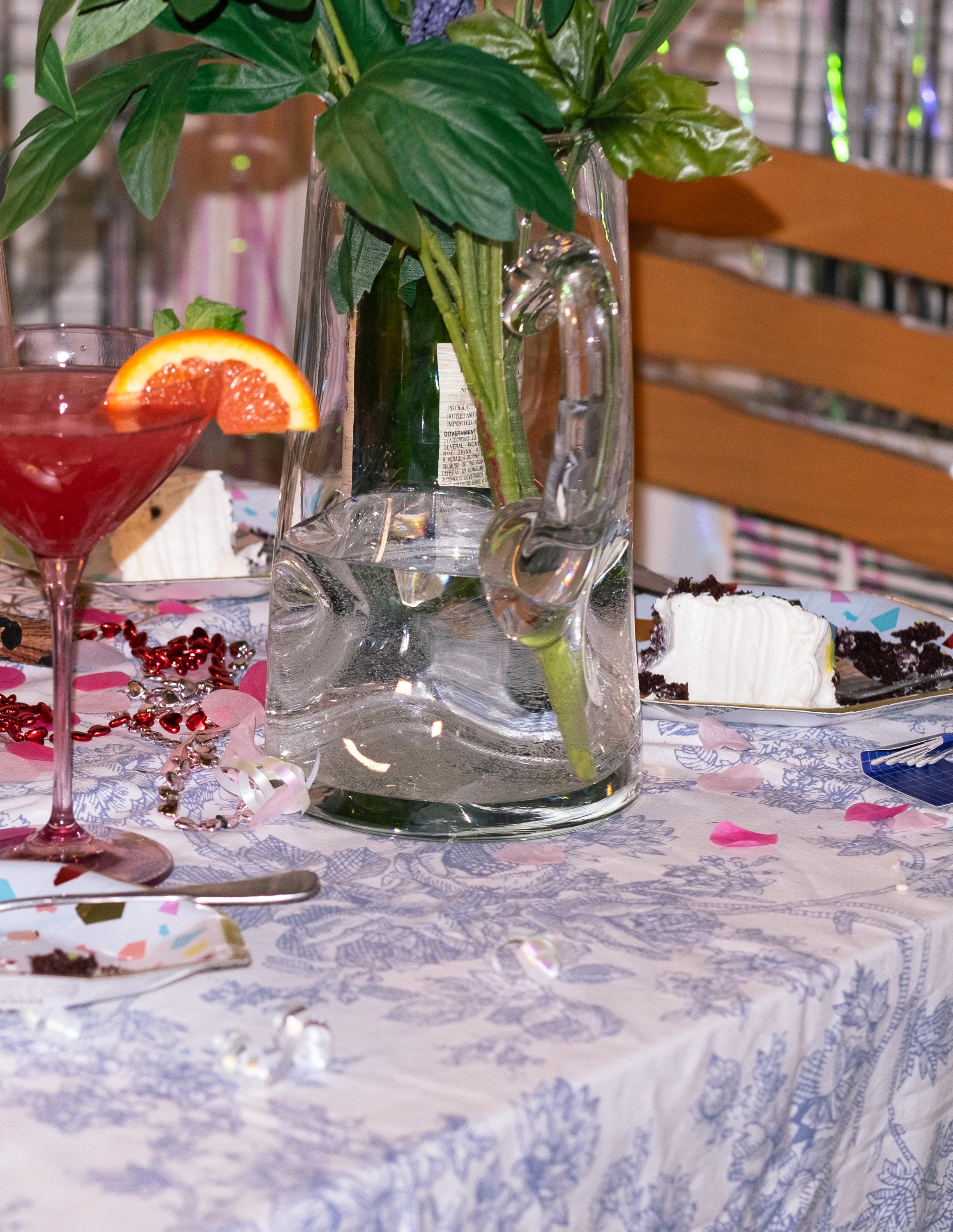
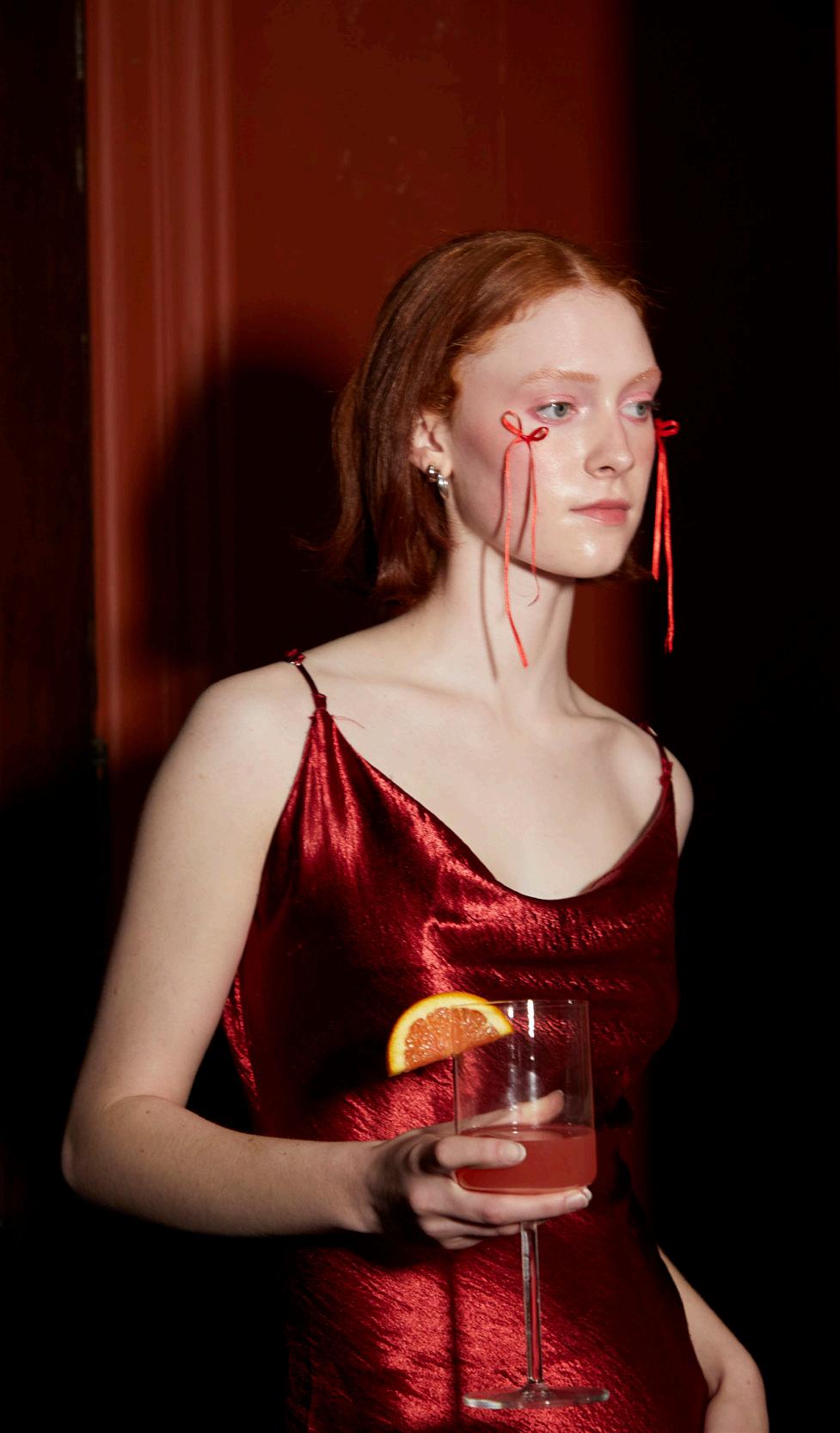
35
Creative:
Editorial:
Fashion:
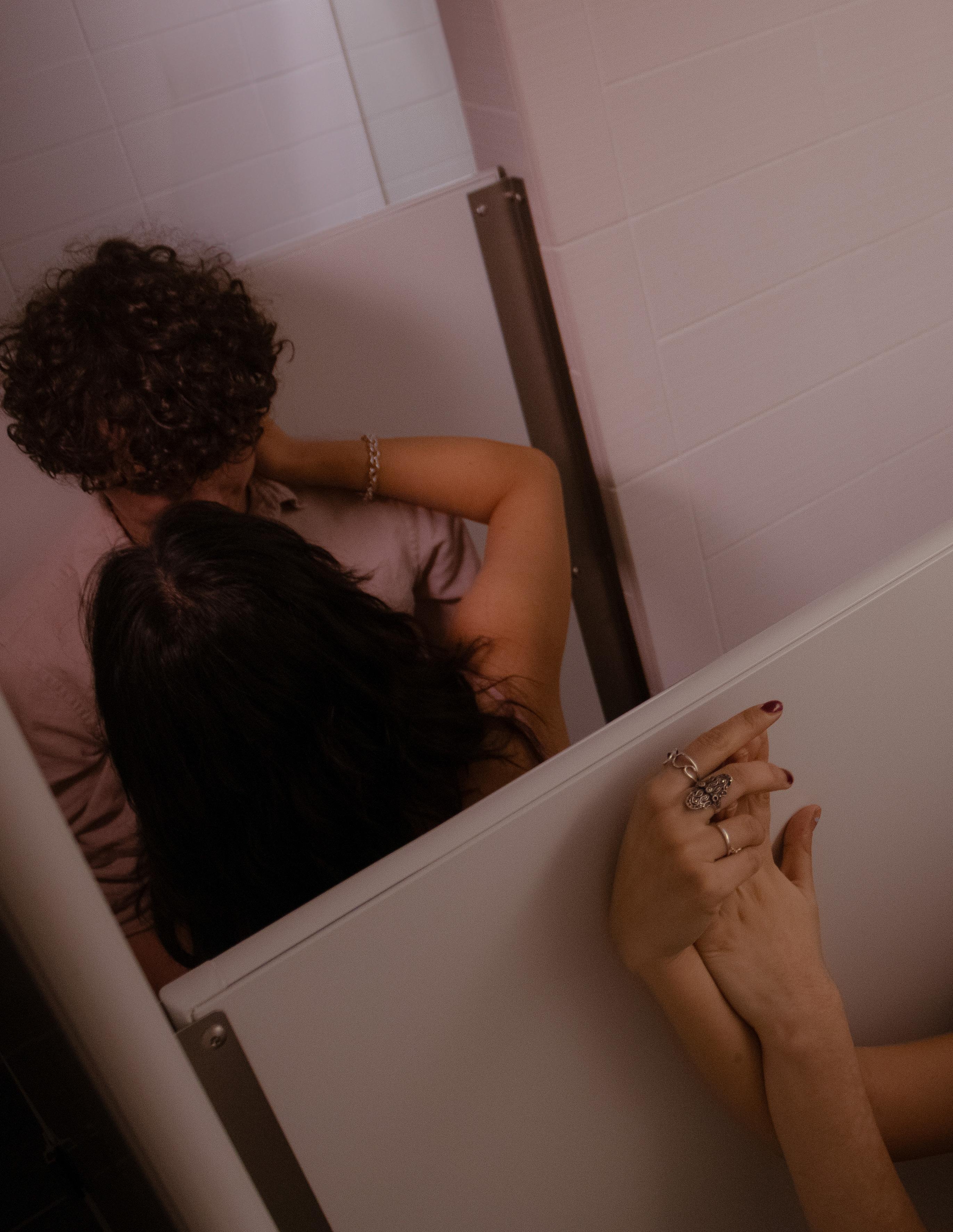
Amorism
Directors: Kayla Hsu, Tasnimul Taher
Models: Kaila Ah Moo, Ashley Chou, Aidan Kane, Tiffany Kumar
Art: Lilian Cao, Emma Hogan, Rania Shah
Beauty: Paige Burch, Jas Khan
Lily Greenberg, Bella Hanson, Sofia Iantosca, Ashley Kim, Myna Lim, Ivy Ng
Sophie Feldman
Hannah Luna, Devon Meenaghan
Photography: Halsey Hulse, Rosey Limmer, Sally Zhang

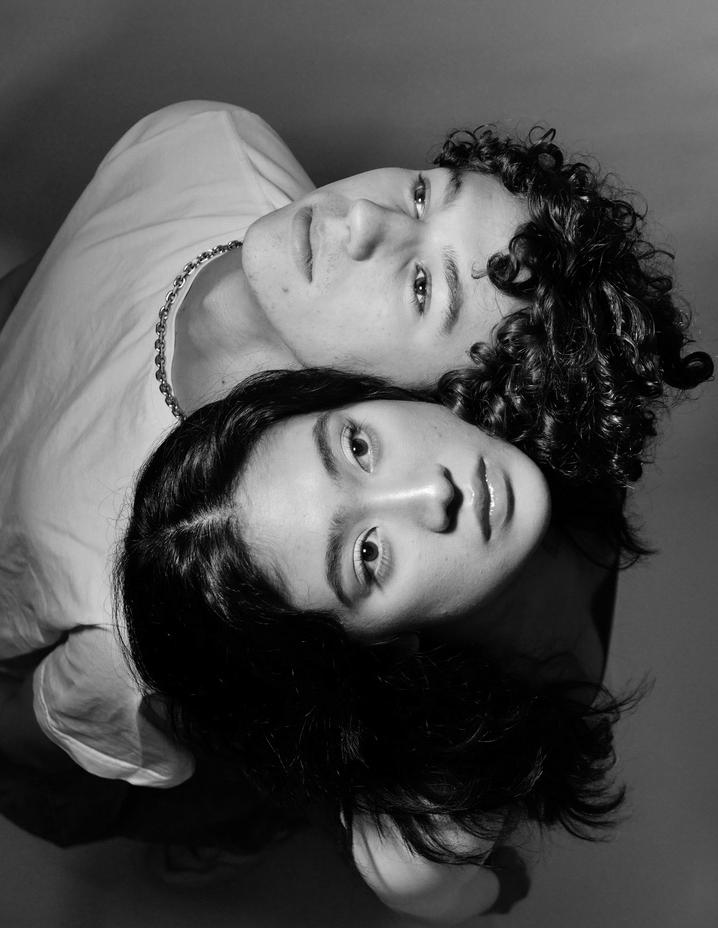


It’s 6:17 pm the night before his wedding, and Orwell is alone in a kitchen. He twists the red thread on his finger, and its frayed edges catch in the callus above his nail. The skin underneath it is chafed and red, but Orwell refuses to take it off, because that’s what his father did the night before his wedding, and he just thinks it is right to keep it on, even if he bleeds. Orwell sits in a white chair on the stool in his father’s kitchen, the very same one he grew up in 30 years ago. His handprints are still on the backsplash over the stove and his dog’s bowls are still on the ground next to the fridge even though there hasn’t been a dog in that house in 17 and a half years.
His hands close around his bottle of Sam Adams, and remembers that this is the beer that his grandfather drank, and that he doesn’t even really like it, but his grandfather did, and he’s getting older, so he probably should too. He’s had a lot of these kinds of realizations recently. He’s getting married tomorrow, and he feels like he’s 17. Orwell shakes his head, and walks out the screen door. It was yellow when he was in highschool, but it was blue when he came back for Thanksgiving his freshman year of college. Orwell shakes his head at the memory, and curses when his yarn ring gets caught on the chipped and faded blue paint next to the rusted metal handle of the screen door. His bare feet follow the familiar grains of his family’s dock that leads to the lake he’s lived on his whole life. At the end of the dock sits his father. Orwell sees his father as someone who has always been old. He was a god. He was wise, and sound, and smart. Orwell approaches the edge of the dock, and hears his father’s favorite Sinatra track playing. The wind runs circles around Orwell, bringing his tight brown curls out from behind his ears and into his blue eyes, yet Orwell knows he doesn’t need his eyes to find his father. The cold off the water bites his lips, yet its pull is stronger than the sting. Orwell hasn’t seen his father since that Thanksgiving. “Orwell.” “Fitz.” The two men greet each other with nothing but a closed, thin lipped smile, a hand over the eyes to shield from the glaring sun. “You’re home.”
“You sound surprised,” Orwell says. “I’m getting married tomorrow. Did you know that?” “Read it in the paper.”
“Of course.”
“Your mother would be proud, you know.” “What would you know about my mother?” Fitz holds up his hands in resignation, perhaps praying for an act of mercy to make this conversation end. Maybe he knows how fair his son’s point is. Maybe he doesn’t.
“I married her, Orwell.” He reaches for an invisible piece of lint on his shoulder. Something to busy his hands. A red bracelet similar to Orwell’s own ring frays around Fitz’s wrist.
“You know that.”
“That doesn’t mean you loved her, Dad.” Fitz winces.
“Of course I loved her, Ori,” It’s Orwell’s turn to wince now, as his father calls him by his childhood nickname.
“Your mother was the great love of my life.”
“I know that.”
“She’s not a was, Fitz. She’s alive. She’s very alive, actually, and you know that.”
“So why don’t you go to her? If she’s your great love, why don’t you find her? Love her?”

“You can love someone enough to know when it isn’t right.”
“Don’t you for one second think I don’t love that woman, boy,” Fitz stands up, and kicks his chair. It falls over, and whines a measly sound before resting on the familiar bed of the dock.
“How do I know?”
“How do you know what?”
“I’m getting married tomorrow. I’ve thought that love is abandonment. Running.” Orwell twists his yarn, mindlessly playing with the frayed edges, feeling them brush against his calluses. “Love doesn’t mean that. God, did you really think that’s all we were? If I could’ve changed everything…” Fitz shakes his head and sighs.
“I am not the man your mother loves anymore. I am not the great love of her life, Ori. The woman I fell for lived on a farm and danced in the river, and sang to the trees and napped with the cows and lived her life the way she wanted to live it. She never changed, but I did. I loved her, and I loved you, but are you the same person you were when you were 20?”
“You didn’t know me when I was 20, Dad.”
“It’s just a question, son.” Orwell pauses.
“No. Of course I’m not.”
“I’m not either, Orwell. Sometimes you grow with someone, and sometimes you grow against them.”
“‘All Flowers in Time Bend Towards the Sun.’”
“What?”
“Nothing.”
“Who’s the girl?”
“Her name’s Ellis. She’s from Brooklyn, and she works for the Museum of Natural History.” “You love her?”
“I think I do.”
“You think?”
“You call that lucky?”
“You love Mom. You haven’t seen her in 20 years.”
“Doesn’t mean I haven’t stopped loving her.”
“What if we end up like the two of you?”
“Then you’ll know what it’s like to have loved and been loved. You’ll be one of the lucky ones.”
“I call that honest. It’s better to have loved and lost than never to have loved at all.” “Tennyson.”
“You remember.”
“How could I forget?”
“If you take anything from me, let it be that. Nothing in your life is permanent. But God, I hope you and your girl last long enough to make it feel like it is.”
Sophie Feldman
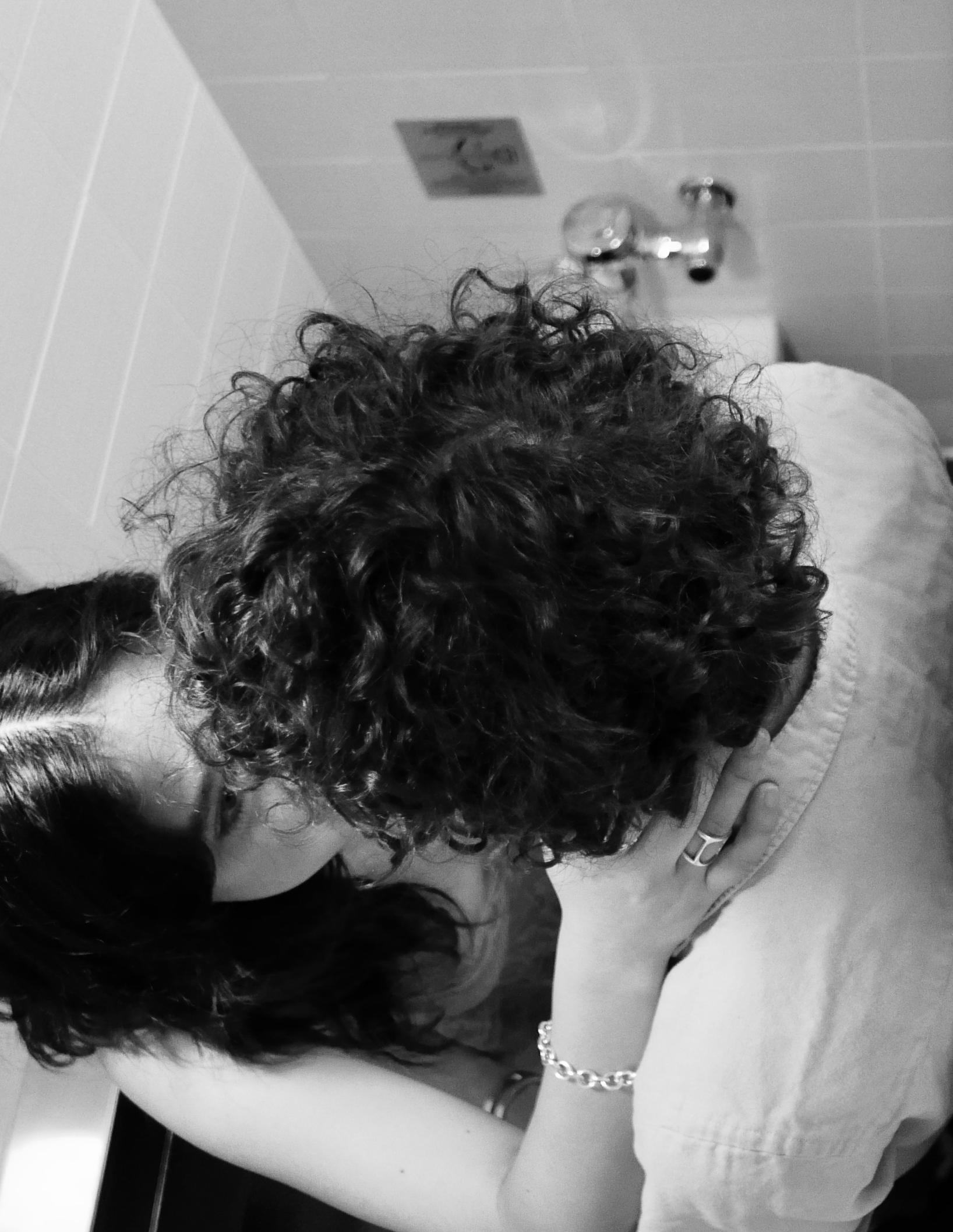
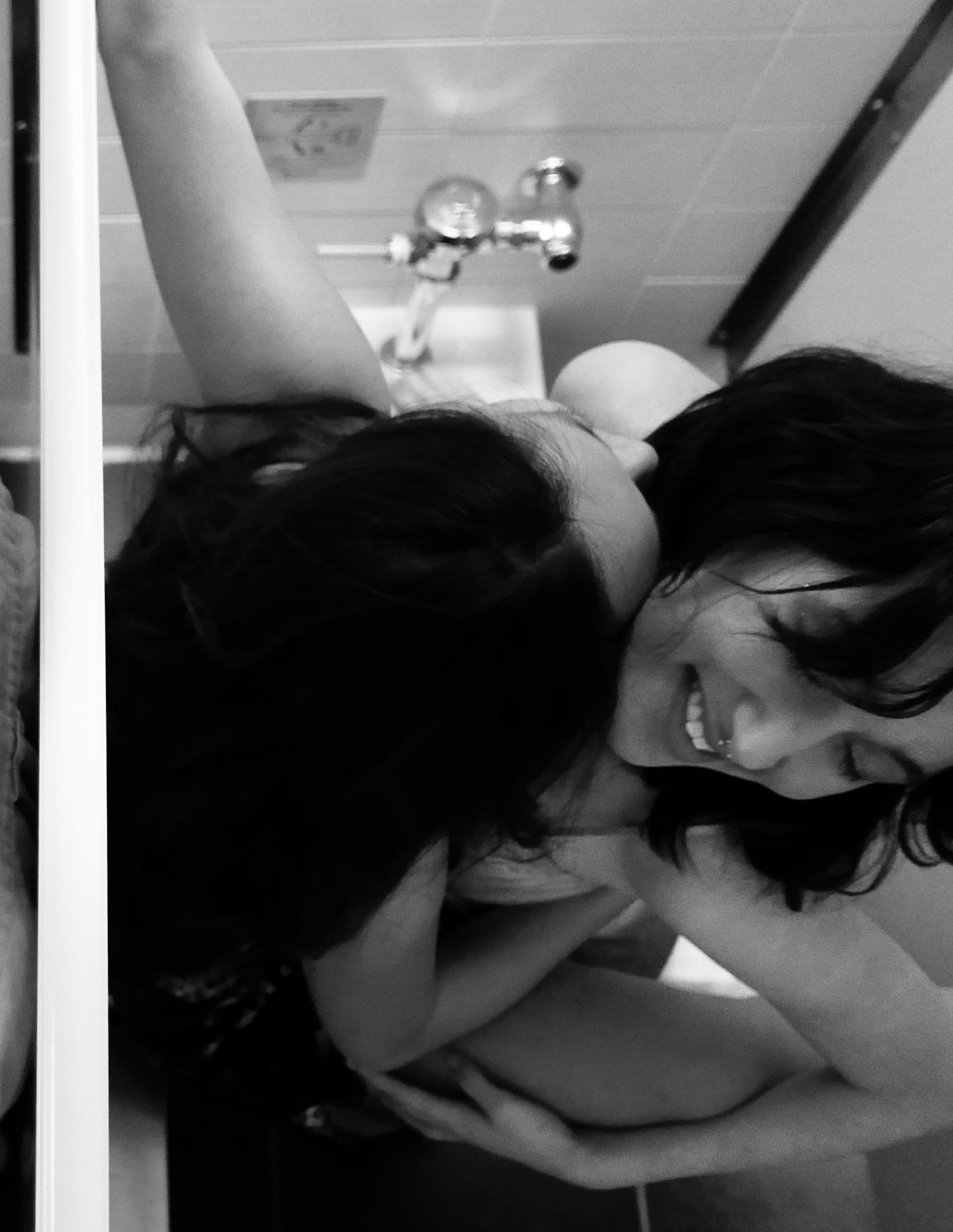

Escapism
Directors: Ella Grimm, Isabel Mina
Models: Mary Benjamin, Thomas Meyers, Sofia Spillane
Beauty: Kate Harris
Creative: Renee Du, Miradyn Feist, Keira Huffman, Rachael Kong, Tej Shah
Editorial: Stella Crawford, Savannah Shaub
Fashion: Kate Stiens, Asfi Tias
Photography: Jasper Drake, Pranav Nair, Katherine Teitelbaum
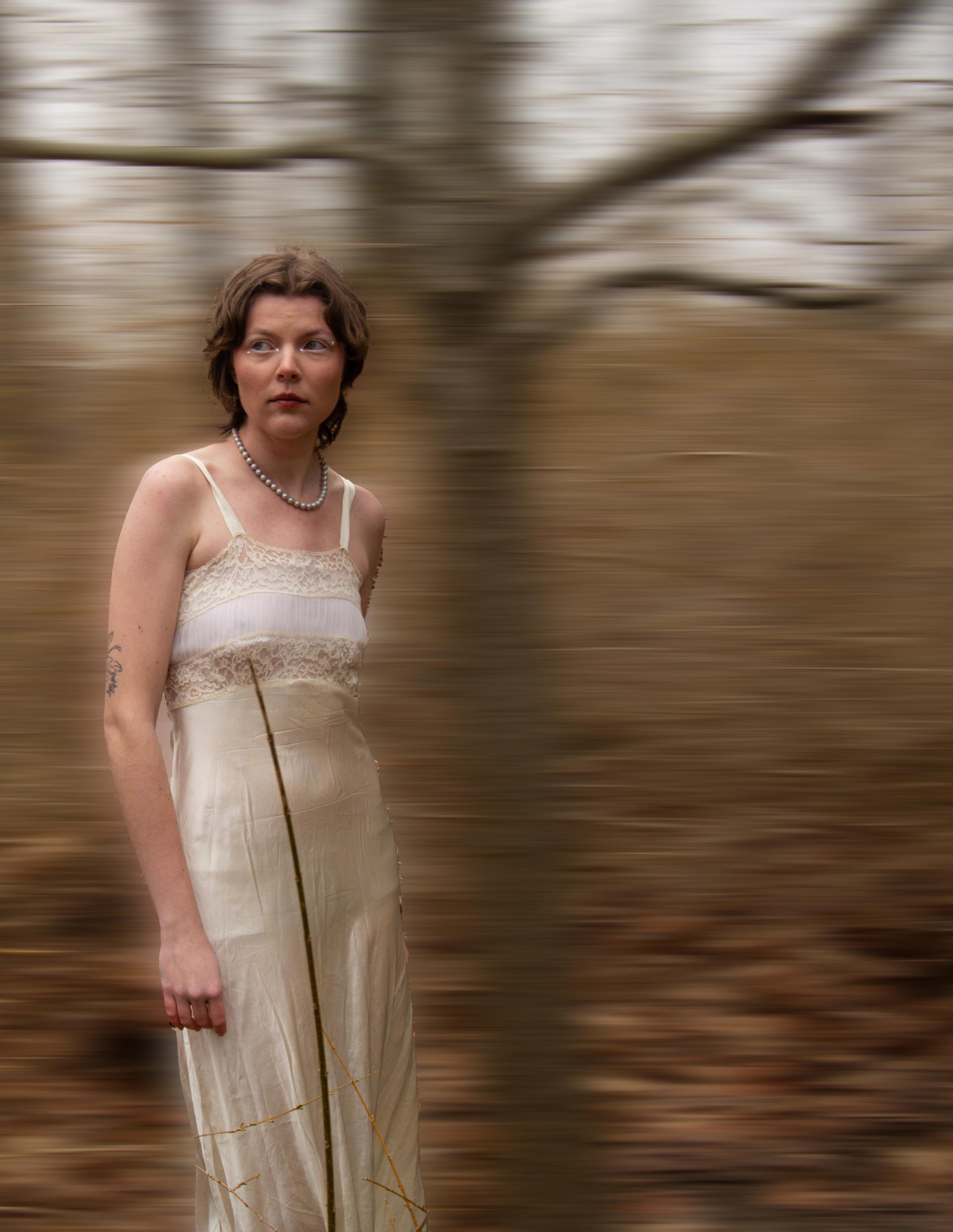
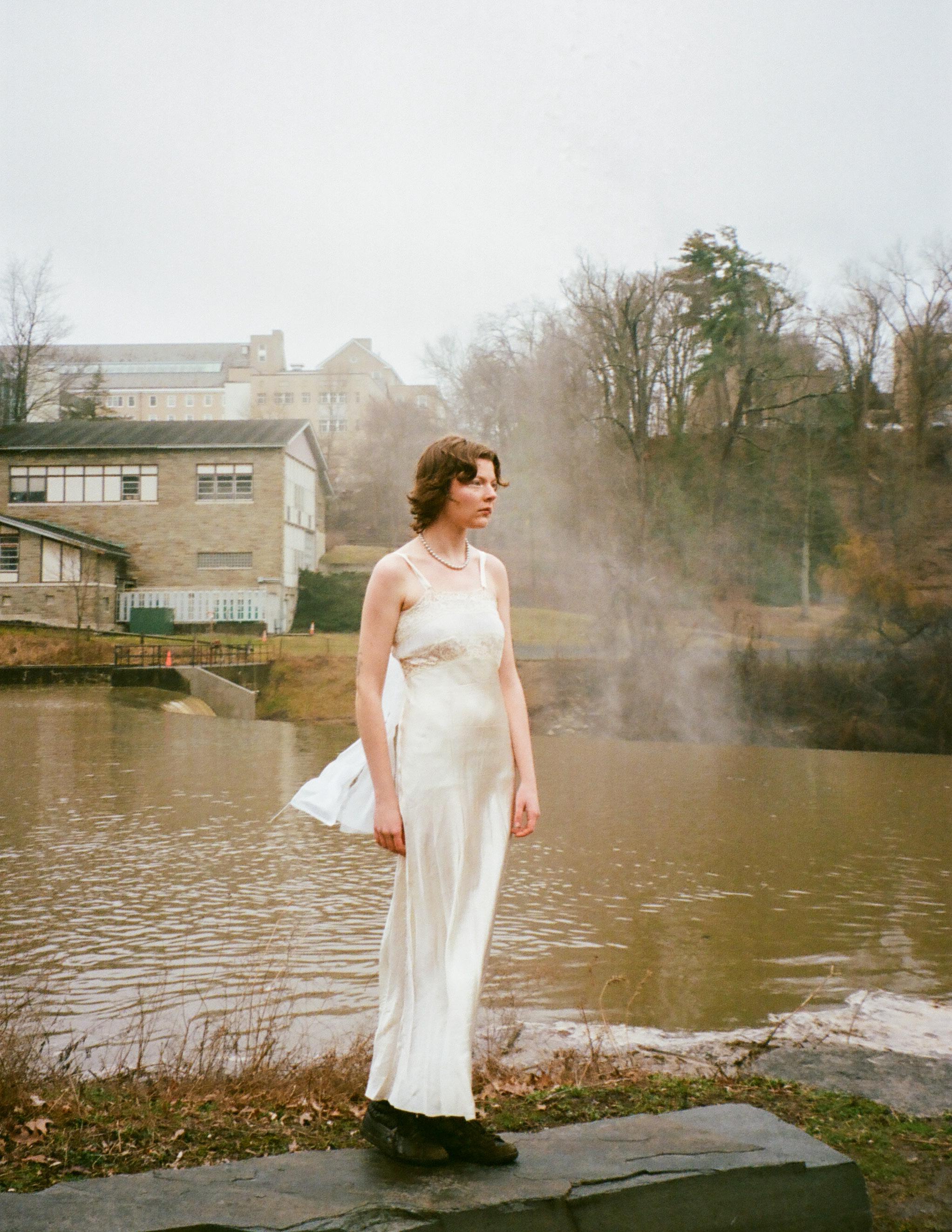

At sixteen I knew everything, at nineteen, nothing at all. When my mirror stares at me, her eyes gleaming with hypocrisy, my mind is drowned by one question: who is this all for? Contorted and confused, I see myself, successfully shaped into the poster child of the male gaze. I did this. I chose this. Why does it feel so wrong?
Disguised as the new standard of empowerment, they praise my selfobjectification. You’re young, have your fun! They tell me. But, is that fun at all? I play my own Goldilocks, chasing the perfect medium between too easy? too prude! A tired attempt at embodying the perfect partner and perfect woman. But this woman, whoever she may be, is built of traits, impossible to have.
I’m supposed to feel liberated. I’m supposed to feel free. For years, I even fed into it. My confidence, I reconcile, is manipulated by the approval of the boys around me. Finding serenity in escape, being a provocateur is an outlet. If everything is wrong, my legs look right. I see the game and want to beat them at it. But the match is fixed, and my sense of self is down one-zero.
Seen. Touched. Loved. Valued. I know what I want, even more, what I need. But pursuing this messy notion of self-worth has left me abandoned. My body is my beauty and my beauty is my power. In some strange paradox, the more sexual power I gain, the more drained I become. In chasing empowerment, I am losing my worth.
So I fall back upon my initial question —who is this all for? The unfunny jokes about my body, I mechanically laugh at. The cocktails of nicotine and caffeine, swigged back to suppress any whispers of hunger. “You make me really happy”, I lie through my teeth.
Like Laura told Paul in Kundera’s Immortality, the feminine body is sexual from the beginning, a priori, constantly and completely, by its very essence. For everything I cannot change, what else is there for me to do? The insatiable intrudes my mind, and I know what I need to prove. If not to them, to myself. My dresser opens, and I re-lace my tightest black corset.
Savannah Shaub
47


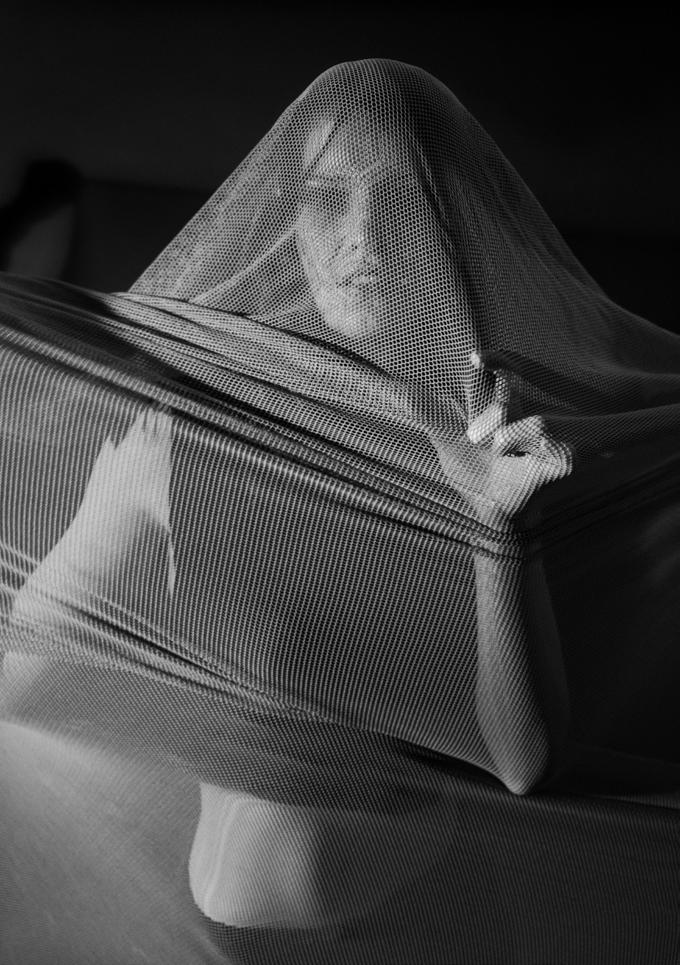
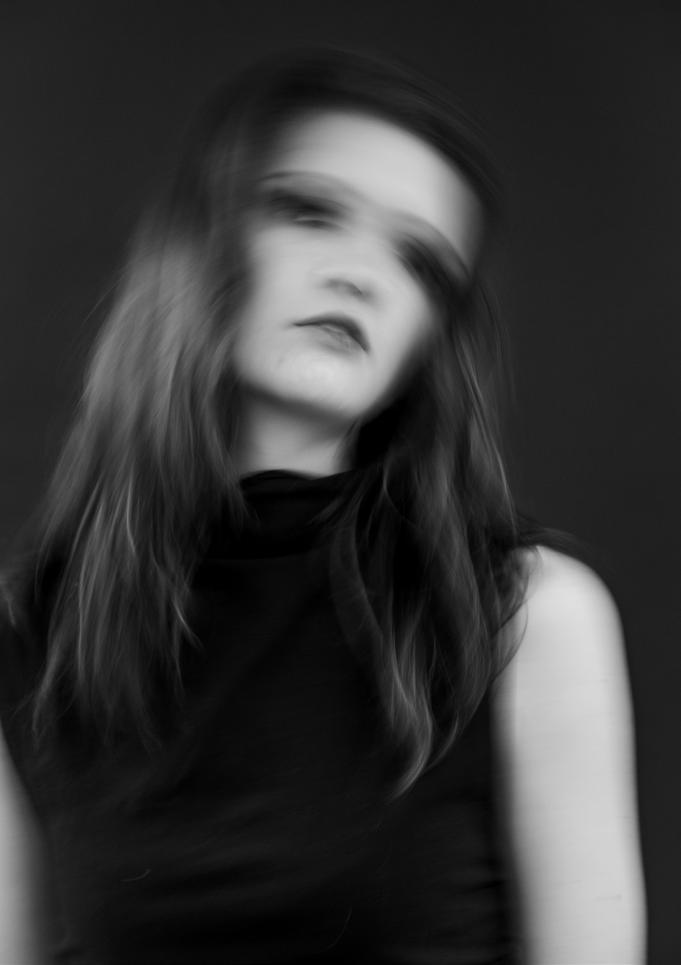
48
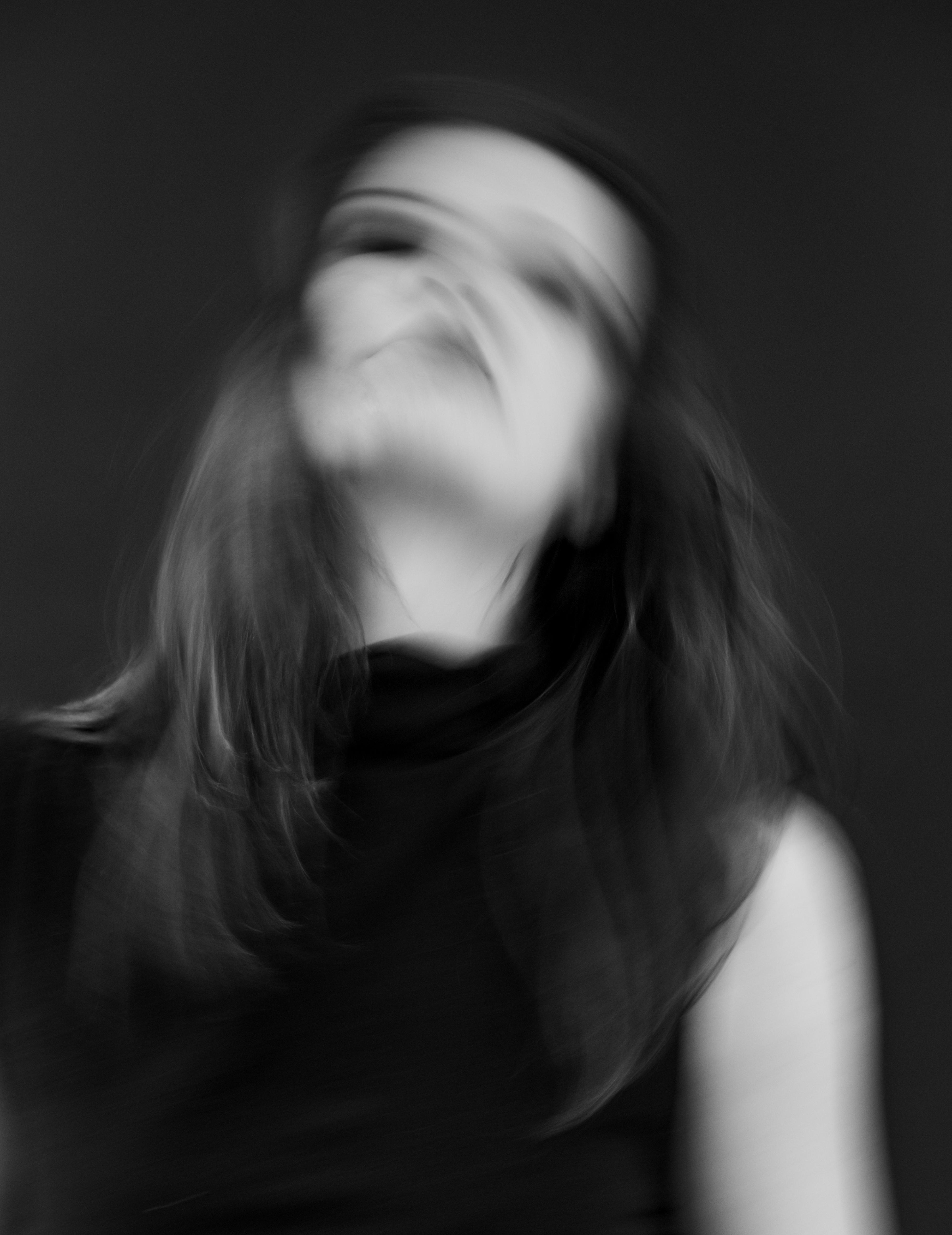

Escape follows a lack of connection.
Tell me why, as an extrovert, I can be in a room full of people I know and still desire a complete escape. A lack of connection to my surroundings and unengaging conversations can feel like a bunch of mouths moving, without providing me with internal comprehension. As someone living far from home and not having previous relations with anyone at this school, I often feel disconnected, and this can call for a need for escapism. I can’t tell where I need to go because the old places I cling to are gone, and this new part of me isn’t feeling safe and home yet. My mind has been feeling lost, and I don’t know what direction to move. Pressures about what professional path I should take constantly surround me and push me into positions I don’t even know if I want. Thinking about my past brings up the pressure of leaving behind what once made me unique. A lack of connection leaves me escaping to my inner thoughts more often than not and losing touch with the business around me.
I came here to develop and build meaningful relationships, but all I have found so far is confusion and uncertainty. Taking deep breaths gets complicated when the air is stiff. I constantly feel others’ judgments crash over me and scrutinize my sense of style and belonging. I always thought college would eliminate the boxes we had to put ourselves in. Now, the boxes are more strict. It appears that it is time to choose the box I must stick to for the next four years and let it determine my future outcomes.
50

To delay these pressing decisions, I escape to the place that has always had the most meaning: music. Songs, albums, and lyrics have supported me through all kinds of transitions, heartwrenching periods, and joyous stages. When the world tightens around me, and colors don’t echo, I can put on my headphones and transform. They take me to past places I’ve been before and allow me to dream about a world that I want. Don’t get me wrong, happy-golucky songs take up a significant portion of my listening time. But, engaging with music that deals with existentialism, the uncertainty of meaning, and the pressure of surroundings allows me to reflect on where I am at and where I am going. Full-concept albums by artists like Pink Floyd, Radiohead, The Beatles, Marvin Gaye, Elton John, and David Bowie bring me an unparalleled connection to myself and remind me of my purpose.
The concept album offers a different approach to musical engagement. A unified theme is upheld throughout the record to bring a cohesive listening experience. Expansion of thought is delivered through persistent themes that anyone can relate to if they give it a chance. These albums allow me to escape into stories that often parallel my struggles and triumphs to ultimately lead me to a deeper understanding of my environment. A total freedom of creativity delivers an artistic magnitude containing the power to evoke such real emotions. When I escape to sound, rich vibrancy and the colorful nuances of my surroundings flutter in my mind. The inspiring and unrestrained artistic expression fuels my desire to create.
Leaning on creativity is the best way to escape the dreariness of the everyday mind. Expression is the way to present internal feelings and desires to the outside world. With creative expression, it feels impactful and can reach others. As someone who grew up around artists, I have always been encouraged to create. I would color outside of the lines. Lately, I don’t feel this encouraging creative atmosphere. The paper in front of me has remained blank. Artistic escape has recently become another item on my calendar that I can’t seem to get to.
A full calendar leads me to stress about completing constant, unfulfilling tasks day after day. I’m just going through the motions lately without making any connections. When I think about my past, was it always this way? I’ve always had it figured out and knew what I was working towards. Lately, I can’t see straight. I’ve been answering questions with no confidence and saying, “ I don’t know” and “I’m not sure.” Does maturing mean realizing that you aren’t sure? I’m scared that not knowing about things diminishes the presence of my individuality and character. The strong opinions that always directed me slowly fade, and my inner confidence is fleeting.
Finding an escape is tricky. All the times I want to escape, I can’t. Lately, I’ve been running to solve my problems instead of running away. When I want to escape, I will instead put effort into not needing an escape. Running towards relationships that fulfill me, chasing a deeper connection with my studies, and pursuing meaningful interactions. This is easier said than done, but step by step, it can make the difference.
Stella Crawford
51
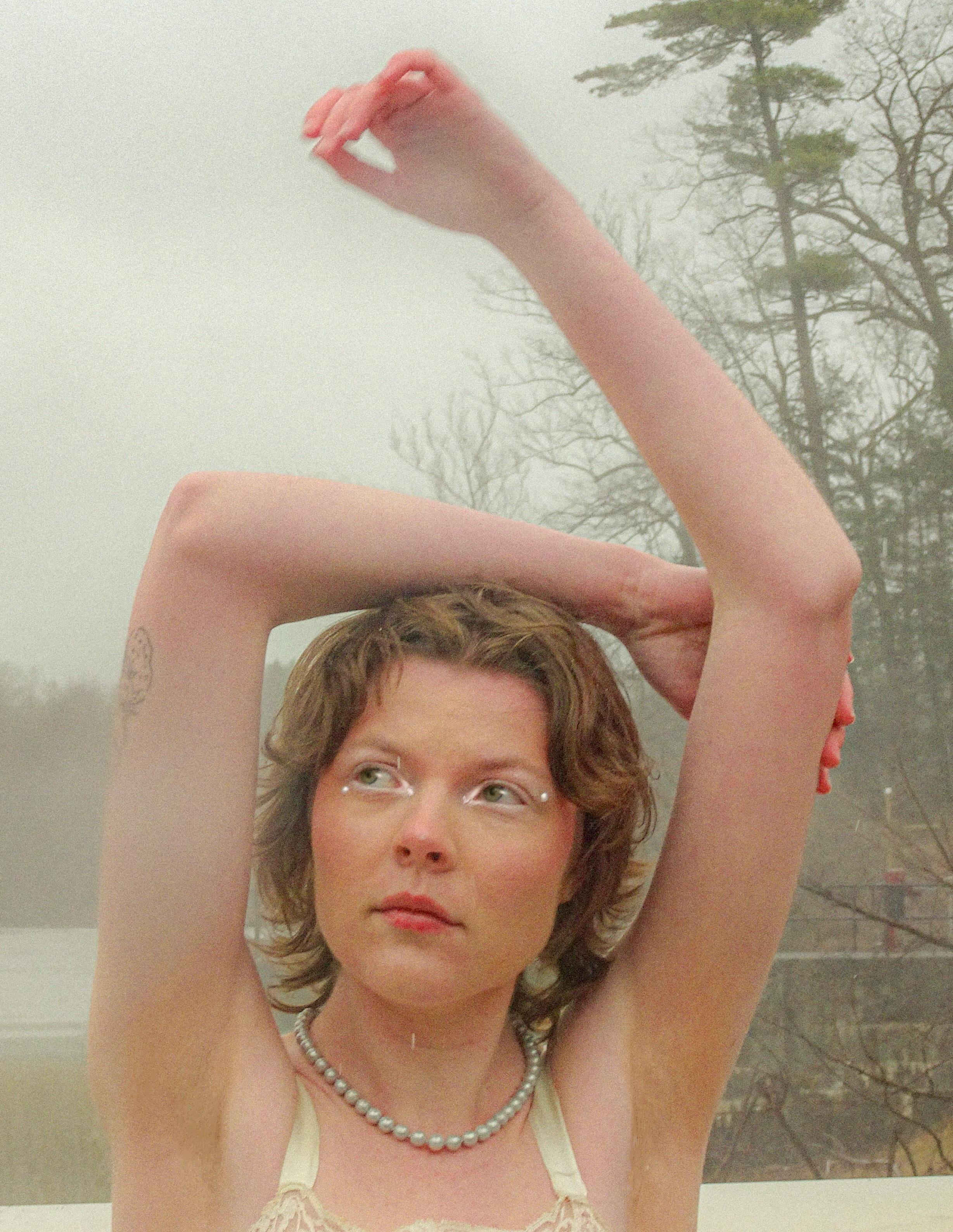

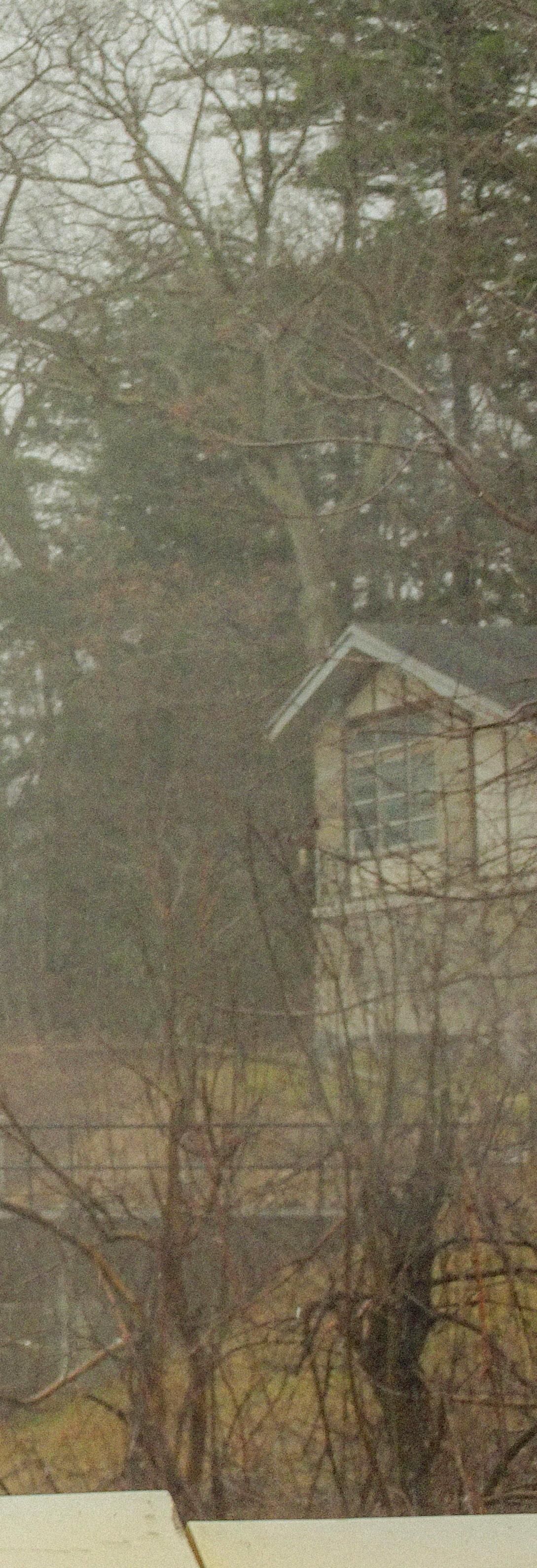
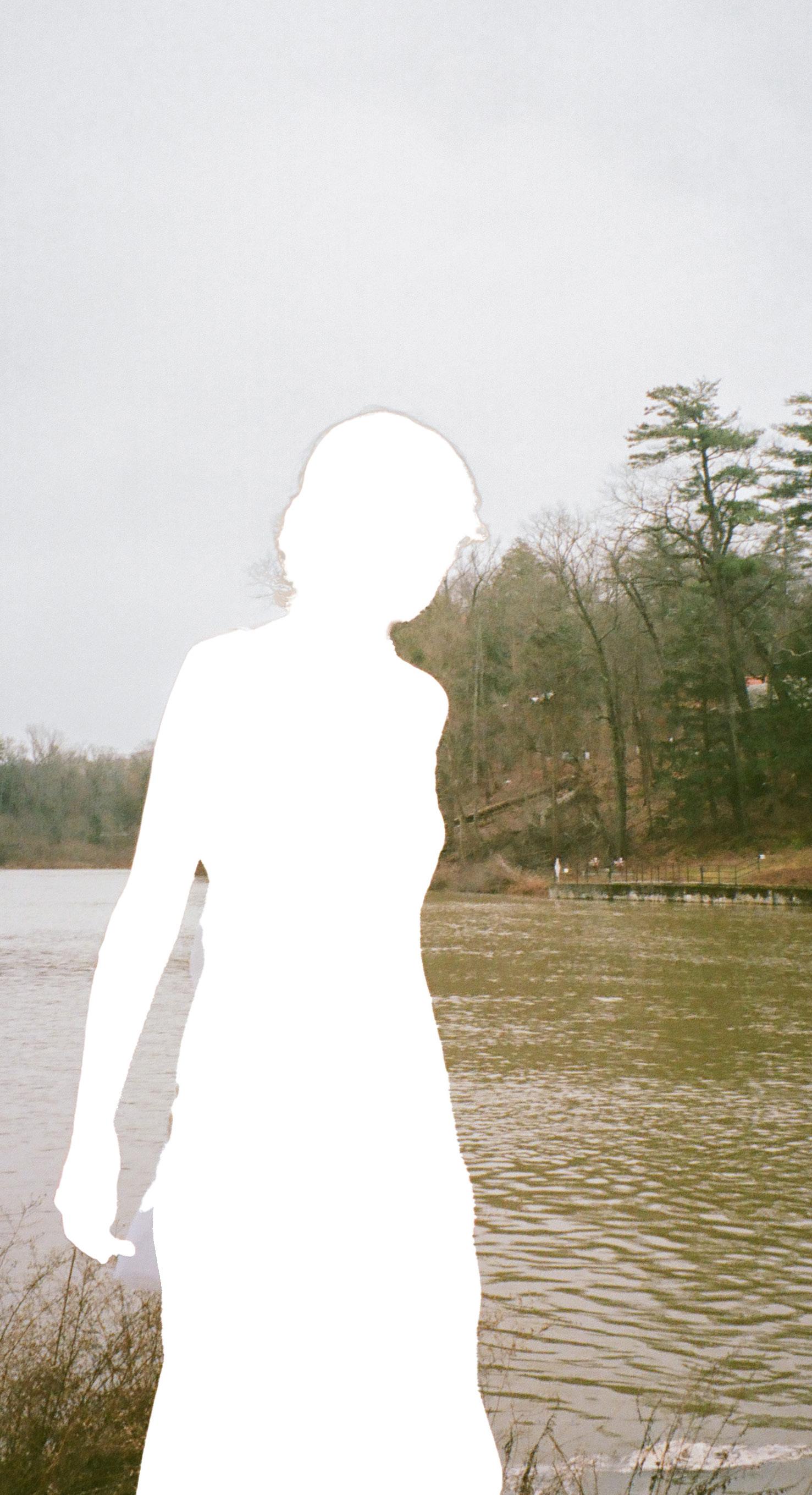
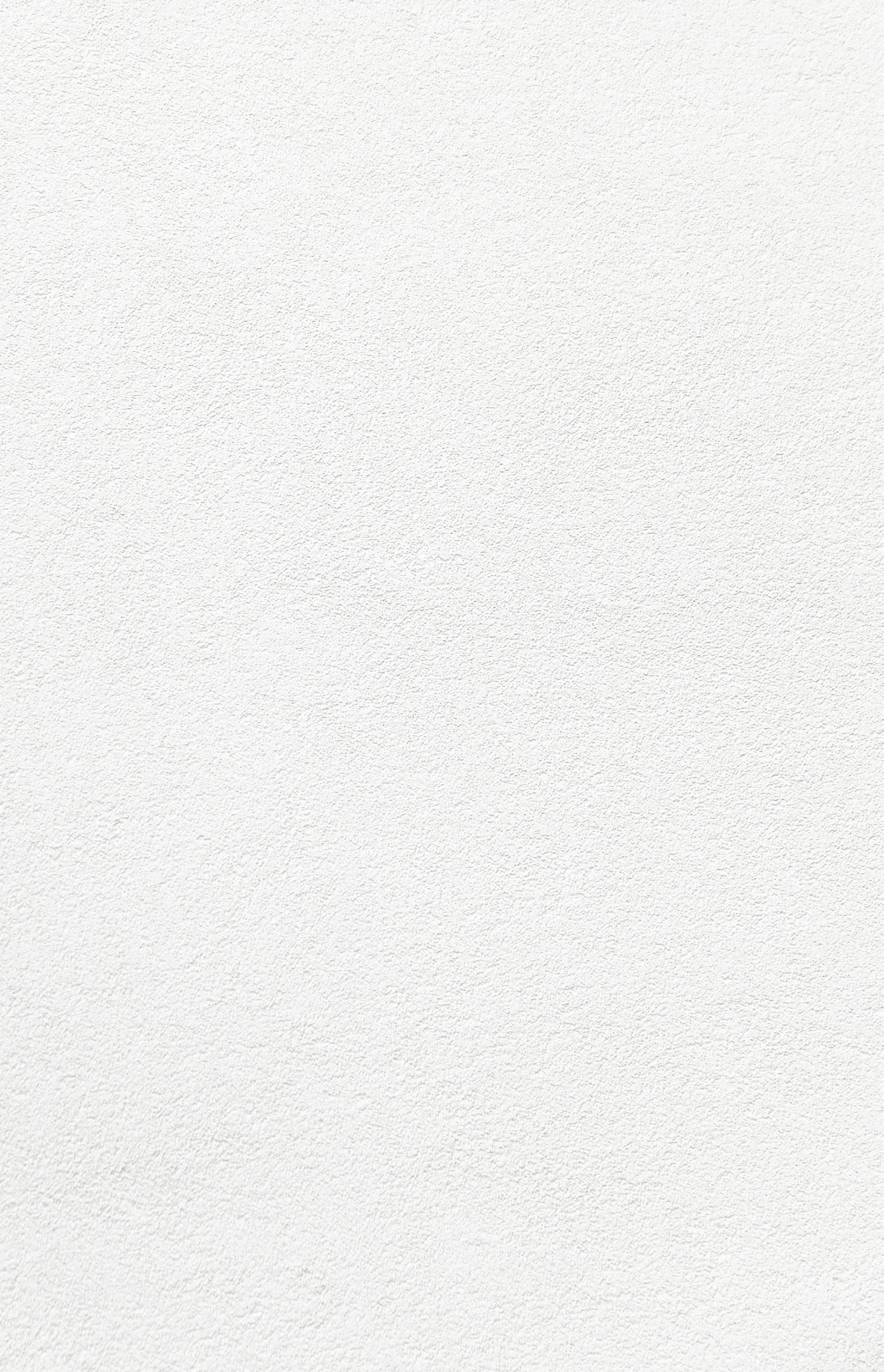

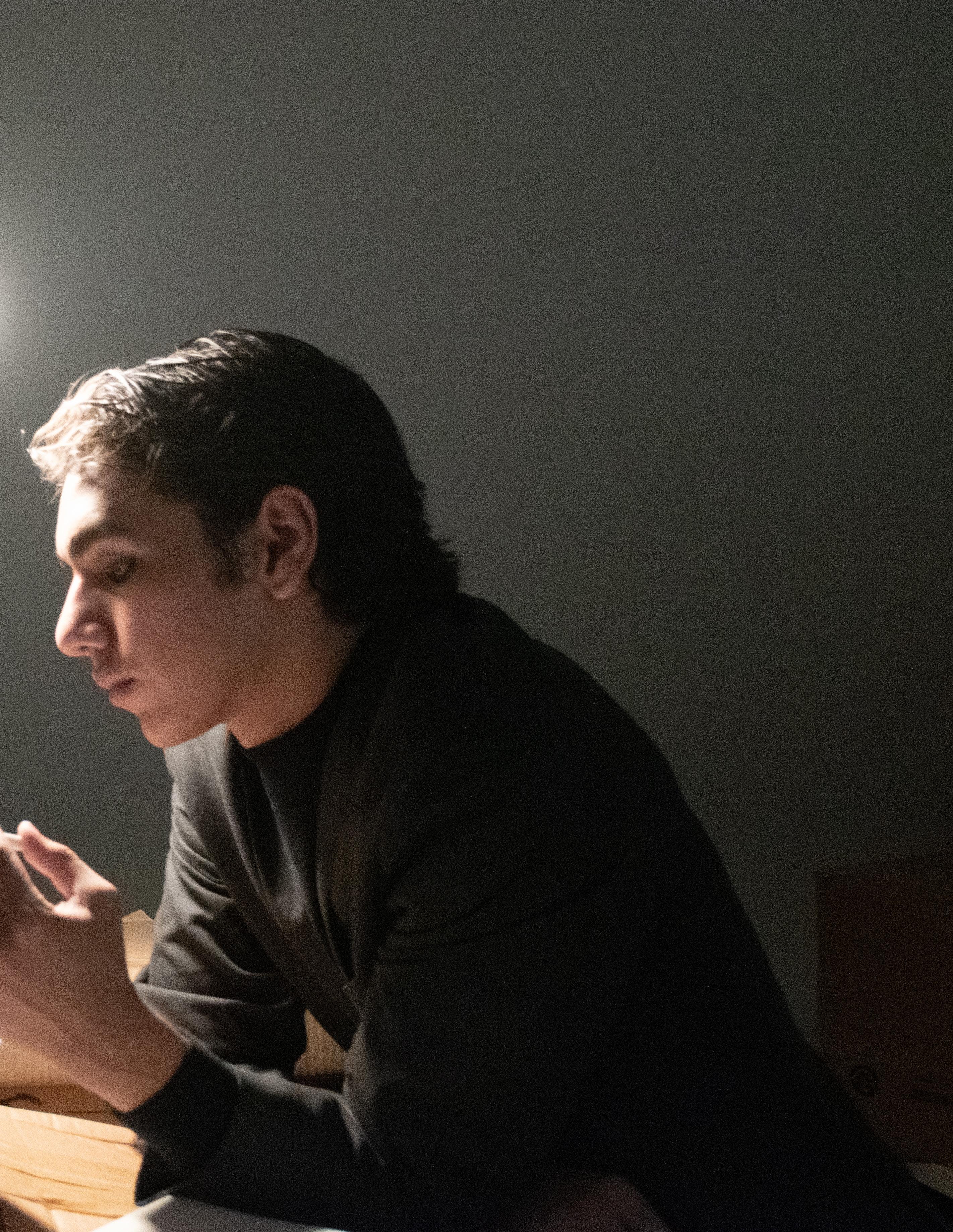
PRAGMATISM
Directors: Misha Caternor, Eliot Lee, Alina Chisti
Models: Santana Casas, Xavier Pazos, Neva Peltz, Eliza Salamon
Art: Alex Chou, Jolin Li
Beauty: Irenys Reyes, Linda Sun
Creative: Tricia Derecho, Tanya Fan, Joonah Jang, Catherine Pak, Imran Shitta-Bey
Editorial: Shira Oelsner
Fashion: Saskia Gonzalez, Jack Long
Photography: Jack Li, Lucia Savoia
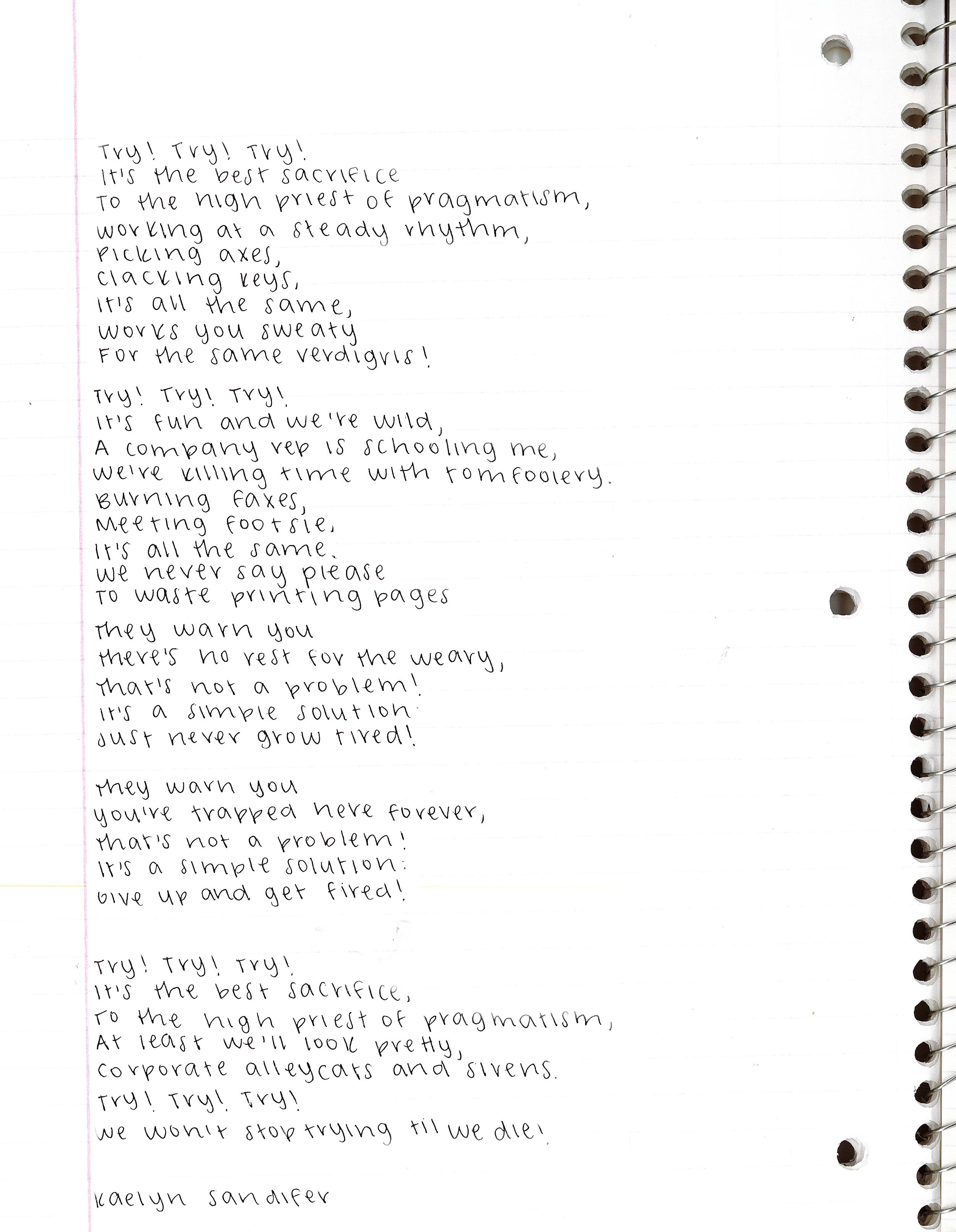
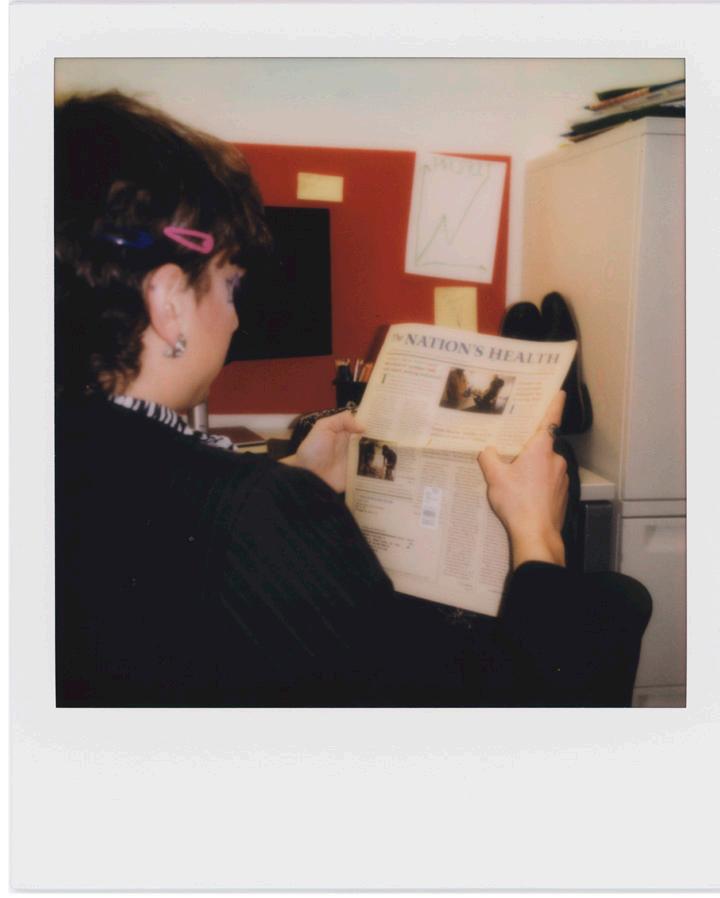
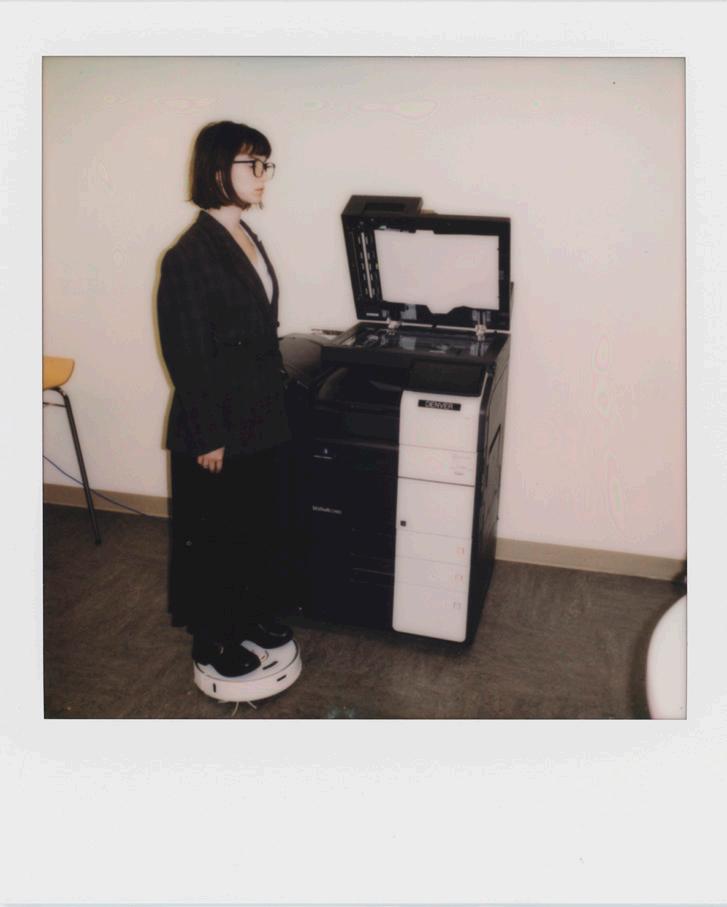

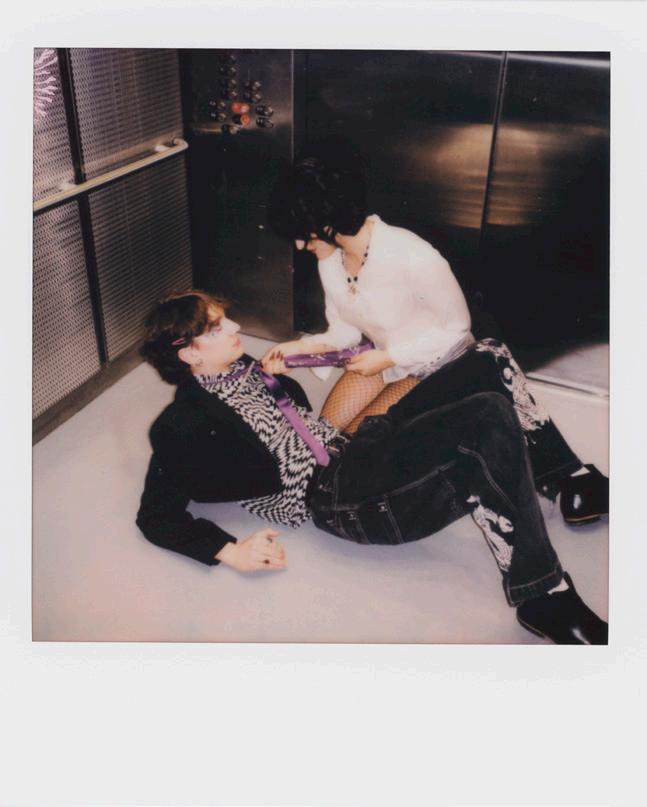
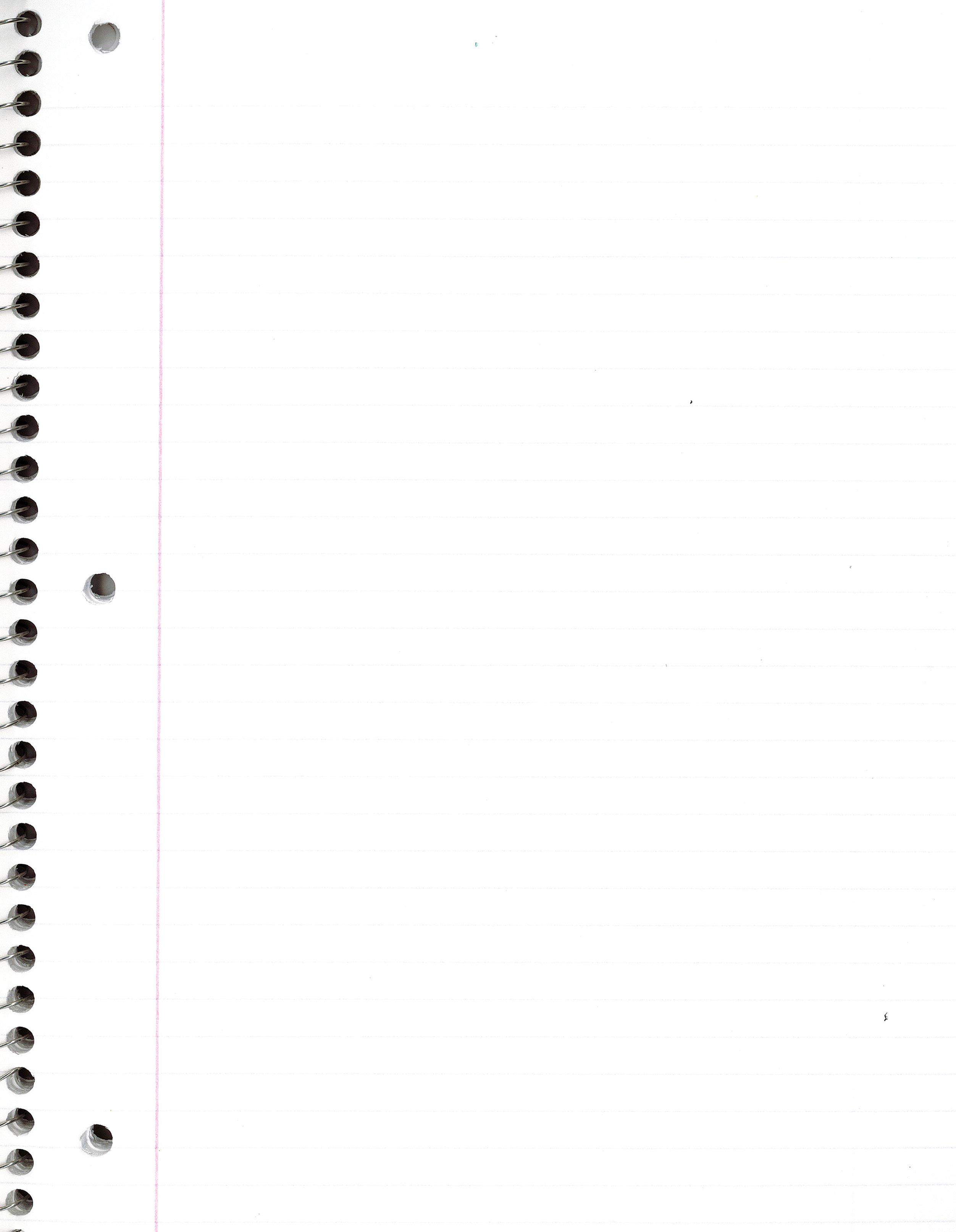
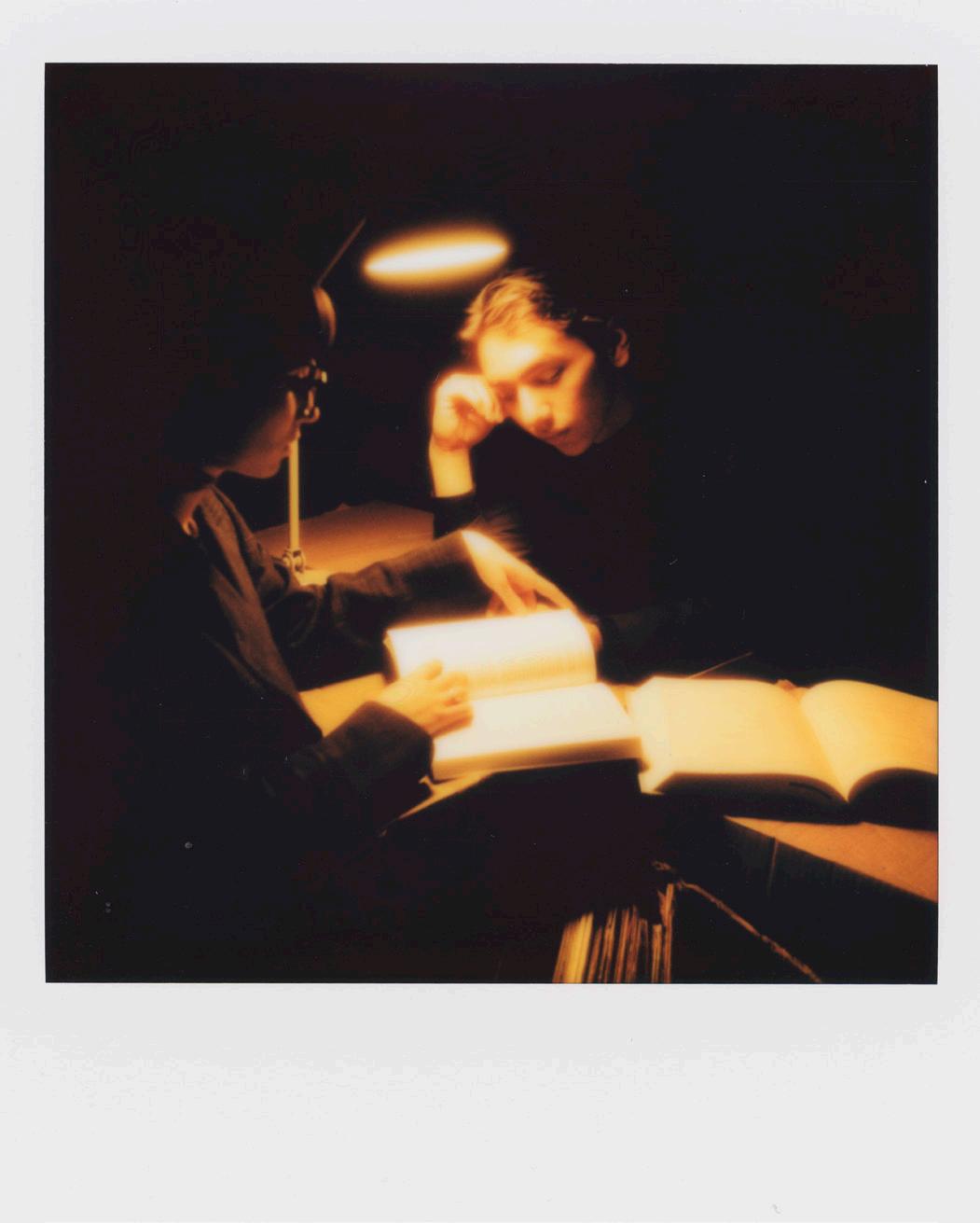
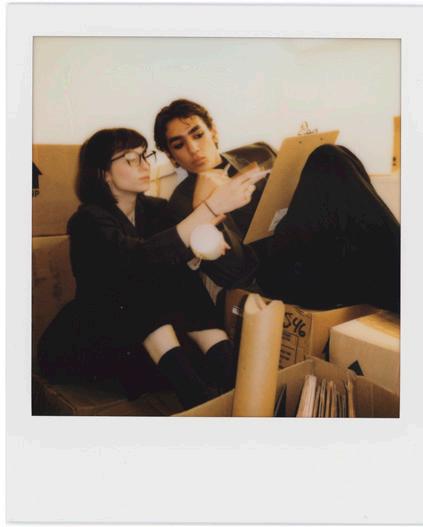
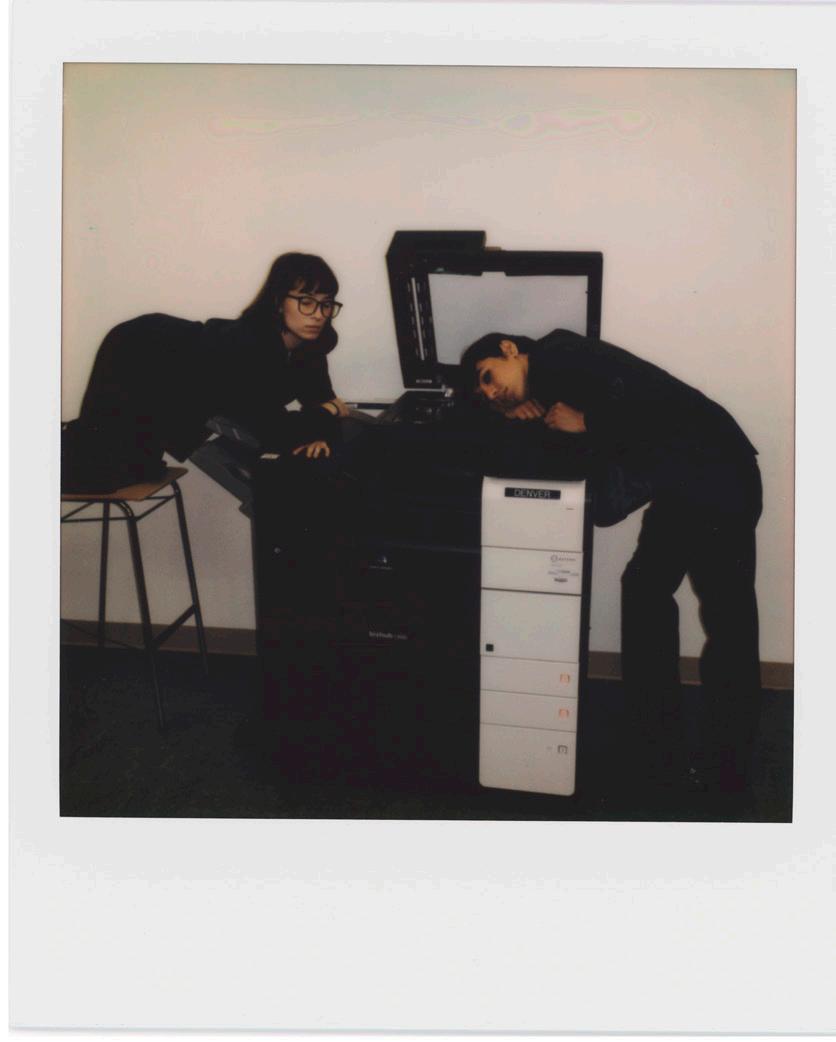
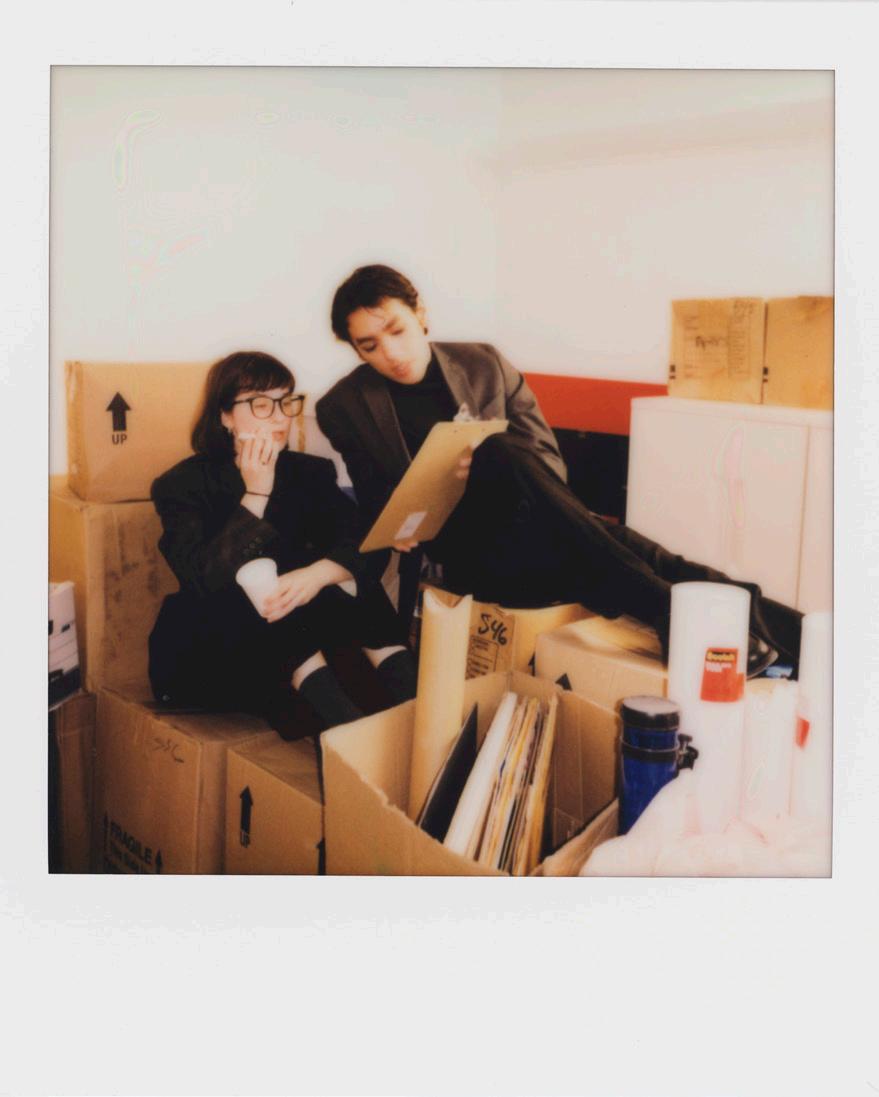
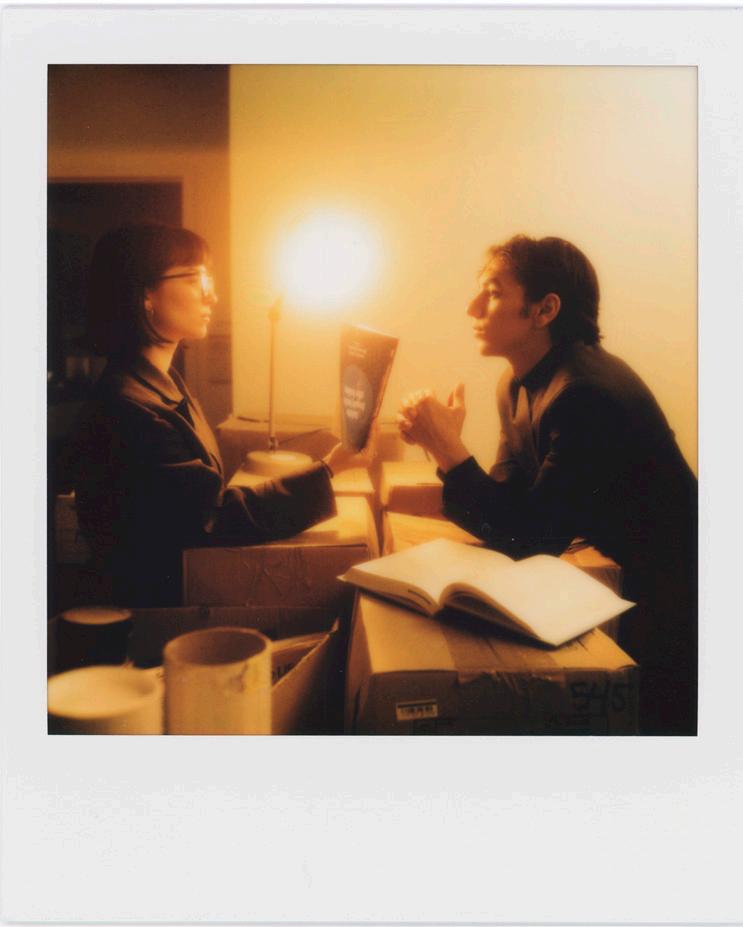
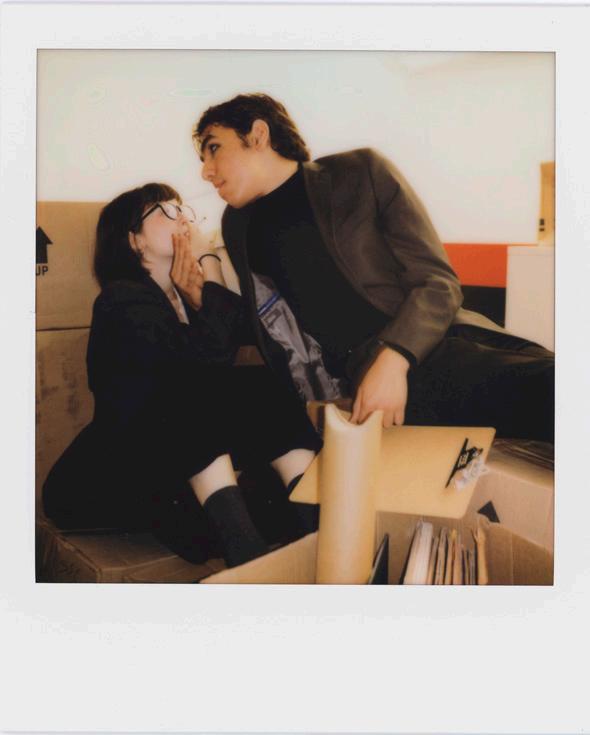
57
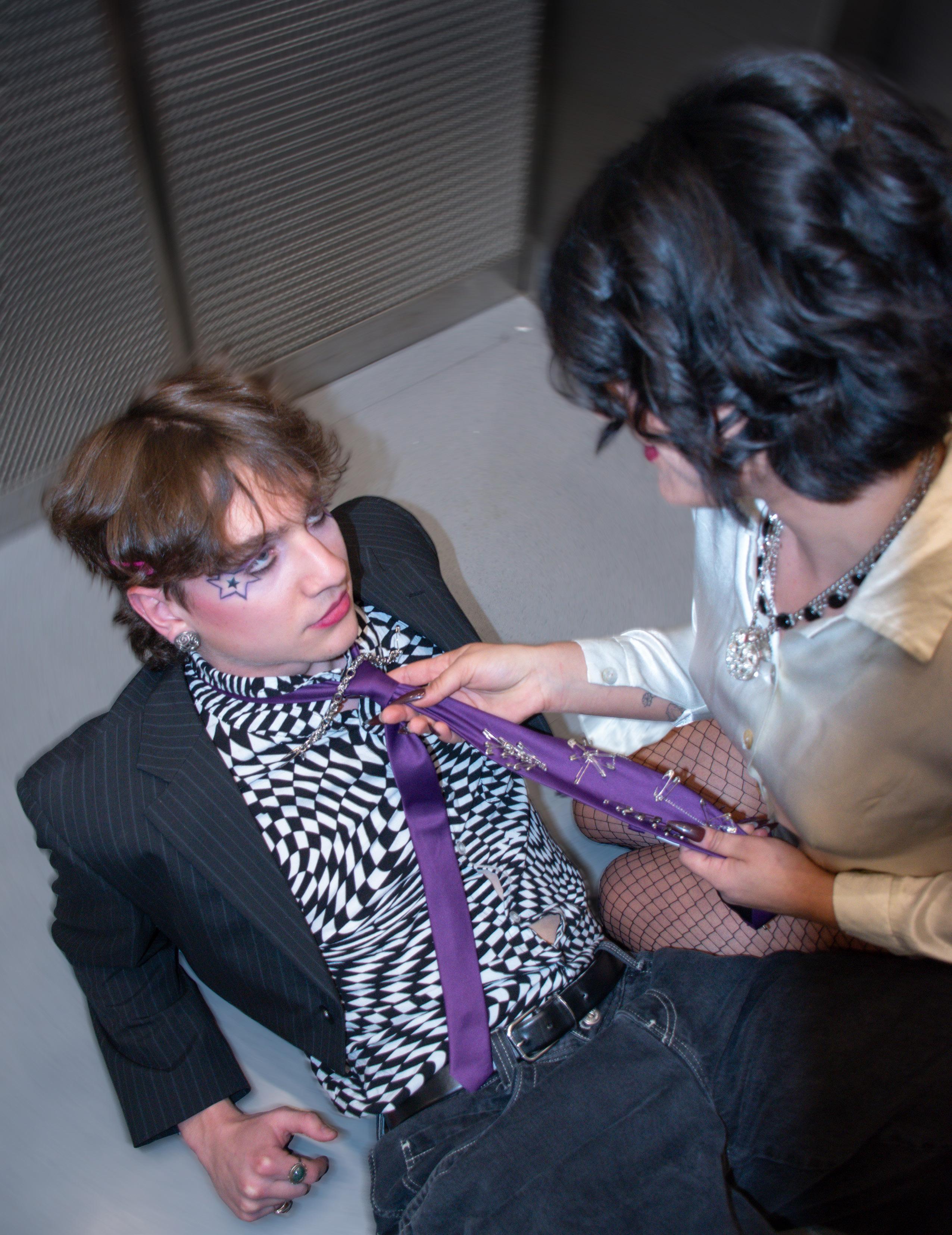
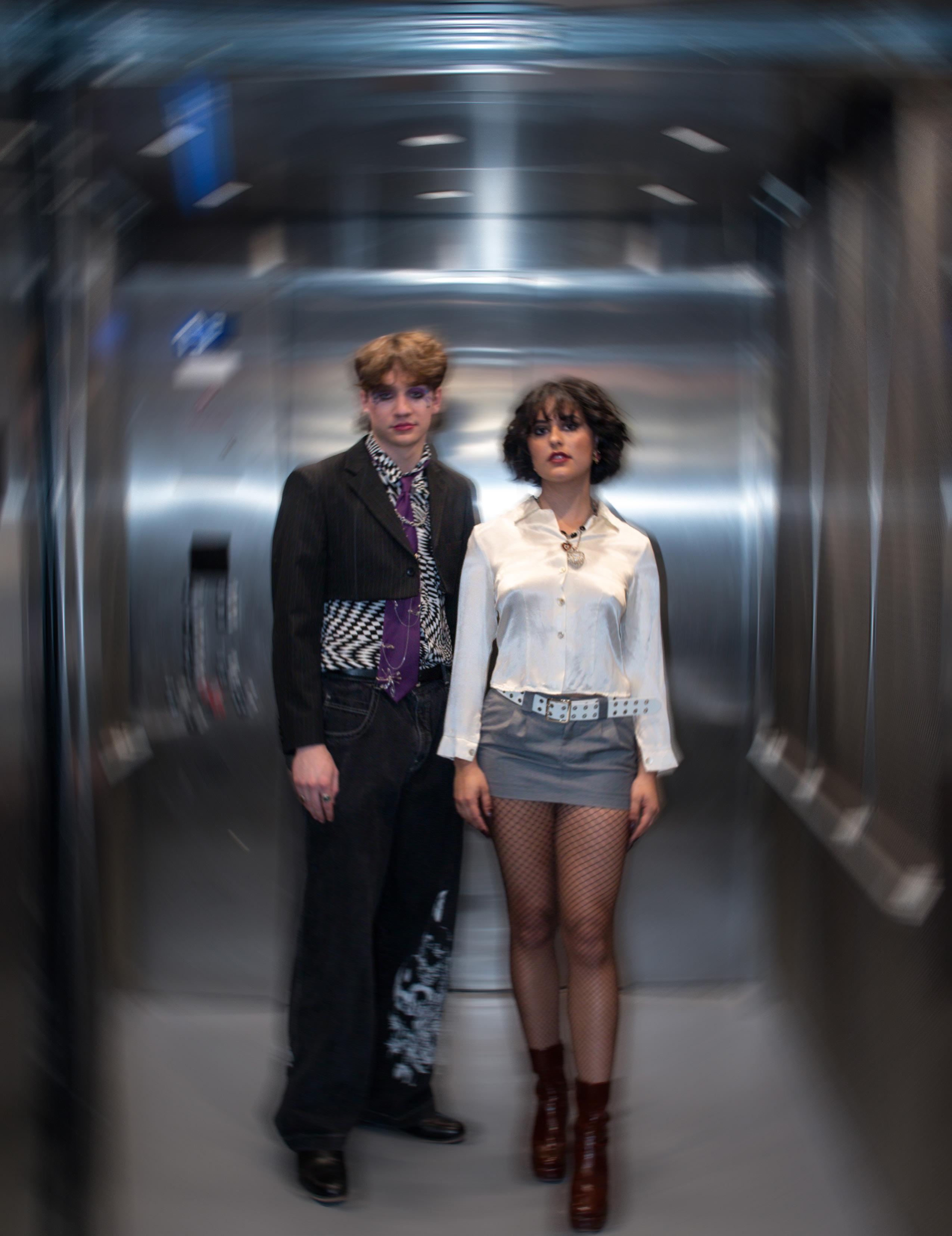

THIS IS TO INFORM RESIGNATION HAS BEEN RELIEVED FROM THE INC. ON THE OF
MONDAY.
60

YOU THAT YOUR ACCEPTED AND YOU ARE SERVICES OF THREAD CLOSE OF WORK HOURS
61

COUNTERCULTURE
Directors: Kaelyn Sandifer, Jillian Walker
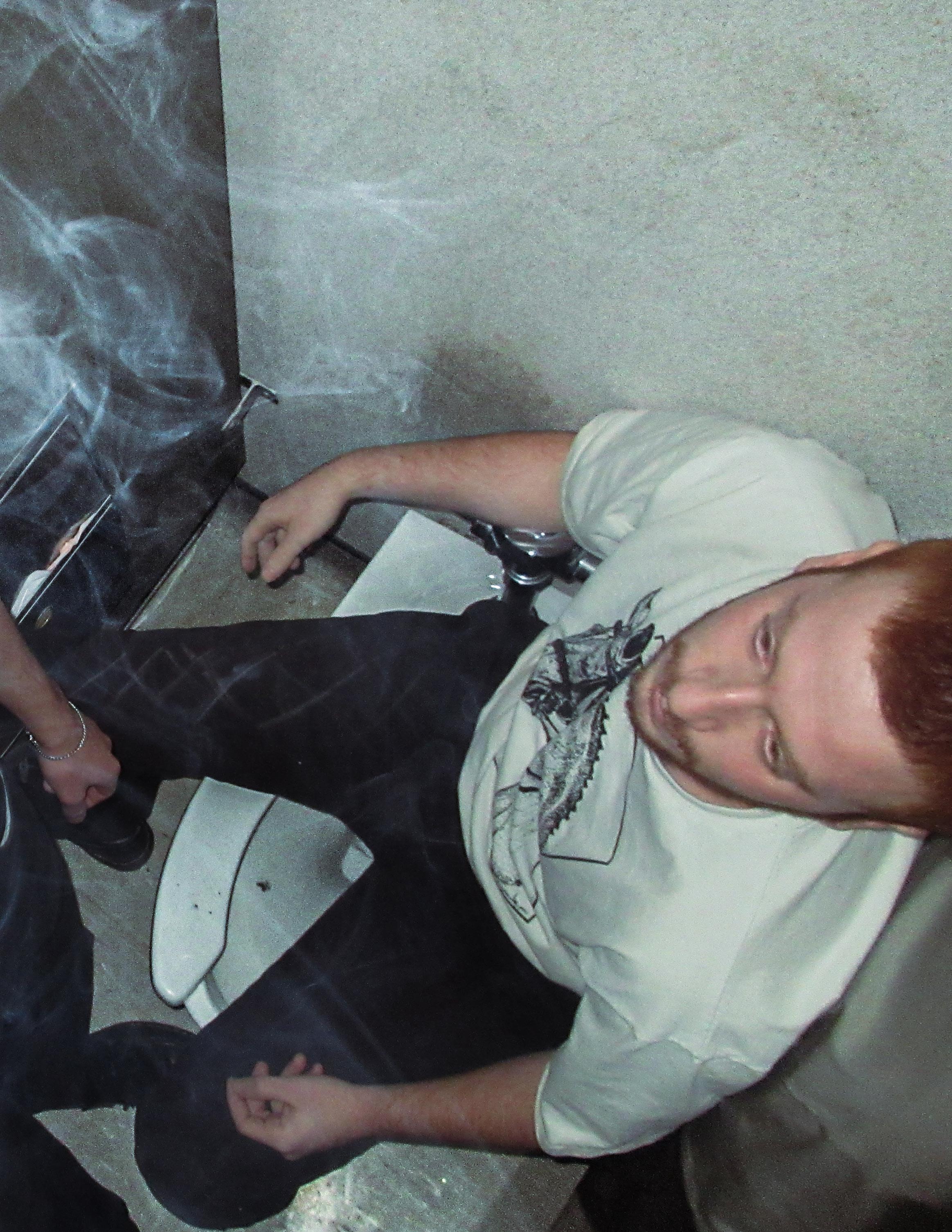
Creative: Derek Block, Sophie van Straten, Gabriel Wolf-Velarde Fashion: Brandon Leung, Kaia Ross, Jesse Szewczyk-Buff
Photography: Oscar Callamari-Abrams, Anabelle Lau, Eve Riskind, Millie Roper
Models: Saniah Adams, Brandon Chandler, Gwen Gravador, Aidan Freedman, Emmanuel Kaiser-Veyrat, Samuel Reveiz, Logan Roberts, Sonia Talarek
Art: Ria Panchal Beauty: Athena Deng
Punk Music is Really Hard to Make, and Dead Letters Are Really Good at it.
An interview by Carolyn Dunn with Samuel Reveiz, Sonia Talarek, Aidan Freedman, and Brandon Chandler of Cornell’s
What does the label of punk mean to you in regards to your music or yourselves?
AIDAN: We’ve taken that name to heart—it’s a bit of a guide. The emotionality behind punk makes the whole process a little easier. It’s something a lot of people can relate to.
SAM: In songwriting I take personal frustrations and try to connect them to something more broad and structural in society. I’m not so good at the personal stuff. You guys have more of a knack for that. Together it coheres and you can go from personal to political.
How has your experience been playing in the music scene in Ithaca?
SAM: My experience is that it’s been incredibly supportive. For example, Fanclub really helps out. I played shows for Fanclub twice, and I felt like I was given a chance as a new artist to play my stuff, and I think that’s really cool. Other bands have also been very supportive. Kevin from Chimes of Bayonets has helped me out a lot. People definitely want to support new acts and it doesn’t feel like people are at each other’s throats.
SONIA: I feel like people are open minded. They come to a show wanting to enjoy it, which is helpful. People aren’t coming there to be judgy.
AIDAN: Yeah. Except for me.

Dead Letters.*
How would you characterize the scene here?
AIDAN: There are a lot of punk bands. I think punk is easy to make so people like to make it, which is great.
SAM: Our music is, like, really hard to make.
AIDAN: There’s more experimental music too. There’s lots of kinds of rock, and there’s some folk, Lost Marys was super good, and Home for Bugs has been there my entire Cornell life. They’re awesome. I think everybody just kind of gets to do what they want and there’s a lot of different people being represented in the Scene (capital S).
SONIA: It’s a little bit of a bubble. Because of what I’m attracted to in terms of shows I want to see, I get a very limited understanding of the scene. Bands that played at Big Red Icon are doing their own thing that I don’t see at the shows. They’re doing really cool stuff too.
AIDAN: Shoutout Twin Court.
Do you feel that it’s the responsibility of a local scene to be politically active?
SONIA: I don’t see it as an obligation, per se. I think that we are obligated to be politically active as much as anyone is. It’s what we want to do rather than a sense of obligation.
SAM: If you look at where punk came from, it came from a dissatisfied working class. As the welfare states were
64
disintegrating in Europe, and it was getting worse in the US in the 70s, it came from a place of real anticapitalist dissatisfaction. If you want to talk about music being commodified, there is an issue if you take up the aesthetics of punk and leave behind or openly contradict what it stands for. You have a responsibility to be honest, and if you’re thinking about politics, and you feel them affecting your life then you should write about it. You shouldn’t force yourself to write stuff that isn’t close to you. Just be mindful about where punk came from, and what it meant for the people that created it while you try to work it as a composition.
Do you feel like being a student at Cornell conflicts or correlates with the music that you create?
SAM: It’s not a uniform experience, but generally speaking Cornell is only accessible to people from a wealthier class background, or at least the school functions as a tool for social mobility. Obviously, you can learn a lot here, but you’re accessing a credential in order to move up the ladder. A lot of punk ethos is very us-versus-them. It’s the exploited and the man in charge, and you go to class with people who are going to be in charge. It’s weird to say “them” because you’re part of “them” in a way.
SONIA: Sometimes it can be hard to take myself seriously given all the privilege and the situation that I’m in. I feel like other people have a lot more of a reason to be angry about this than I do. That doesn’t mean I shouldn’t criticize, but I just have to be aware of the context.
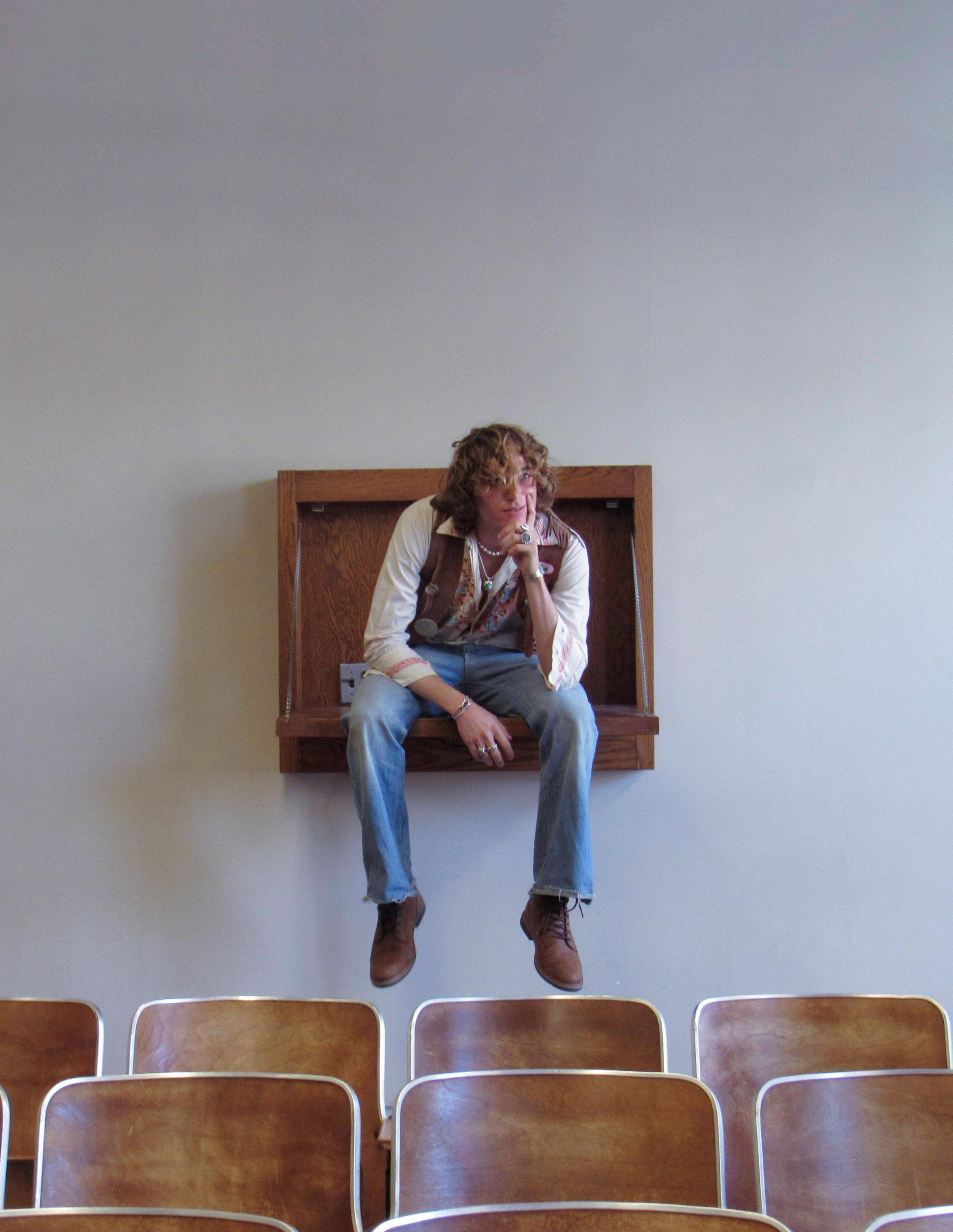
SAM: Critique can come from different perspectives with the same values in mind. Program to Decay, for example, is about feeling that you hold these values, but you feel them begin to slip away as you are able to access career success. That’s something that’s relevant to people here, but maybe not in another context. There’s still a way to criticize capitalism from where we are.
AIDAN: We are definitely coming from the Cornellian context, but there’s a lot of things about Cornell that have helped our band, too.
BRANDON: Being at Cornell has, without a doubt, made me a better musician. The university does many, many things I’m unhappy with but, to give credit where it’s due, it has facilitated a great environment where people can get together, play, and grow musically. Even without having taken any music courses at Cornell, I’ve had various unique music experiences that have pushed me to evolve my abilities and play outside my comfort zone. Playing in a band like Dead Letters, for example, was the first time I’d played punk music; it was even harder since I had mostly been playing indie rock/roots music in the previous band I was a part of, Elevation 404. I really had to try and push myself to come up with interesting ways to play that would complement the incredible songwriting of Sonia, Sam, and Aidan. I still feel like I have a lot to learn… but that’s the beauty, I suppose. In pushing myself to continue coming up with new things, I can definitely feel myself improving. Without the music community at Cornell, that certainly wouldn’t have been possible.
65
SONIA: Being in the scene at Cornell and an engineer means there are two very different types of people that I’m around all the time. Music is an avenue where I can be creative and express my opinions and my politics, whereas a project team is very social but it’s also structured a little bit like a company. There’s certain things people don’t talk about and lines I don’t cross. Sometimes I struggle to bring it together.
What was it like getting dressed up for the shoot?
BRANDON: I got to put on a nightgown and cap for the first time in my life. It was life-changing and, many years from now, I will tell my children and grandchildren all about that historic, March day.
What’s in the works these days?
AIDAN: We’re trying to get something recorded before we get out of here. We’re trying. If you’re a producer, hit us up. We’ll probably just end up getting some studio time recording stuff for memories.
THEN WE MADE JOKES UNTIL I TURNED THE AUDIO OFF AND THEY WERE VERY FUNNY AND COOL :3
Thank you Dead Letters for speaking to me <3 Find them @lead.detters on Instagram and see them in concert before they graduate!!!
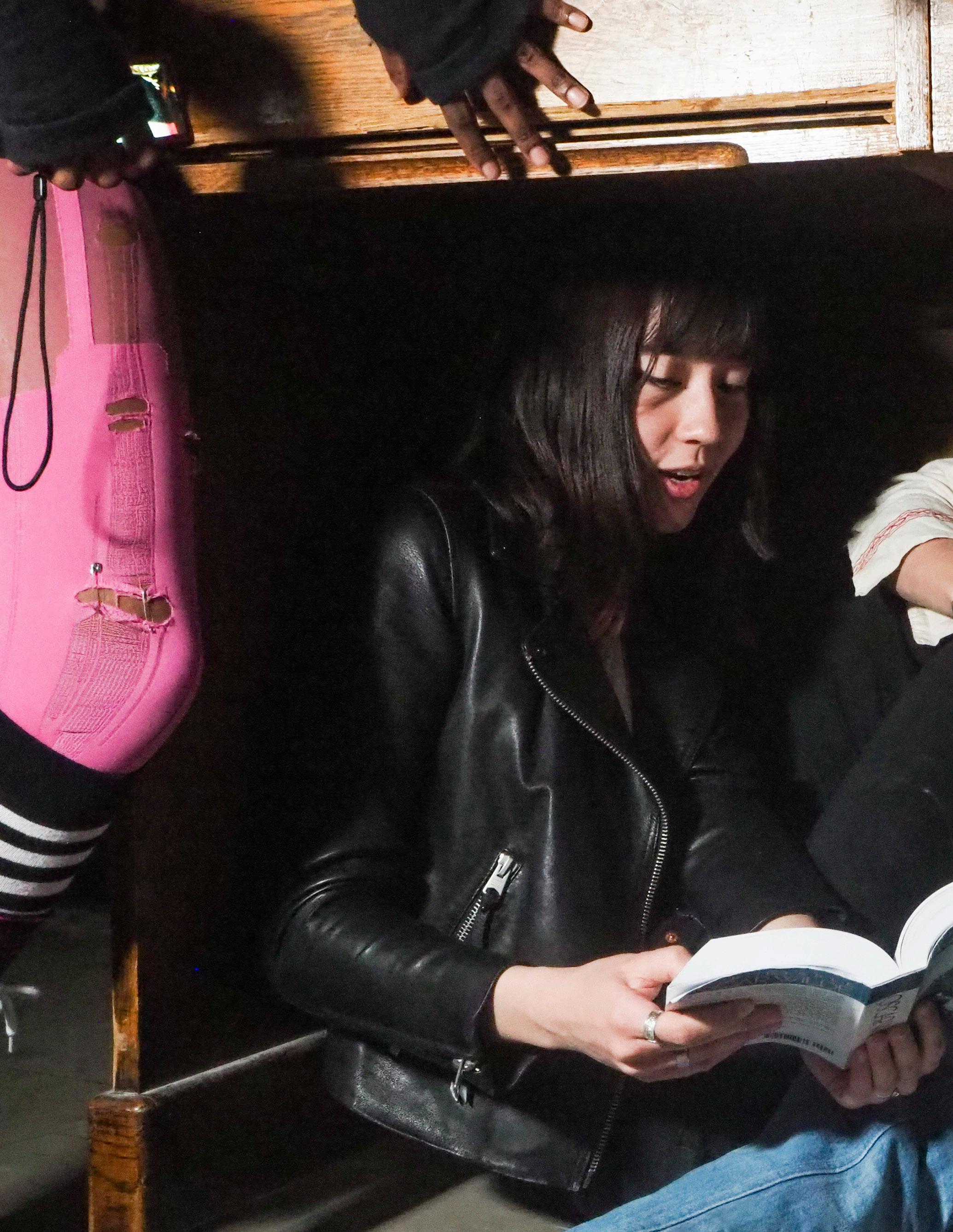
*I edited this interview for clarity and concision. *Brandon was not physically present for the interview so his words were dutifully relayed through Aidan.
66
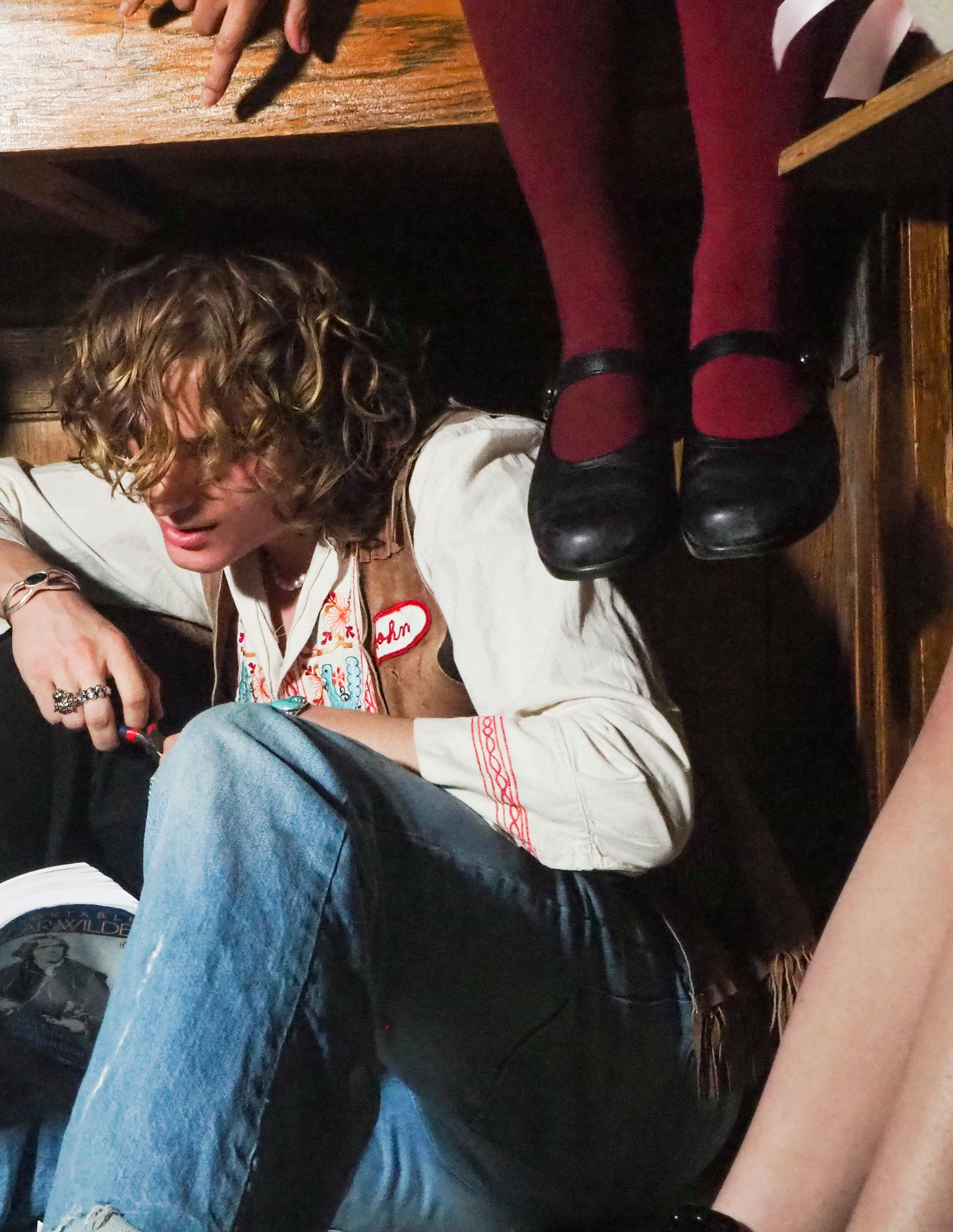
67
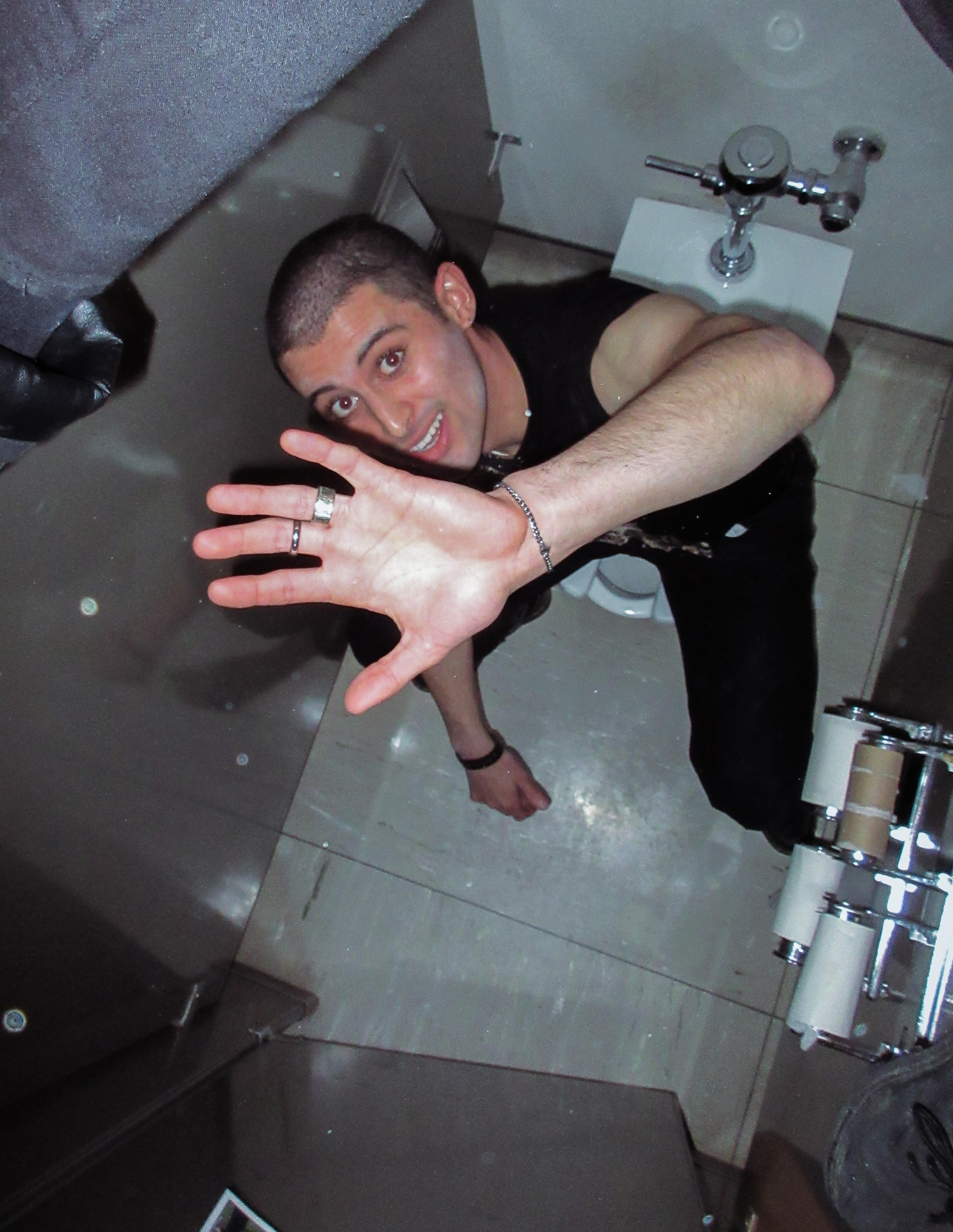

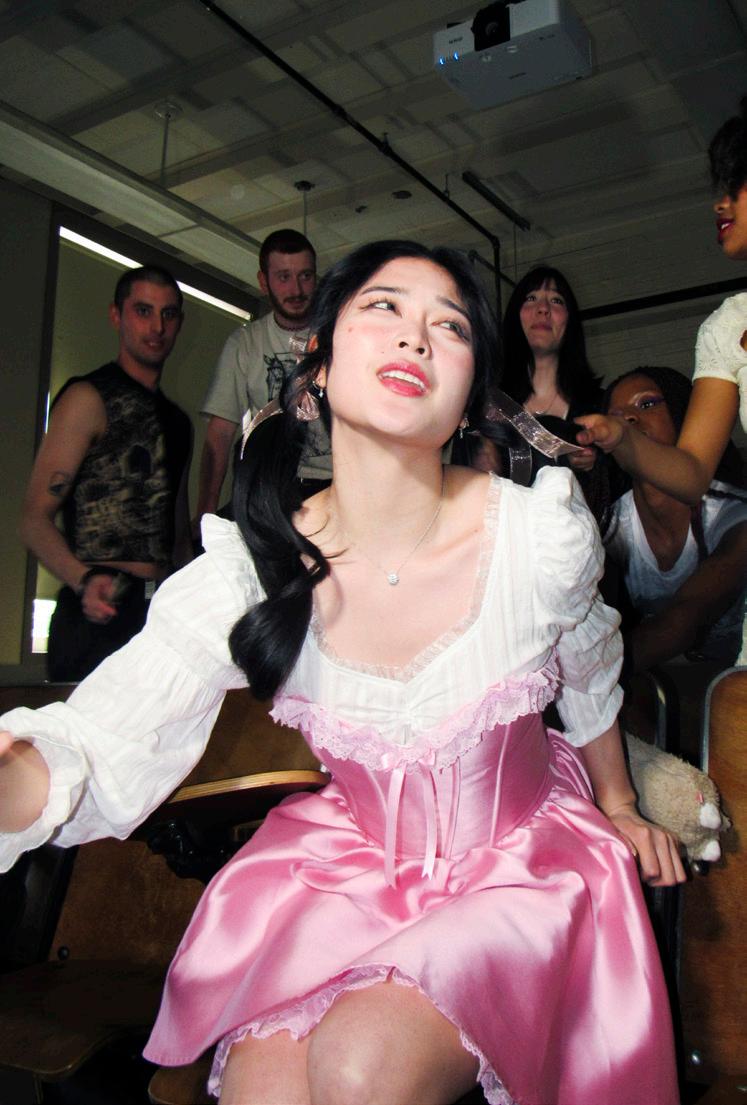
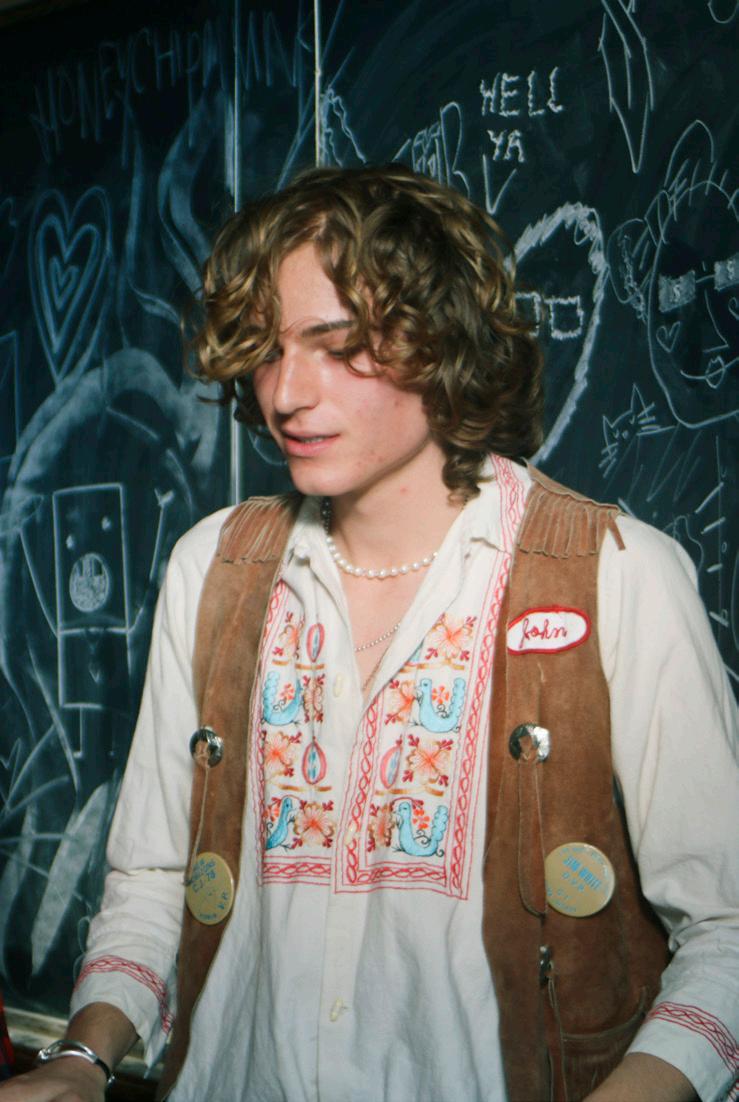
68

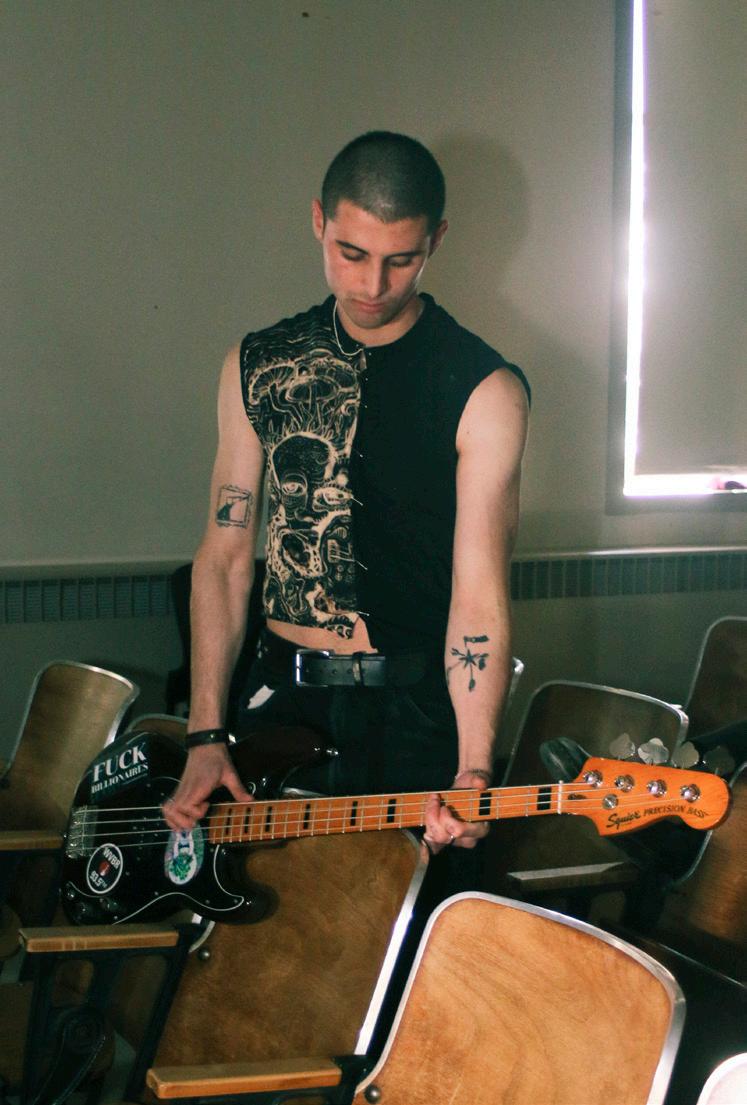
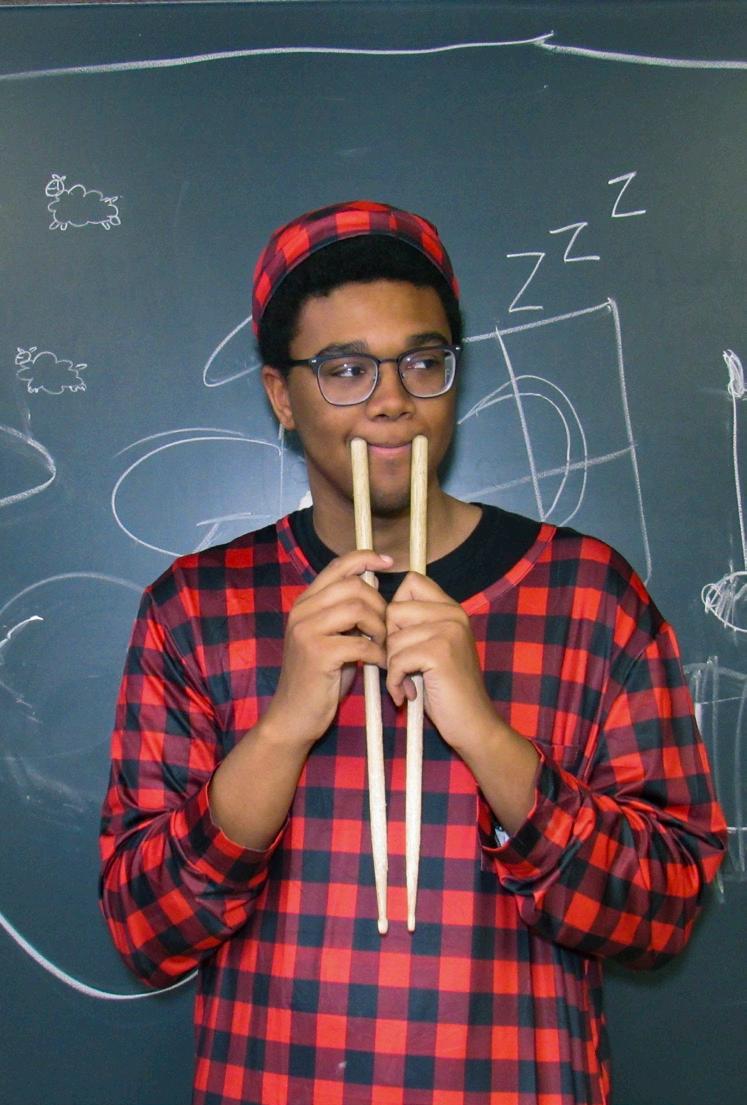

69
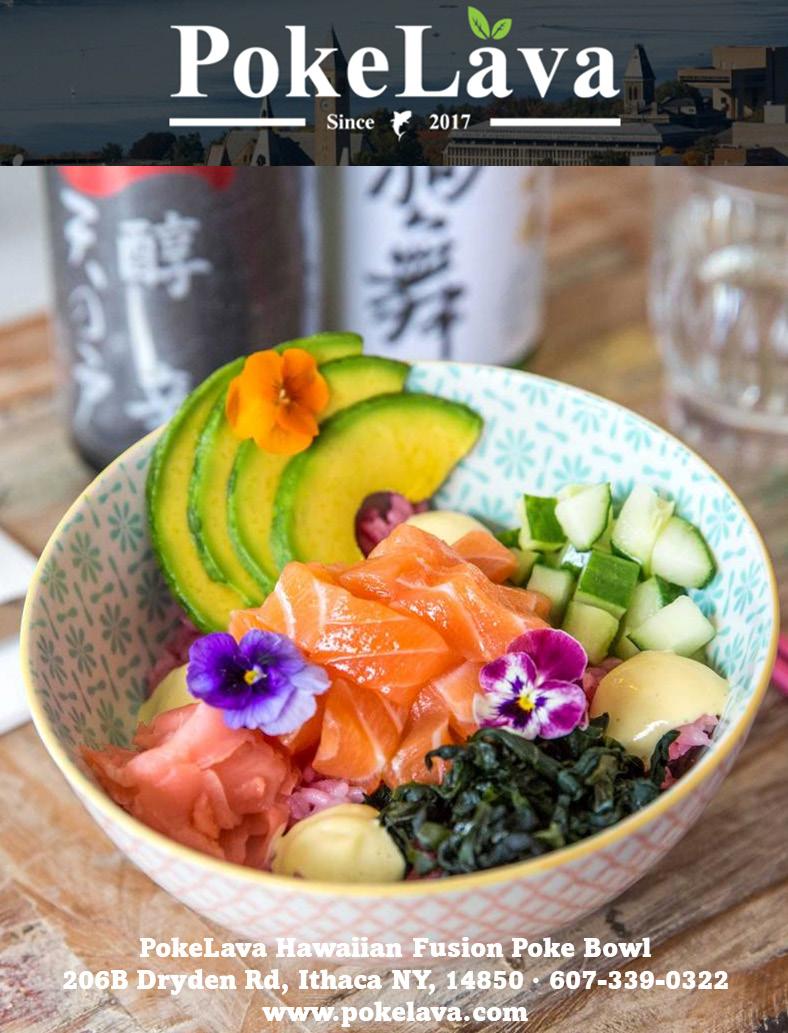
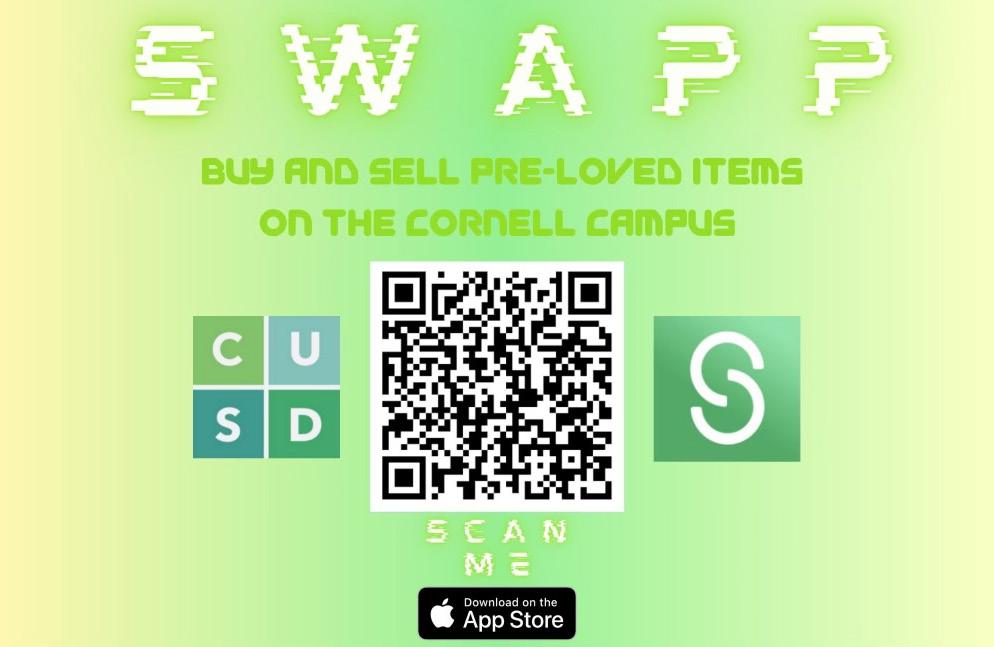
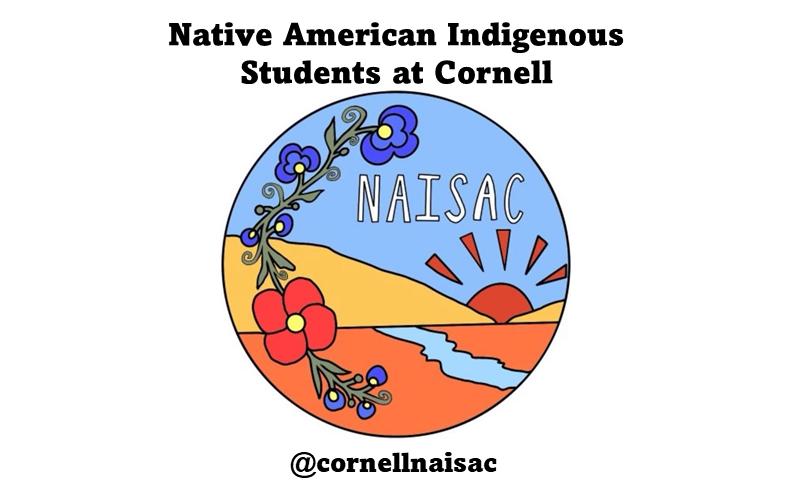
71





















































































































